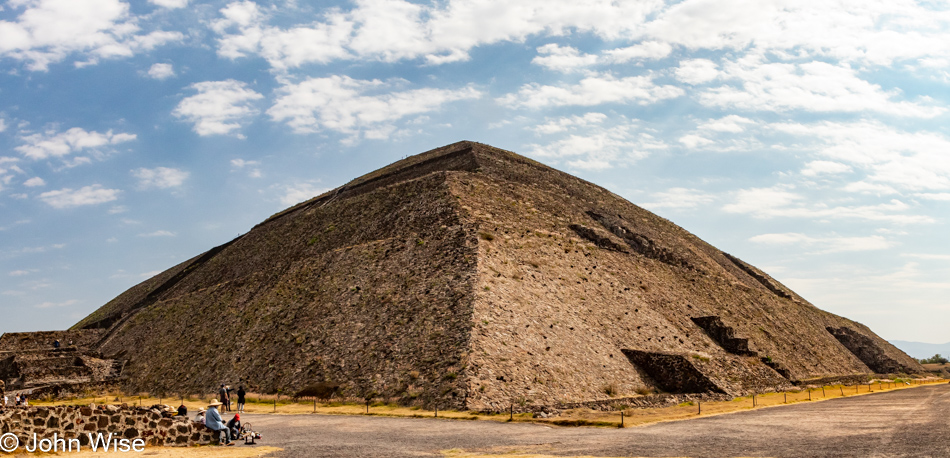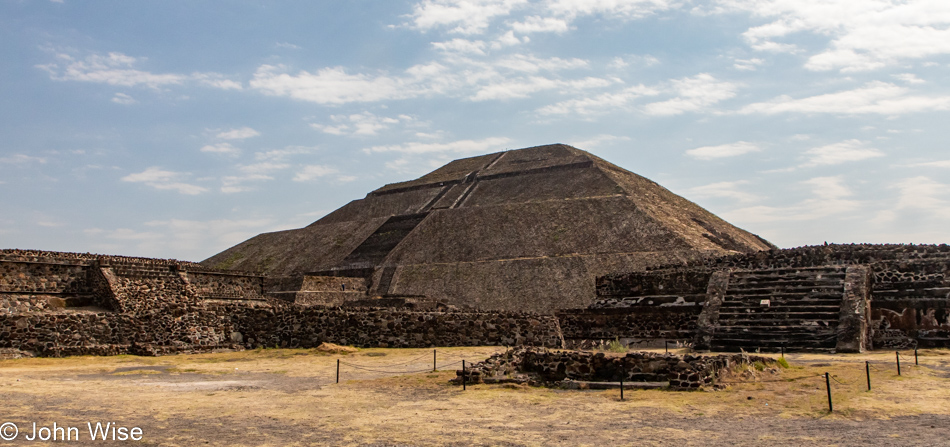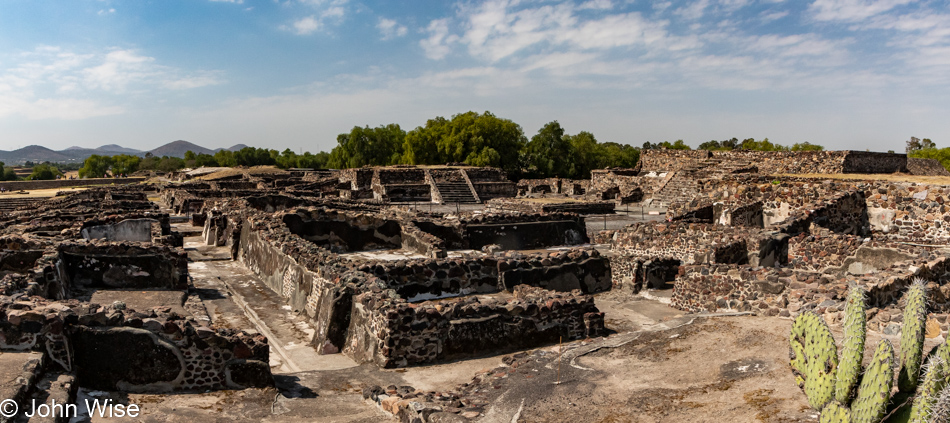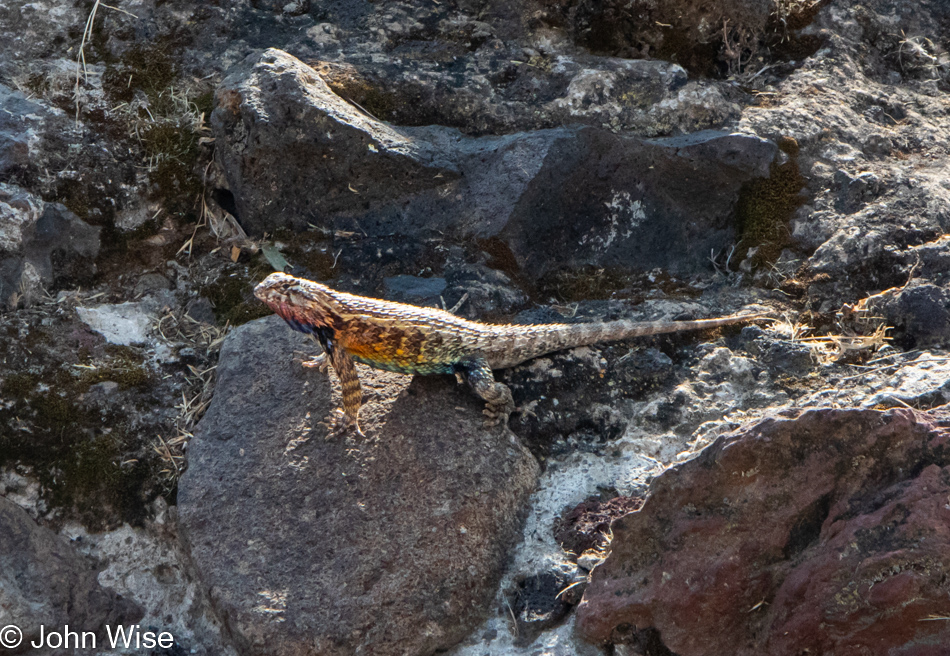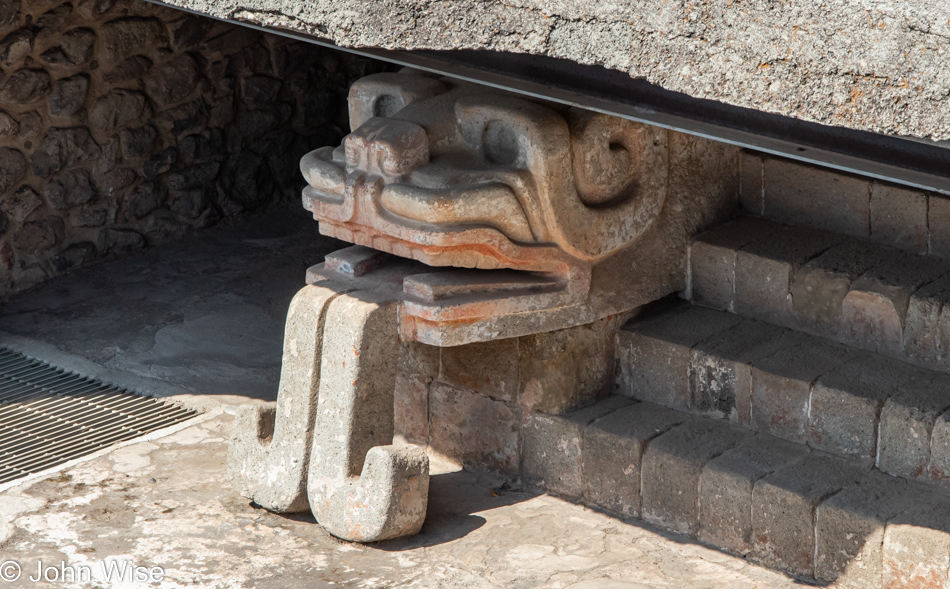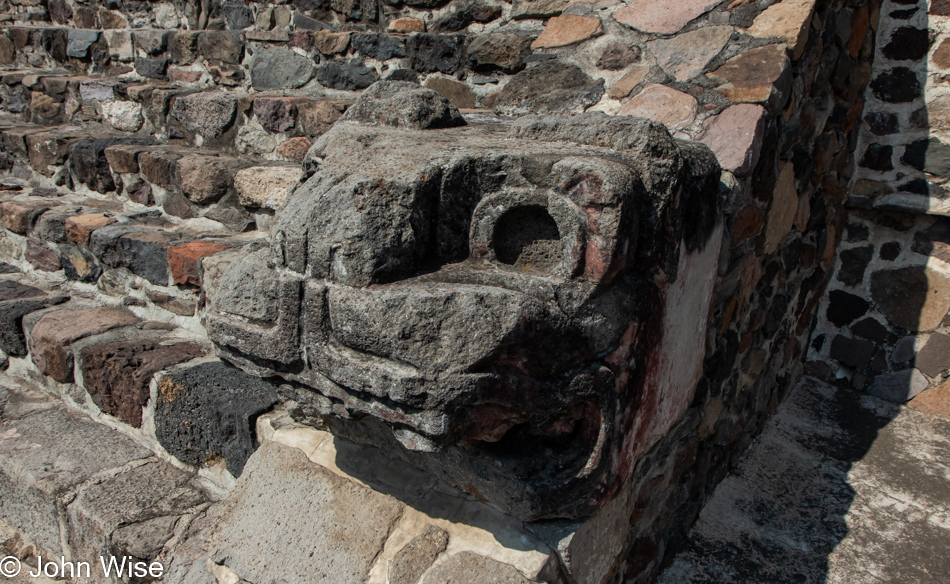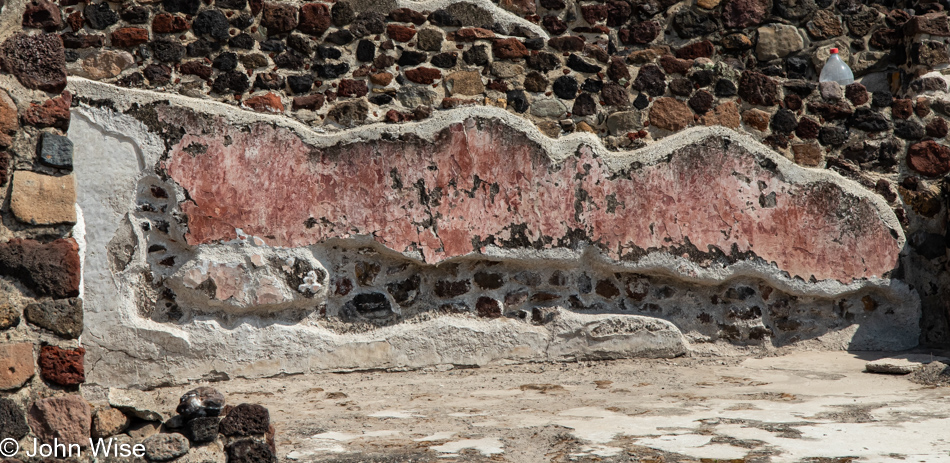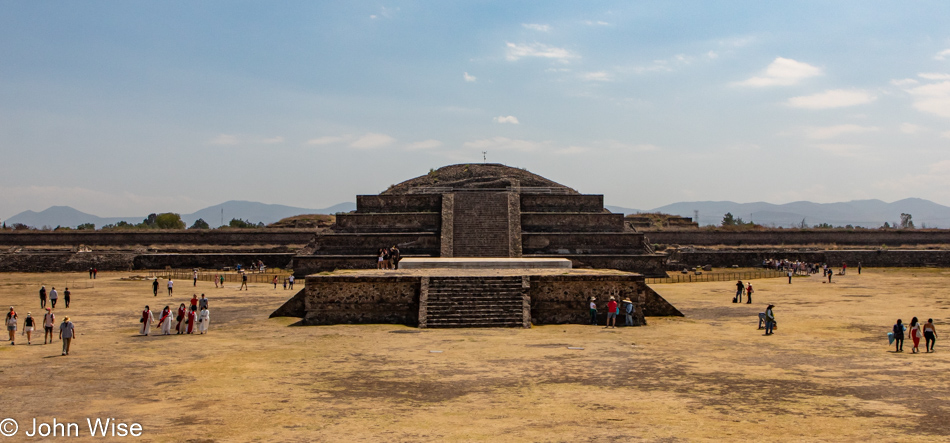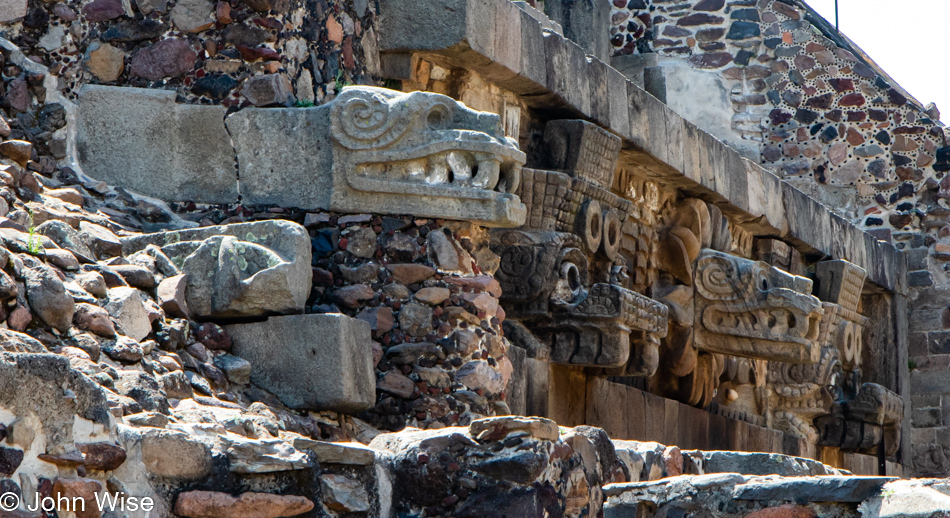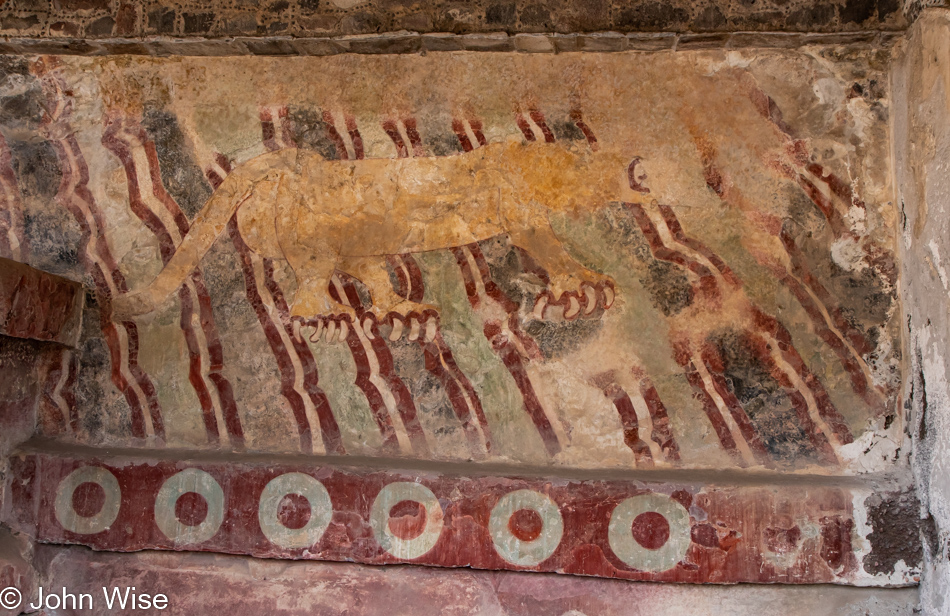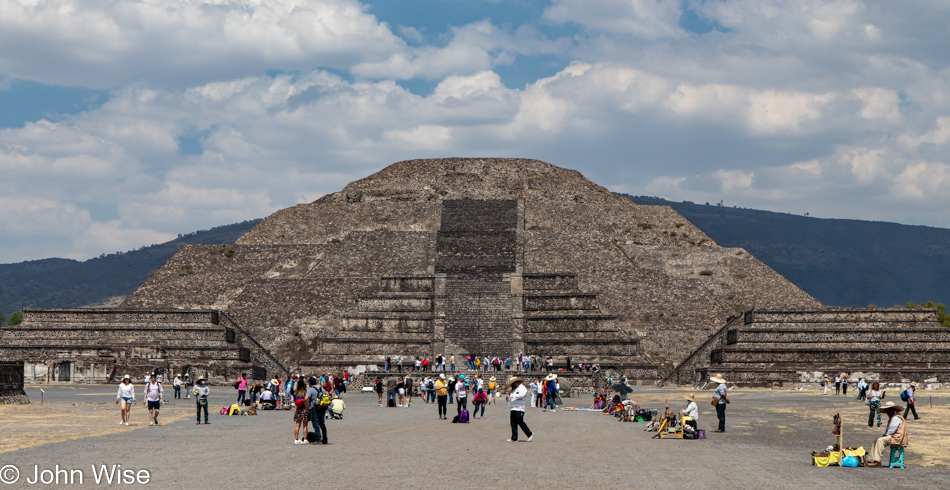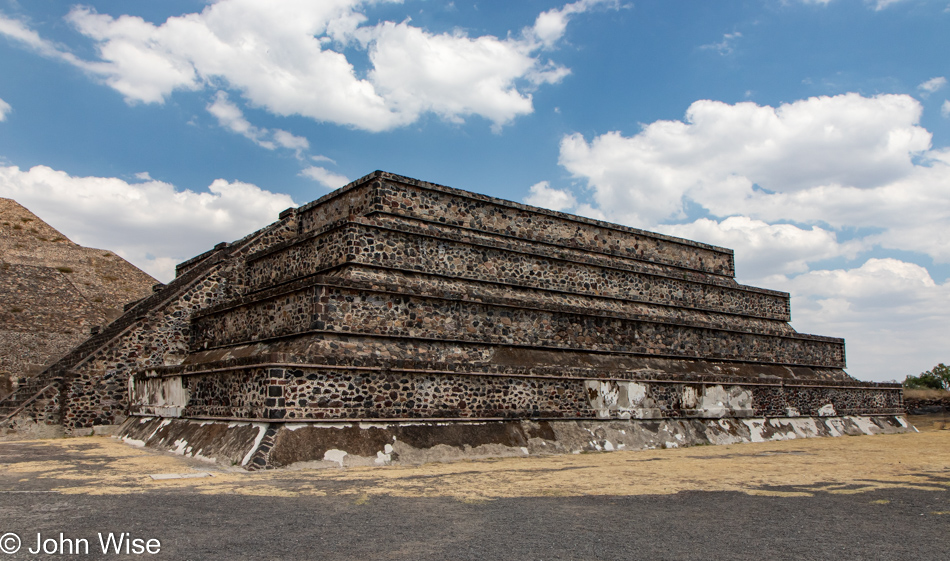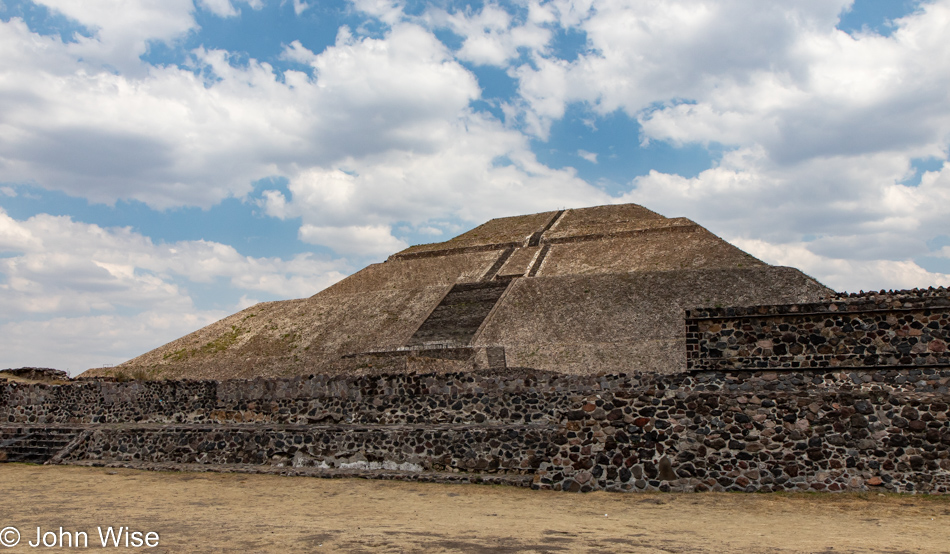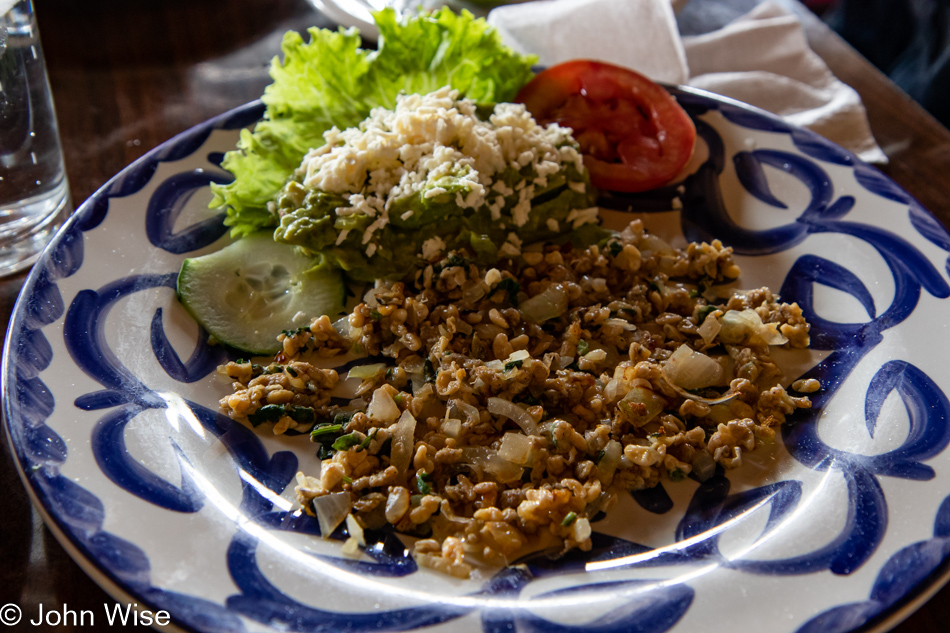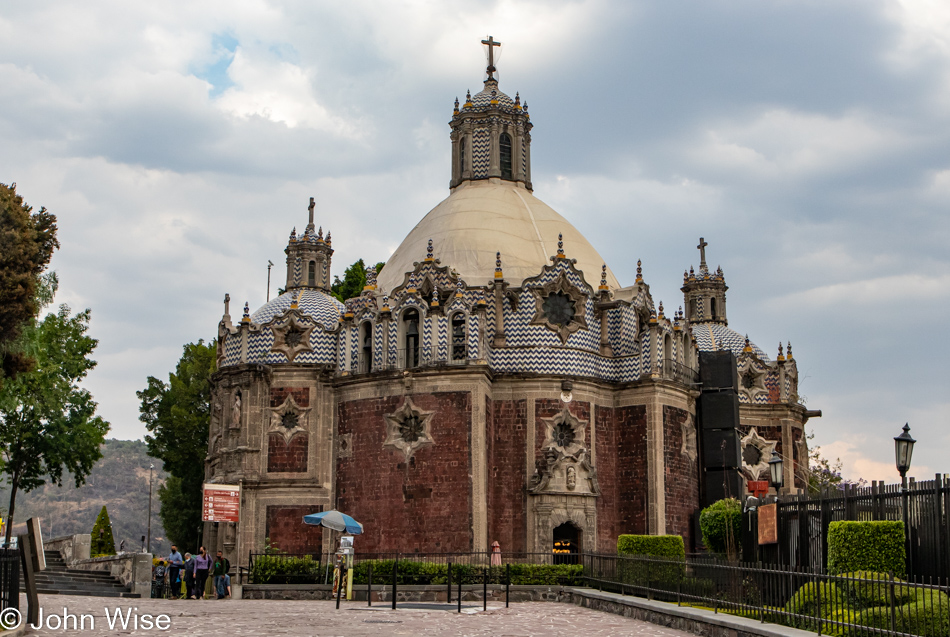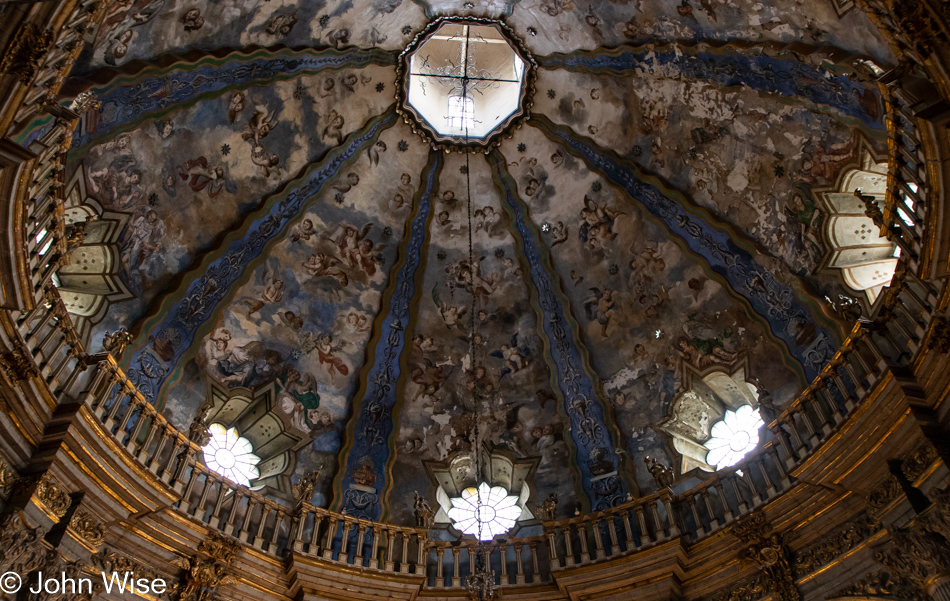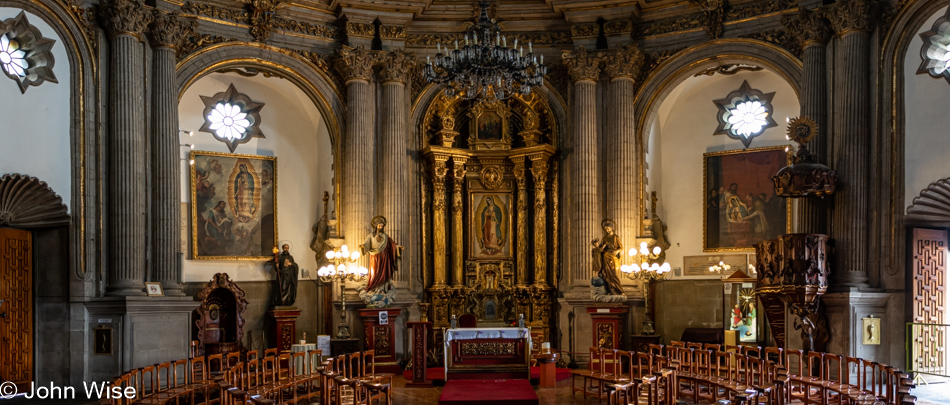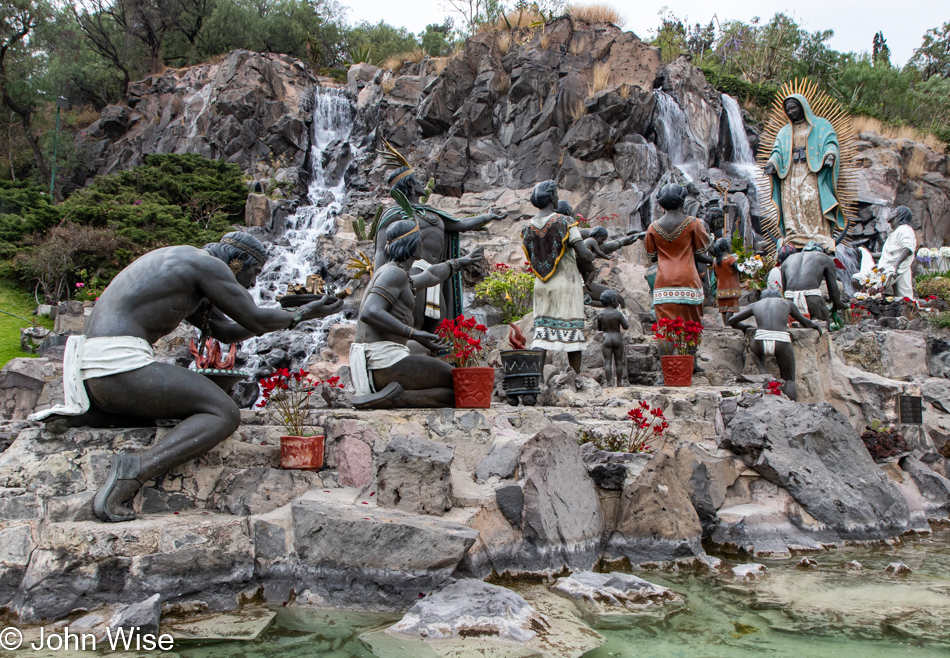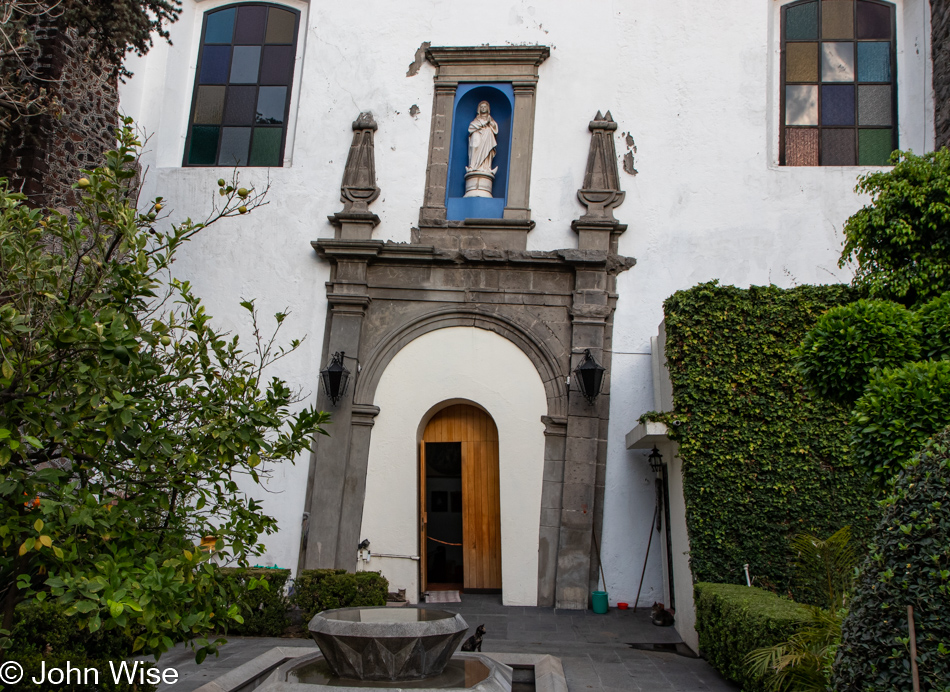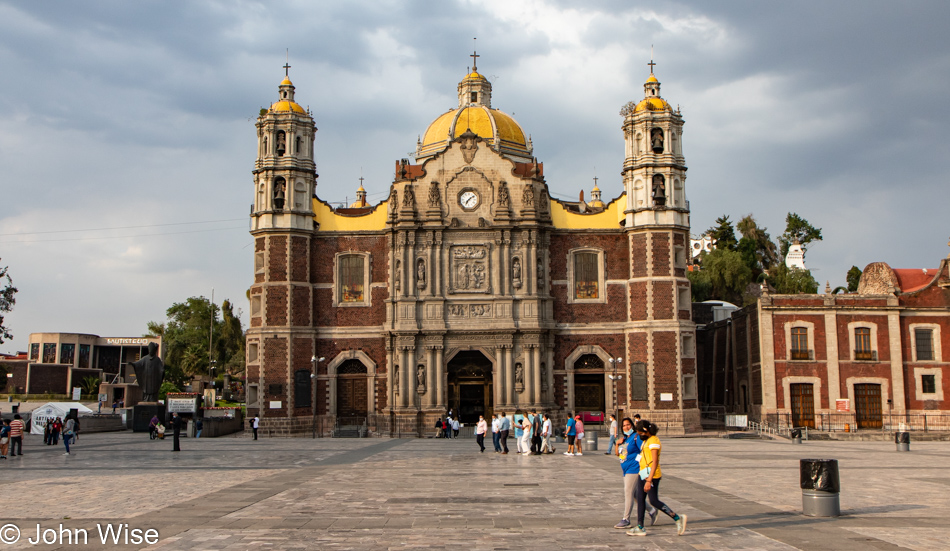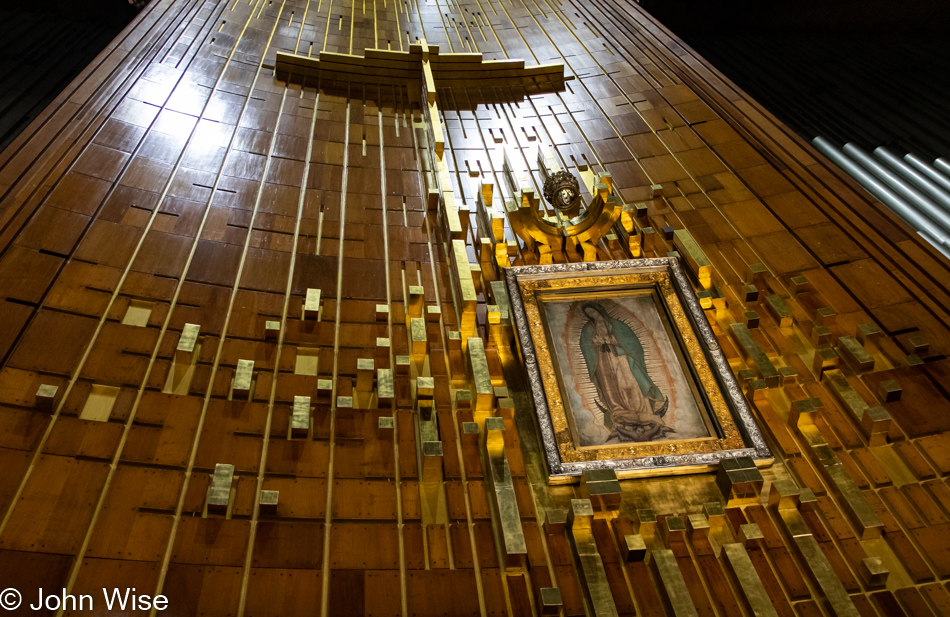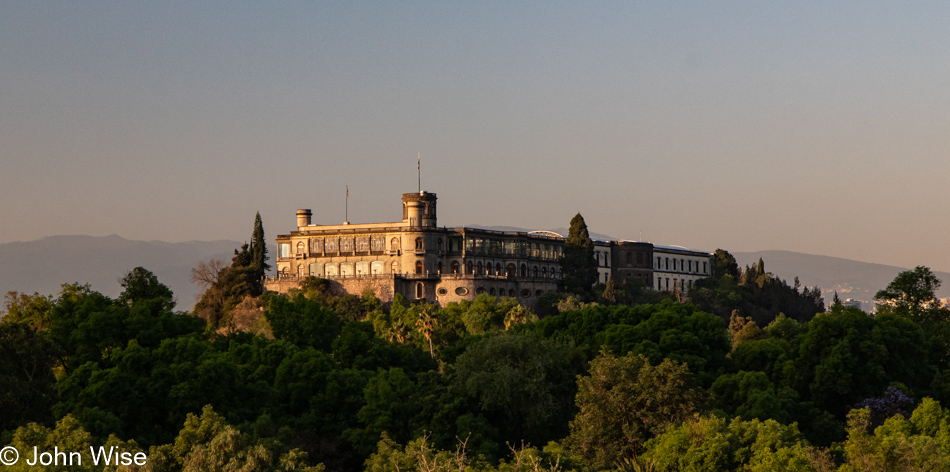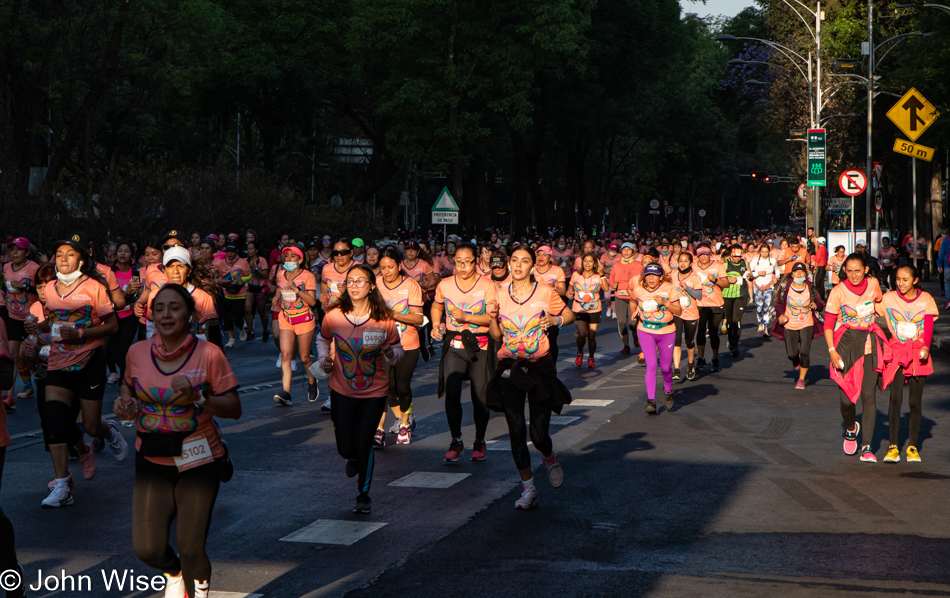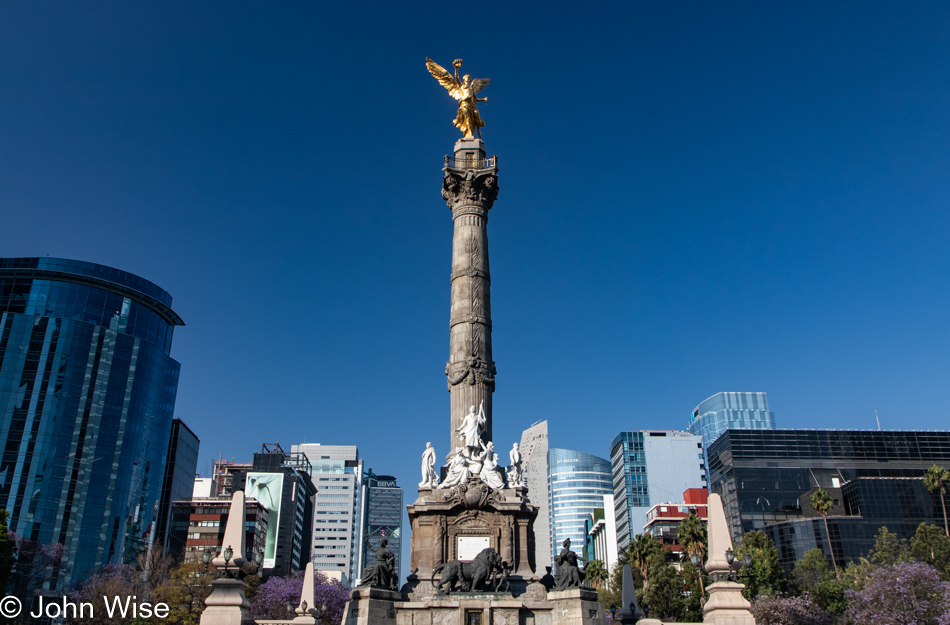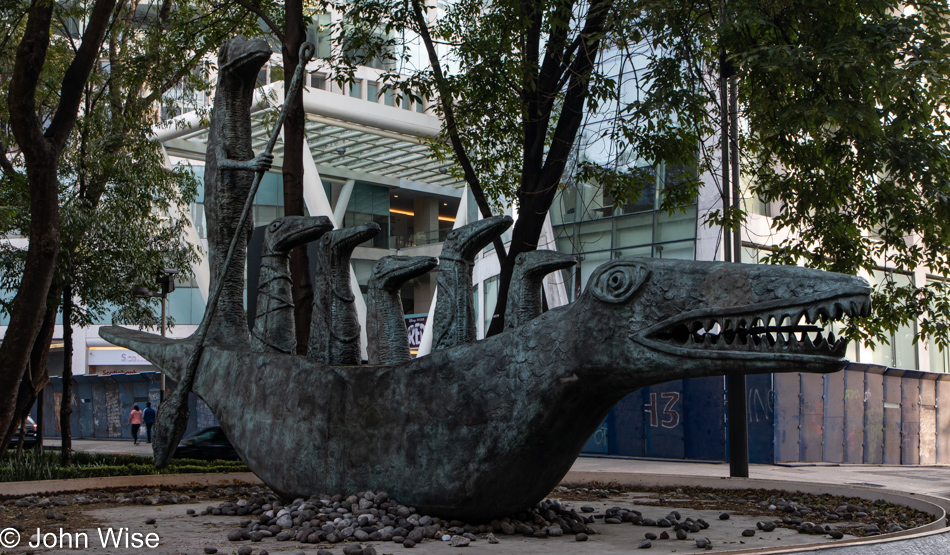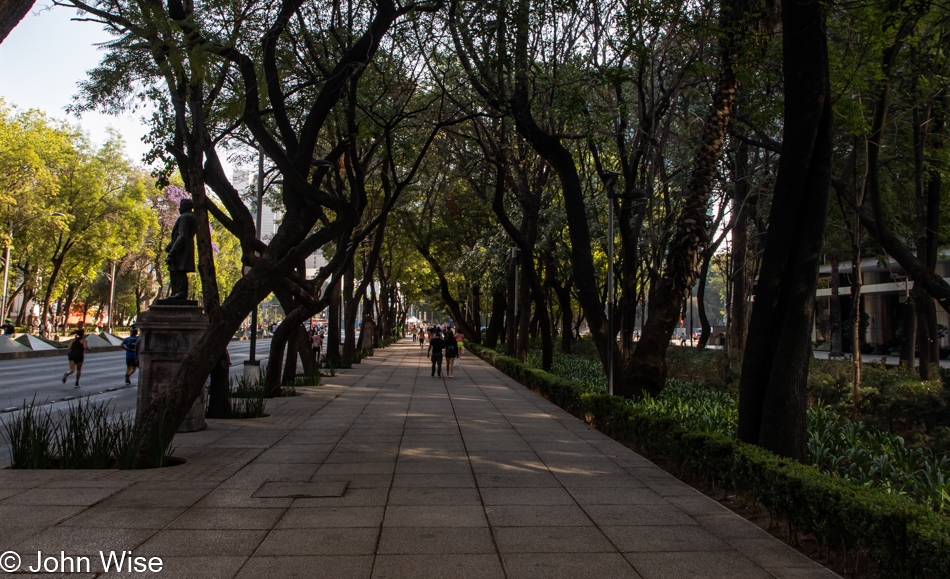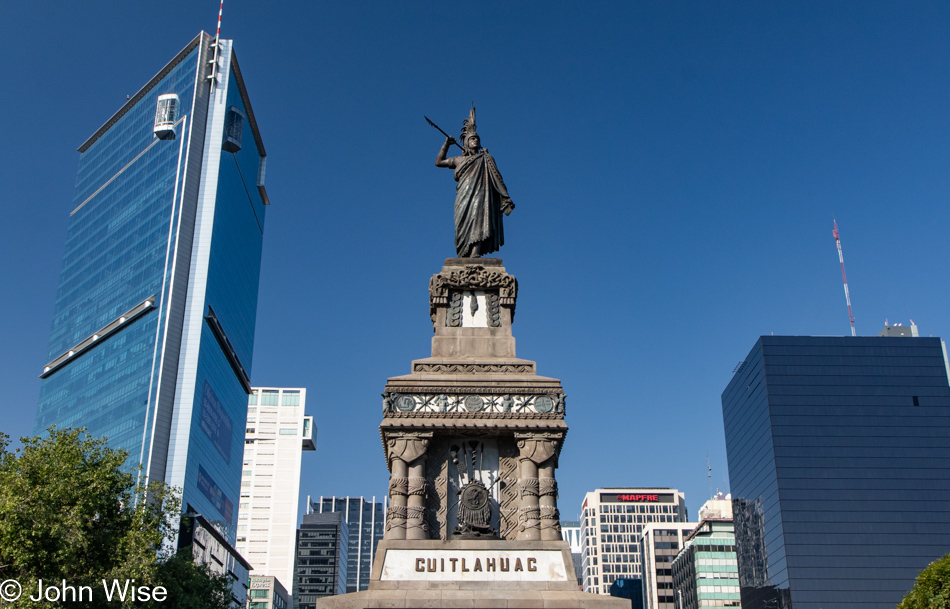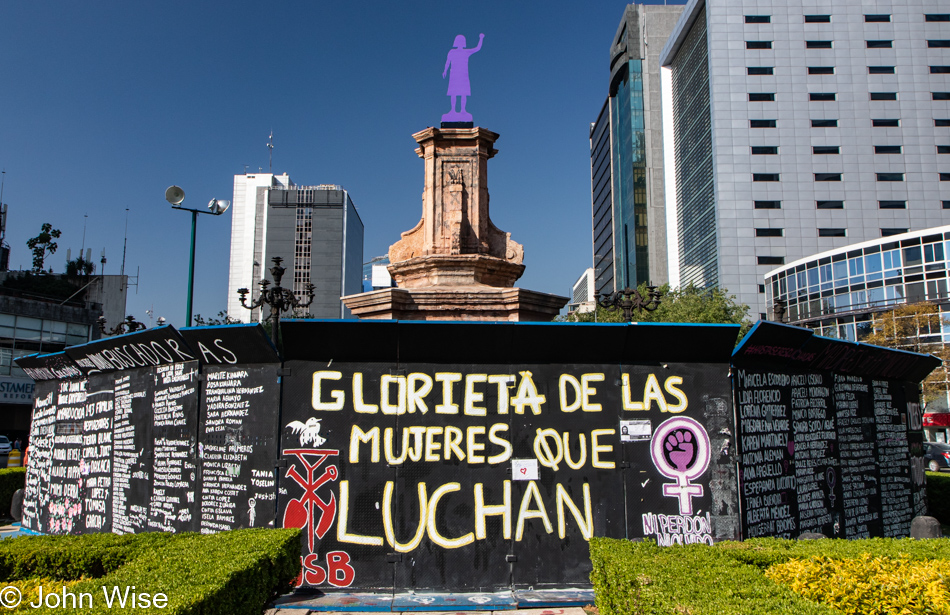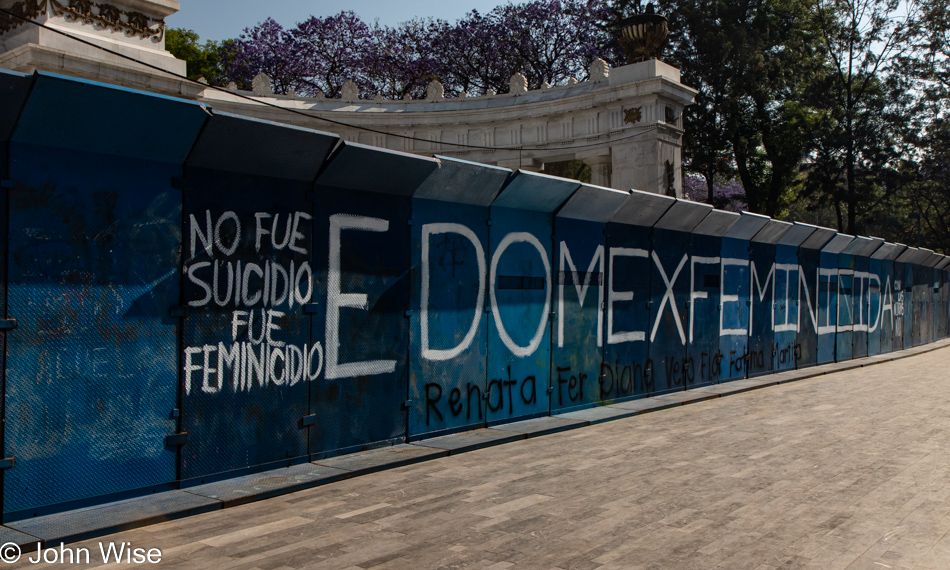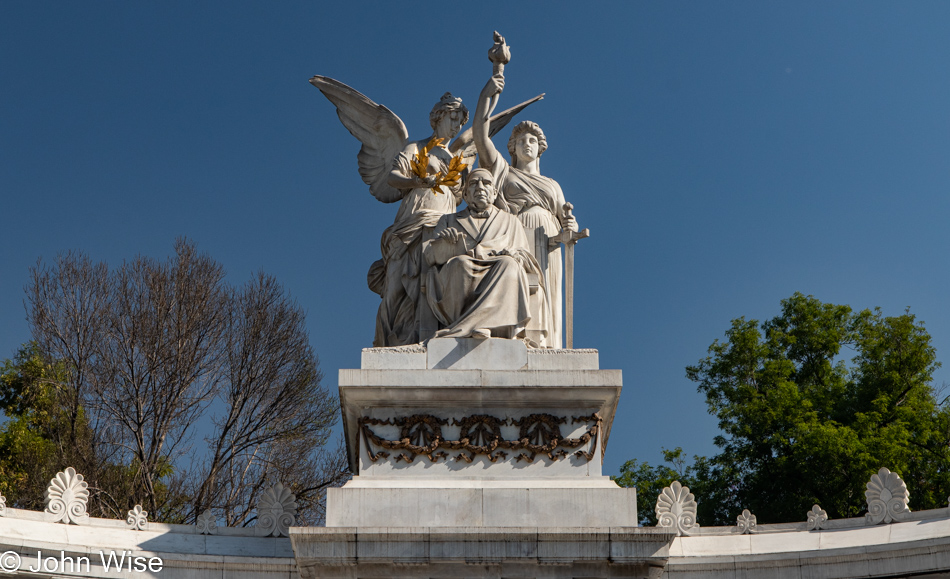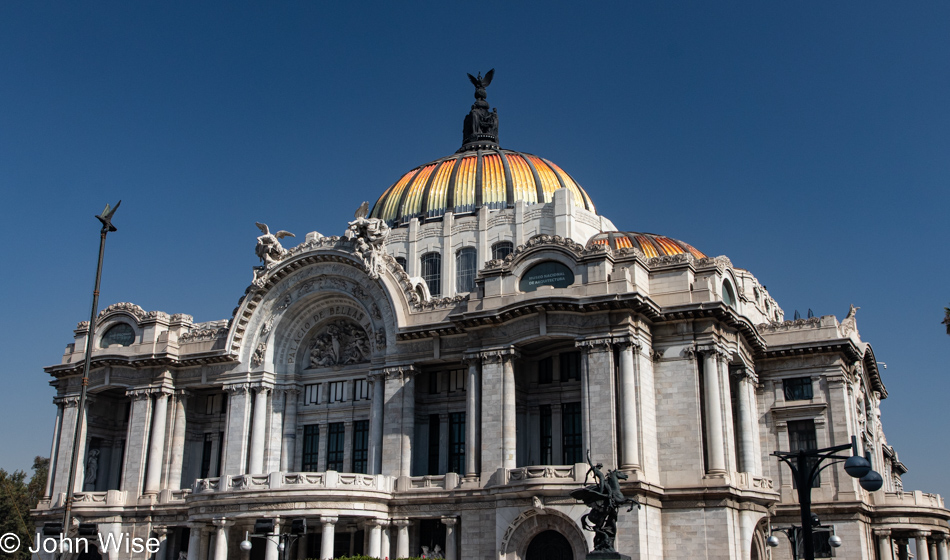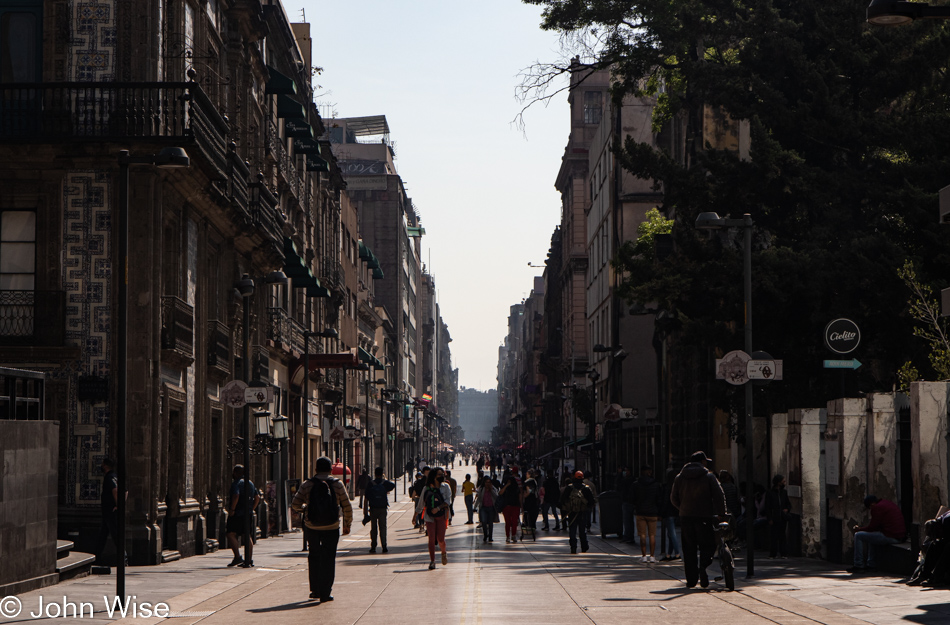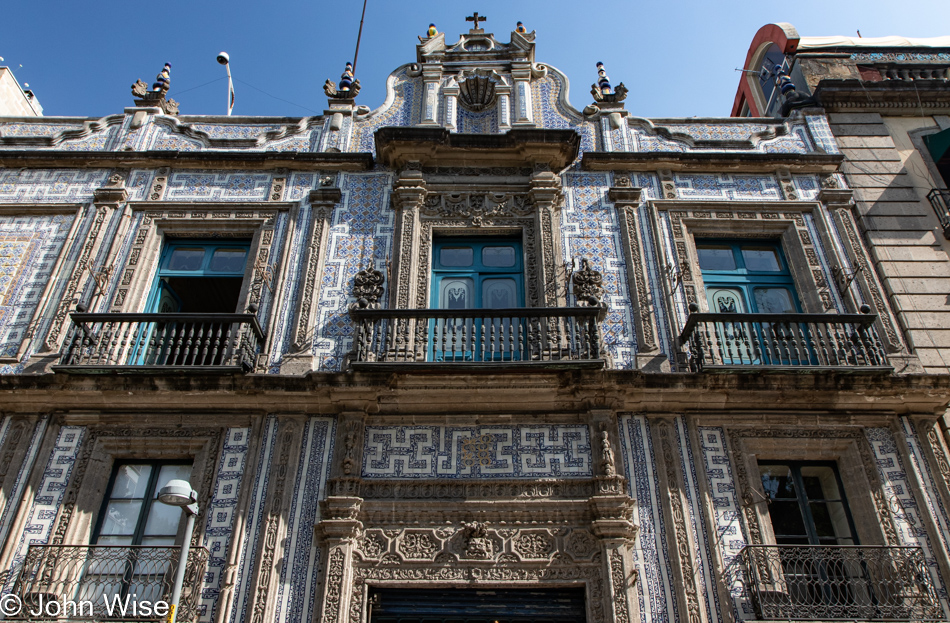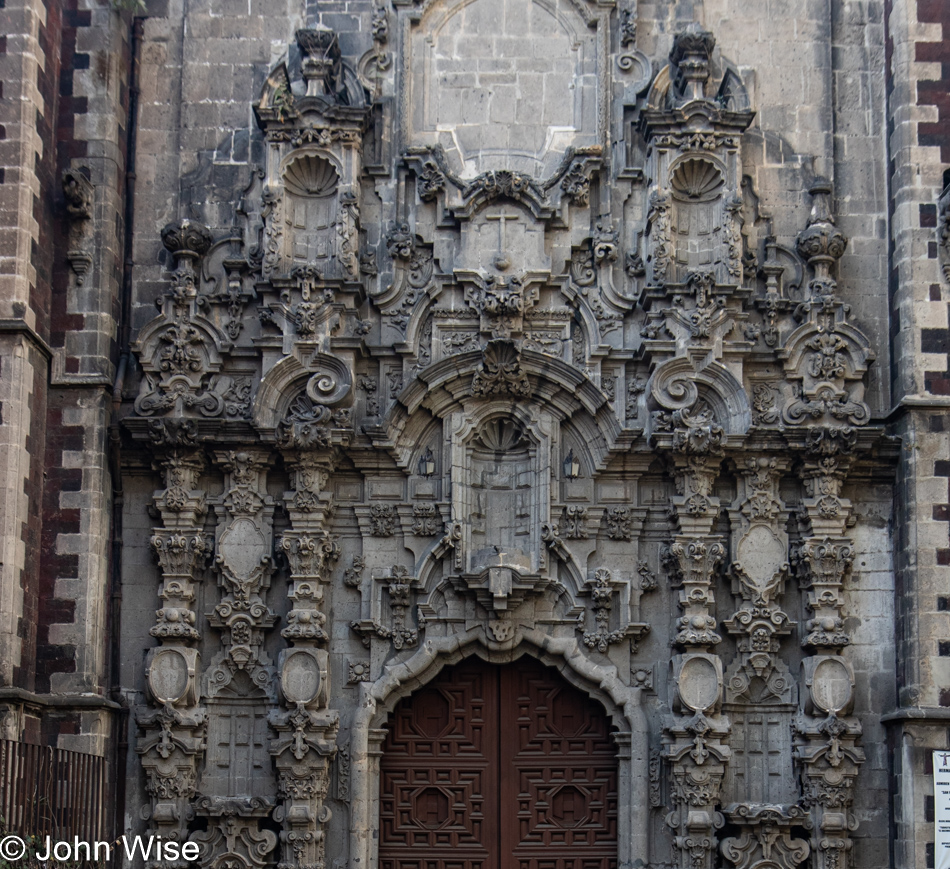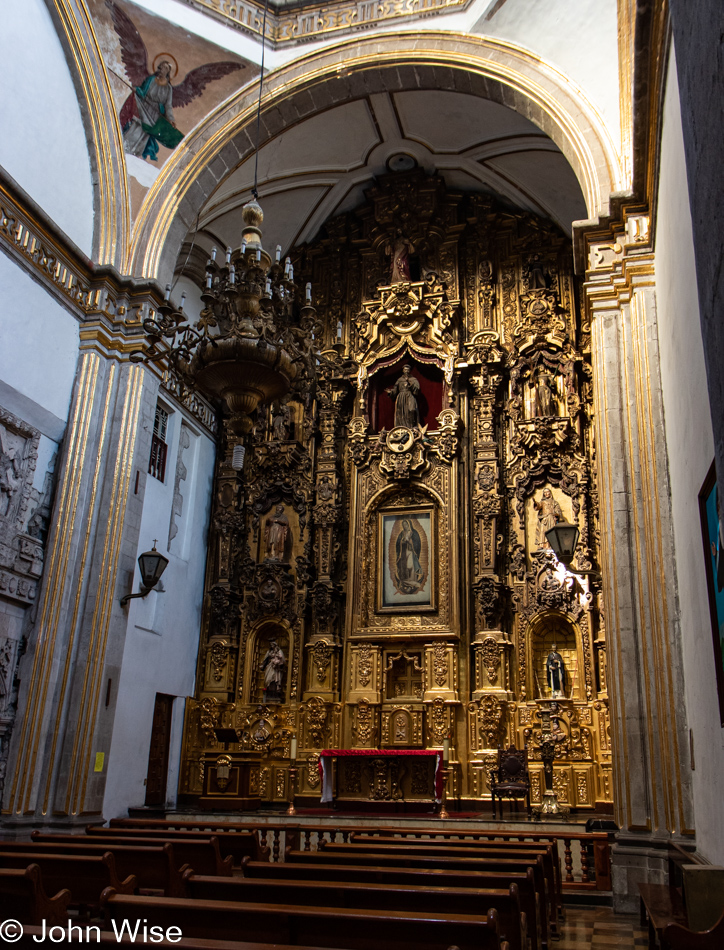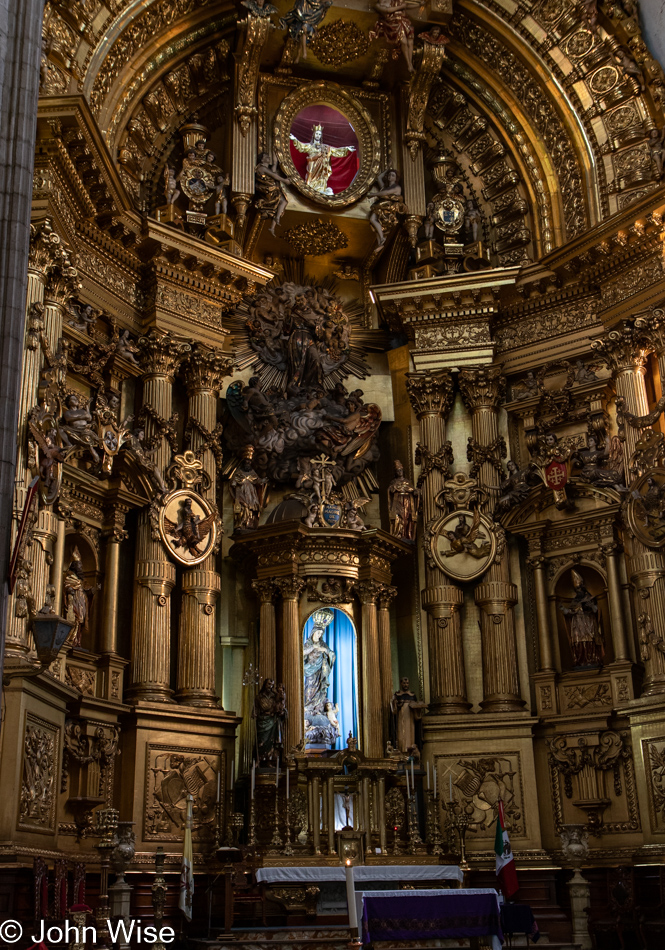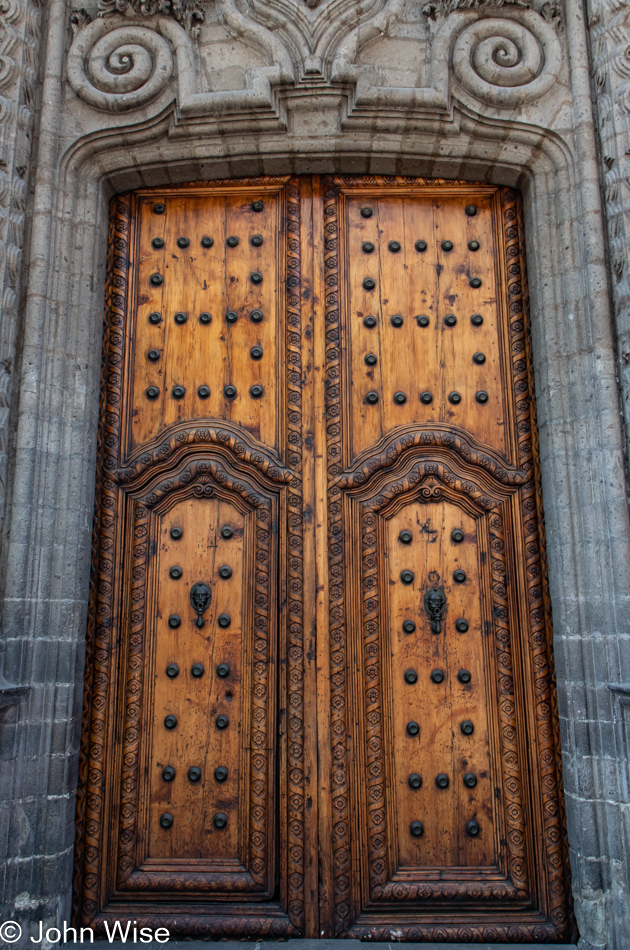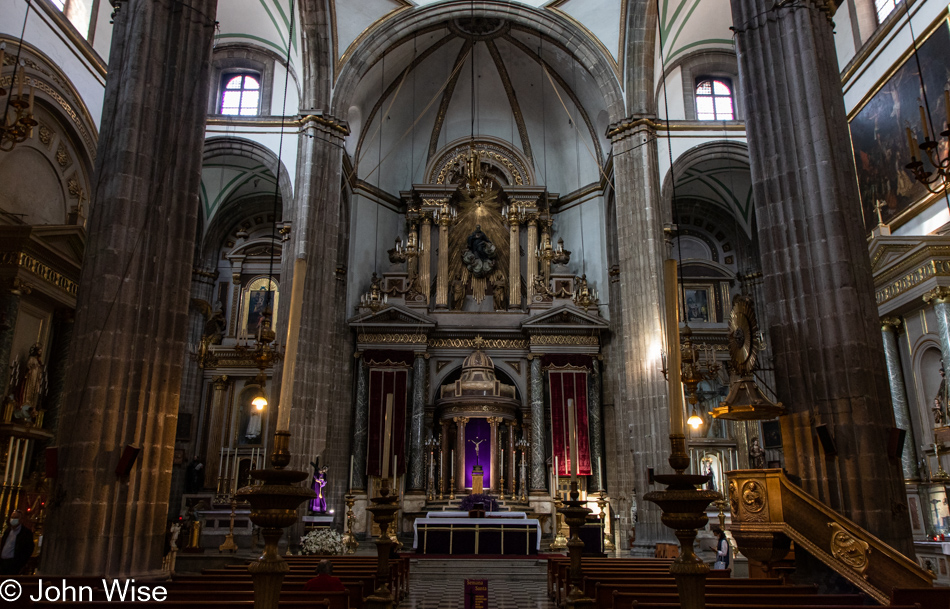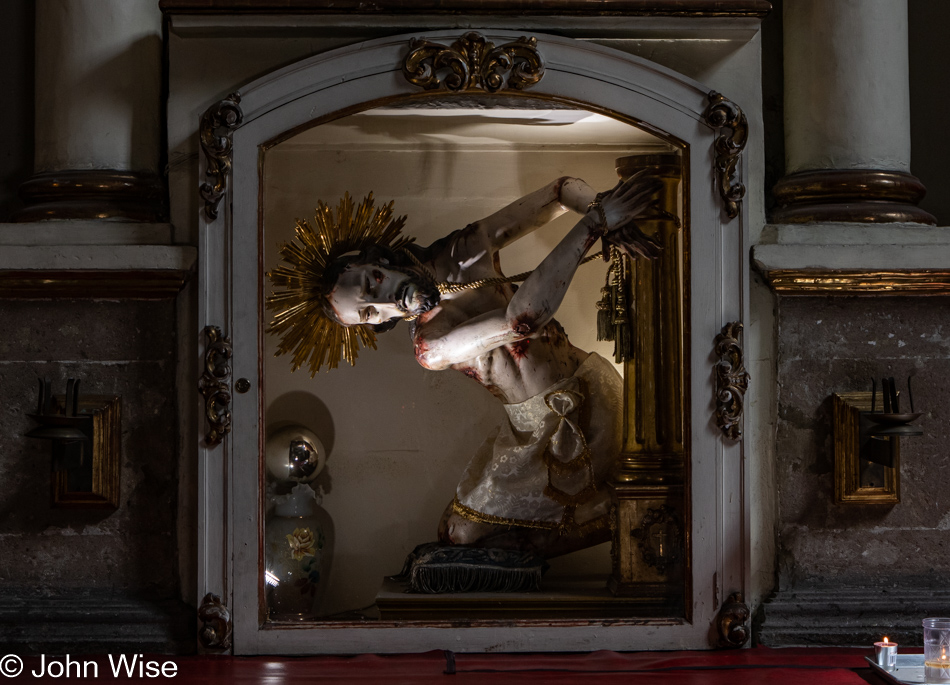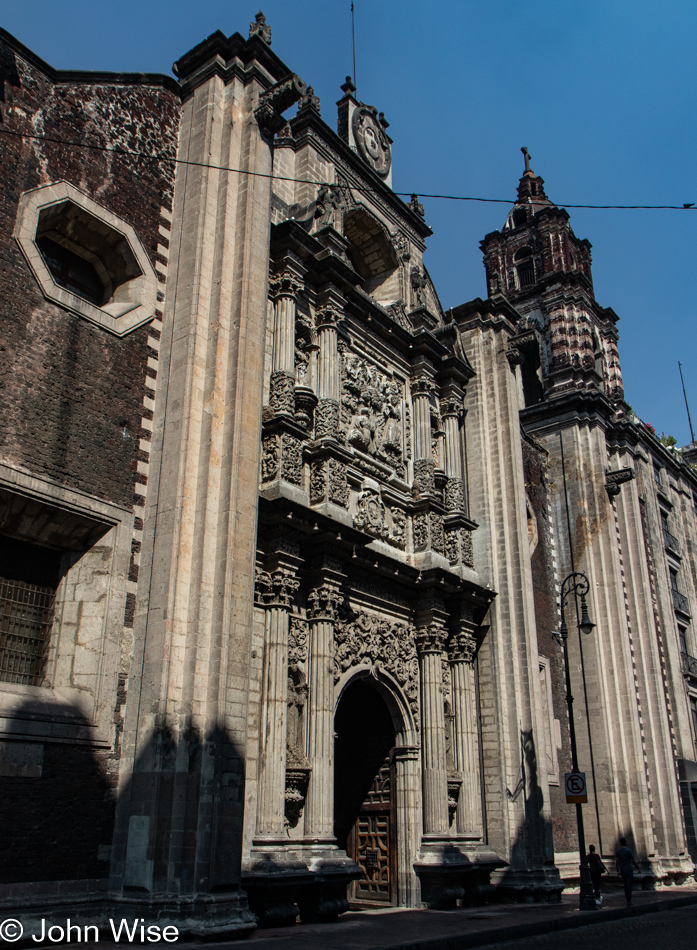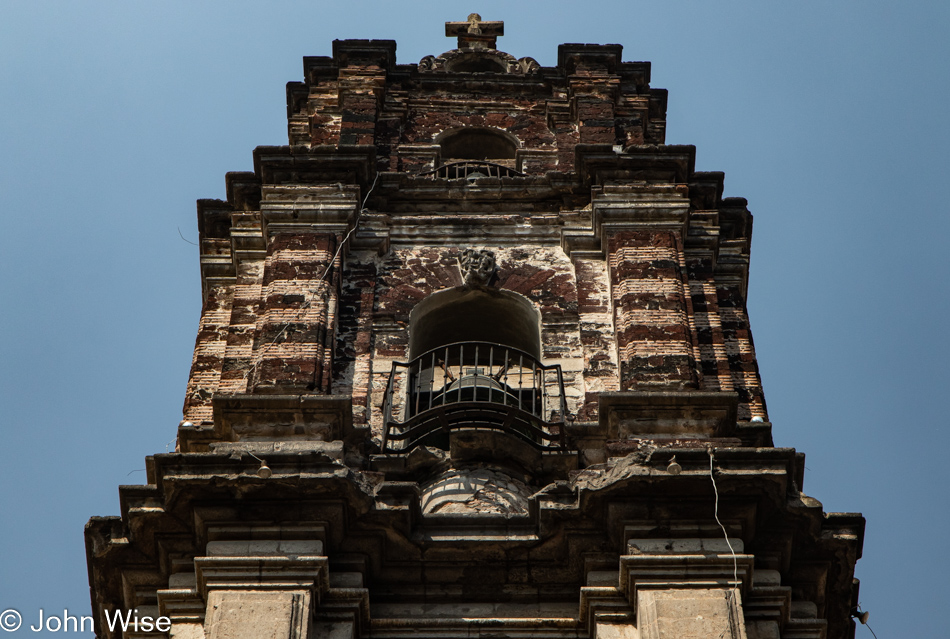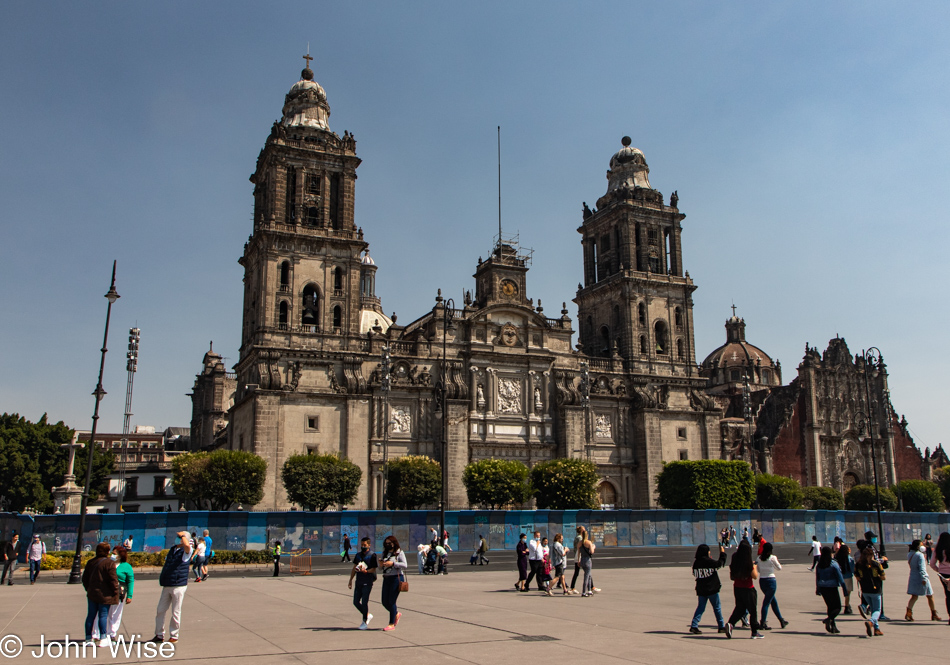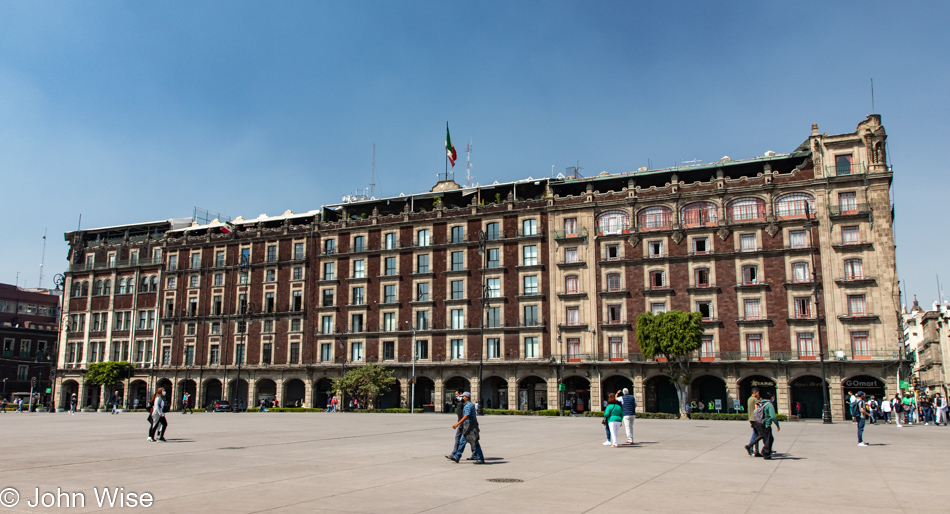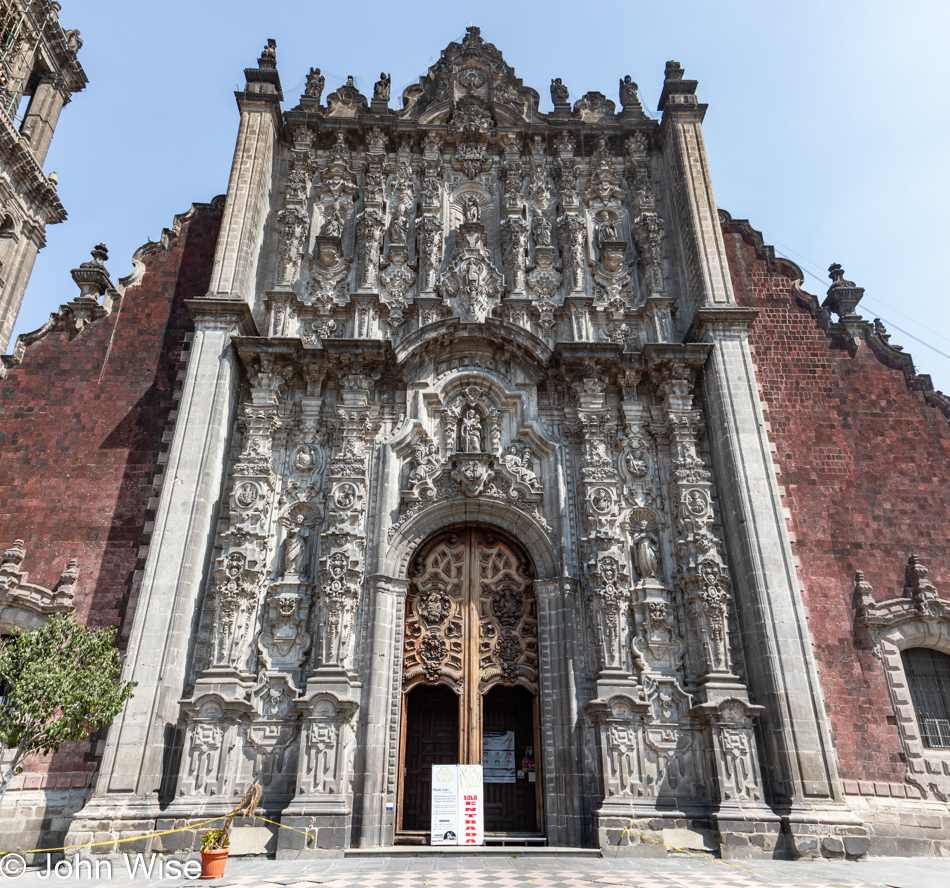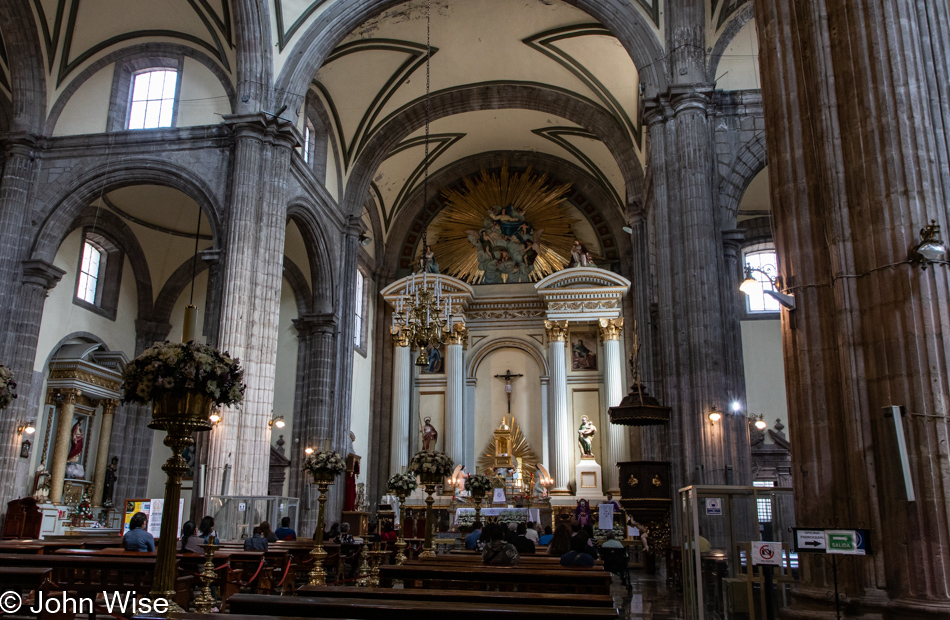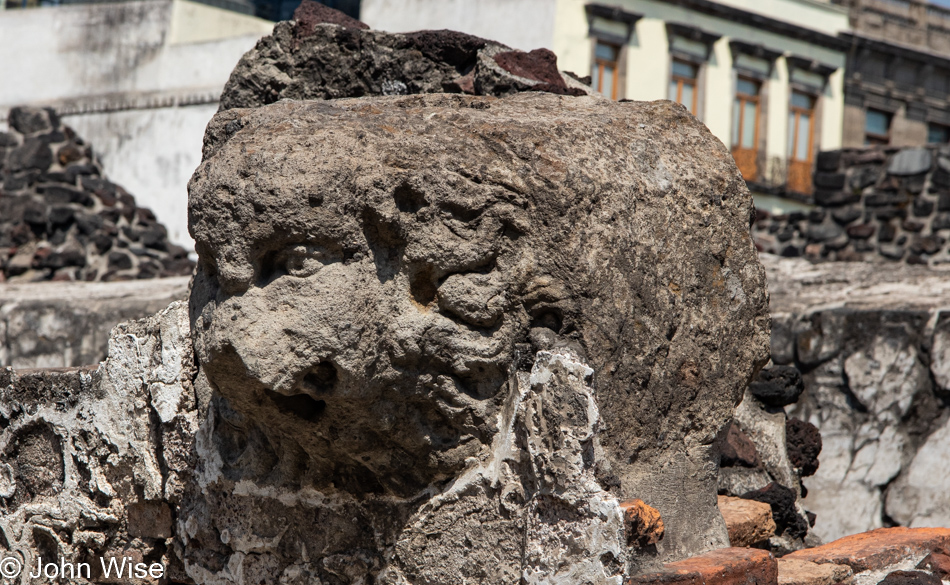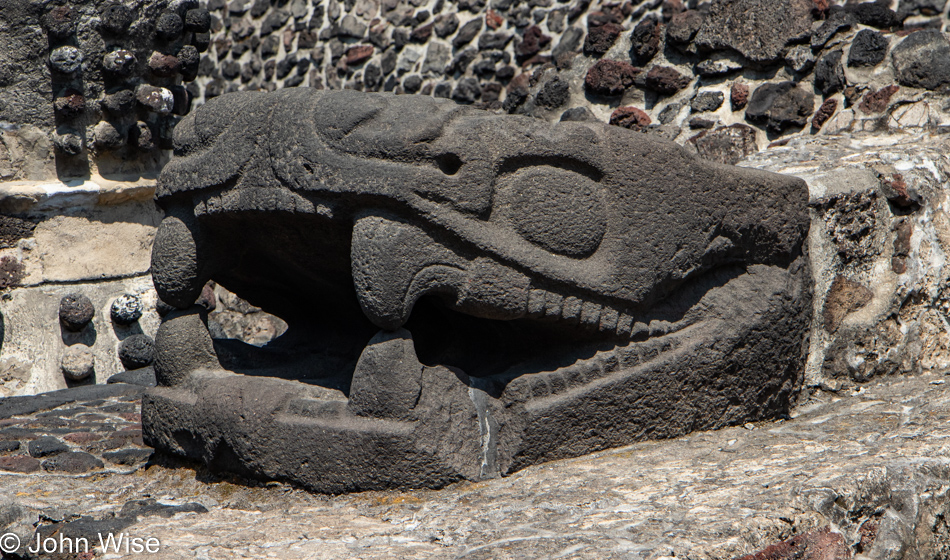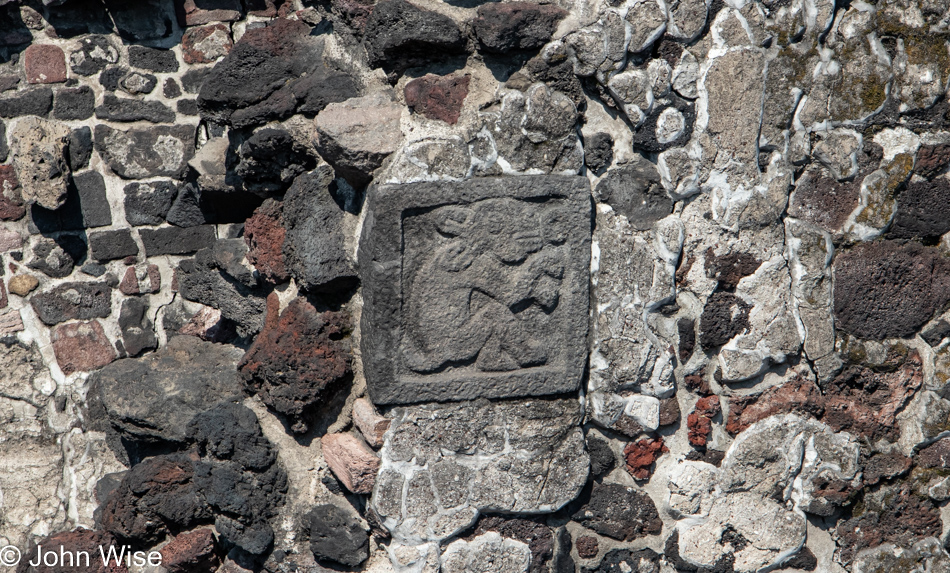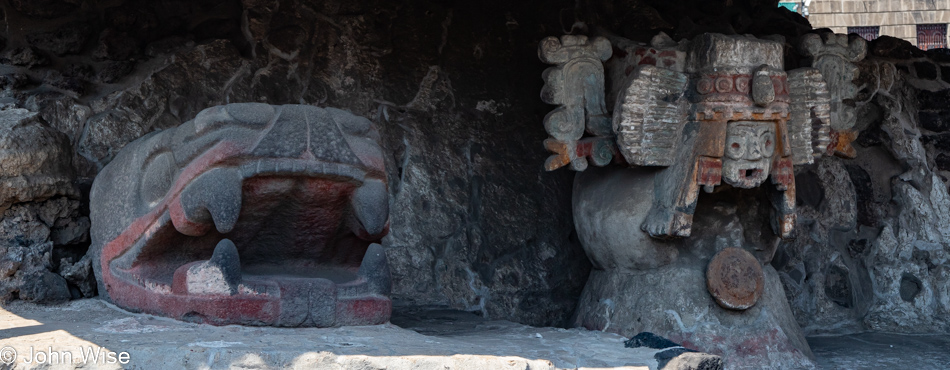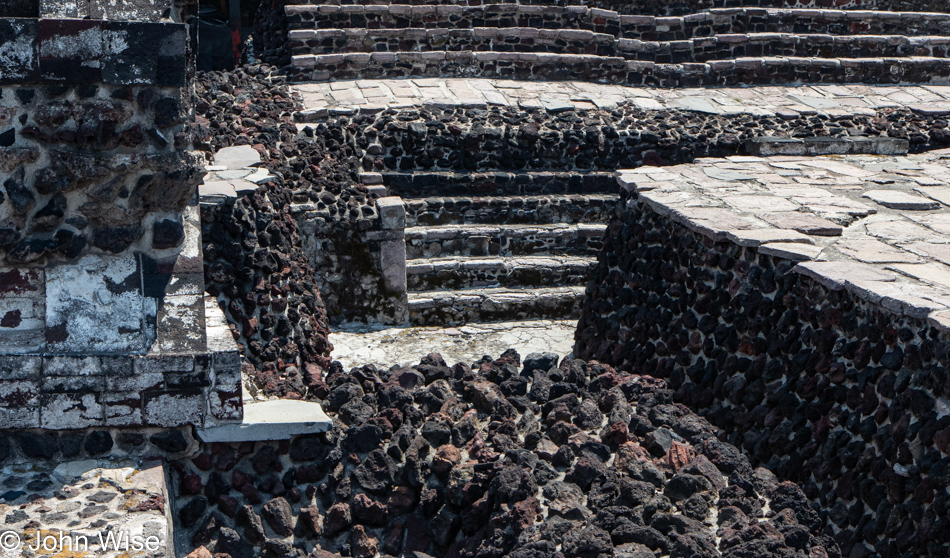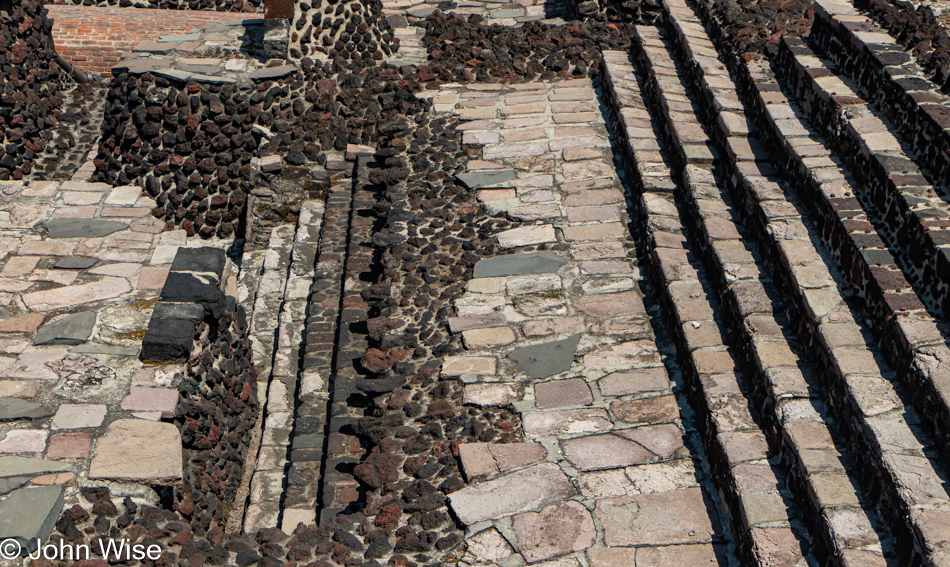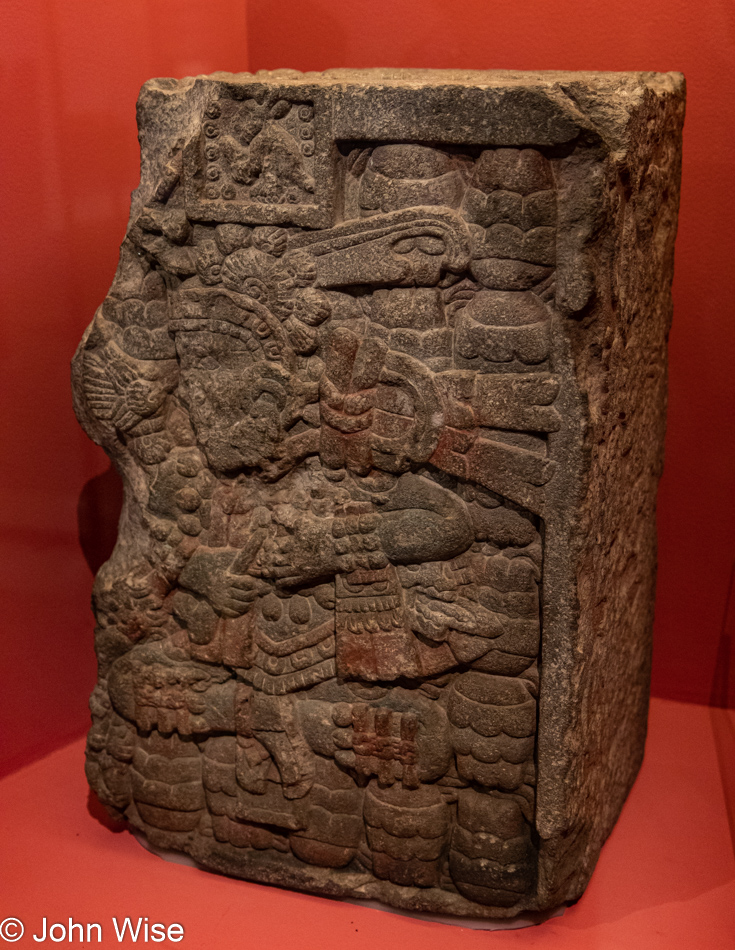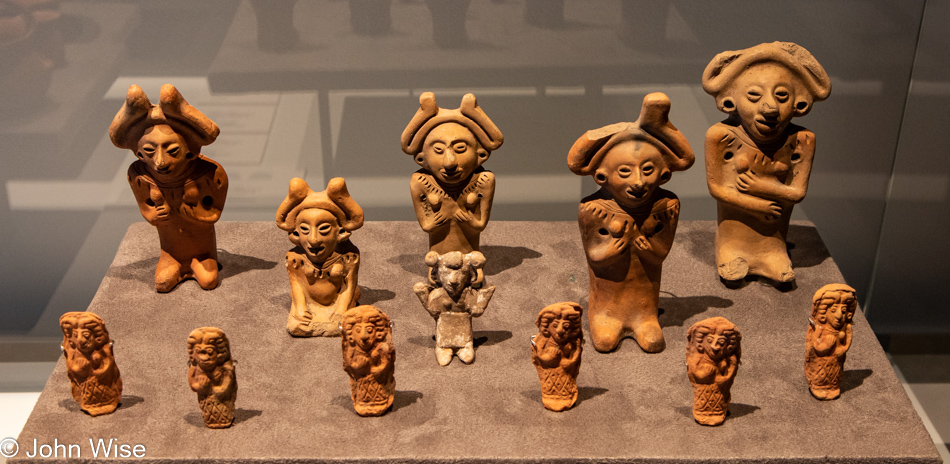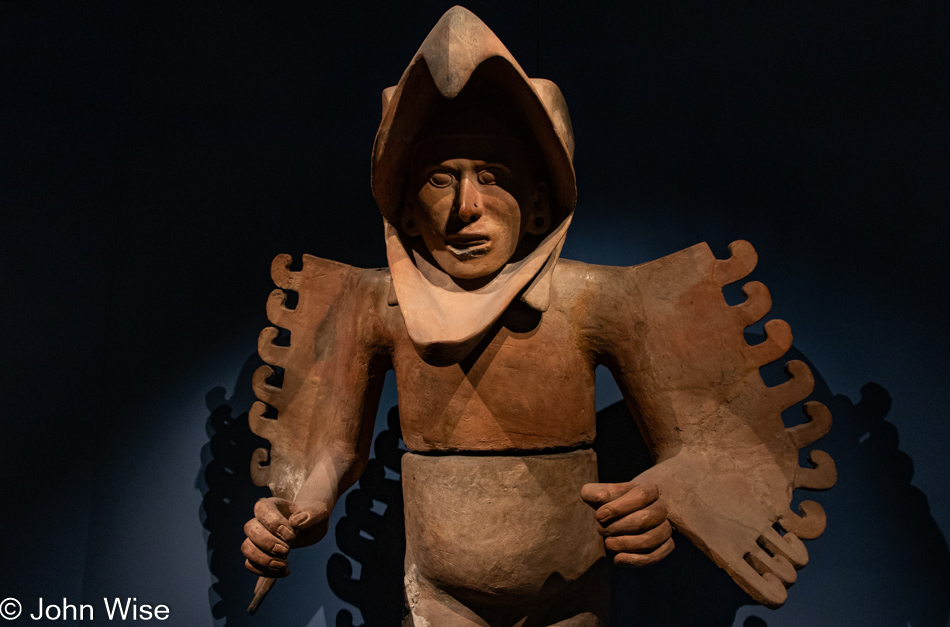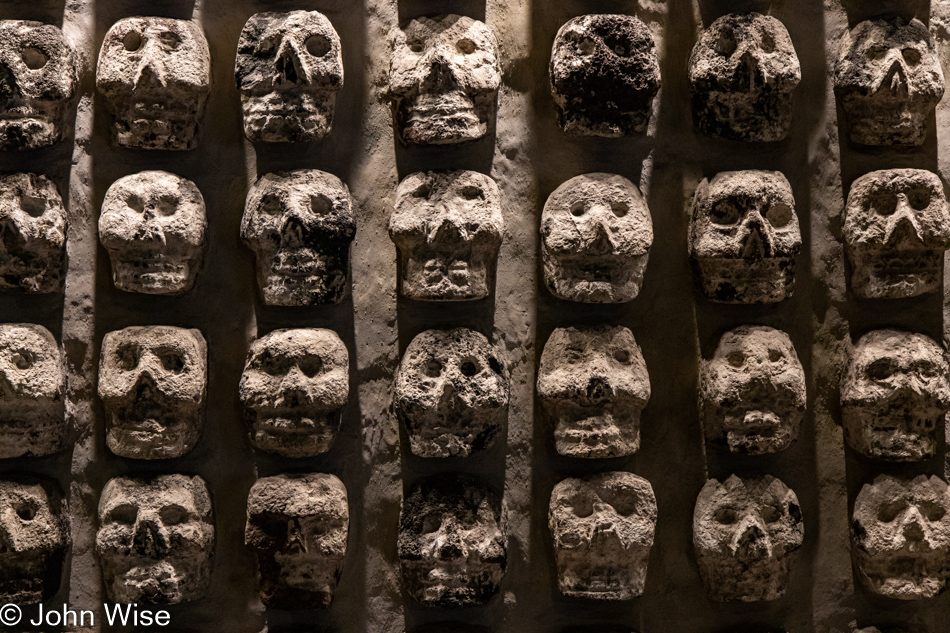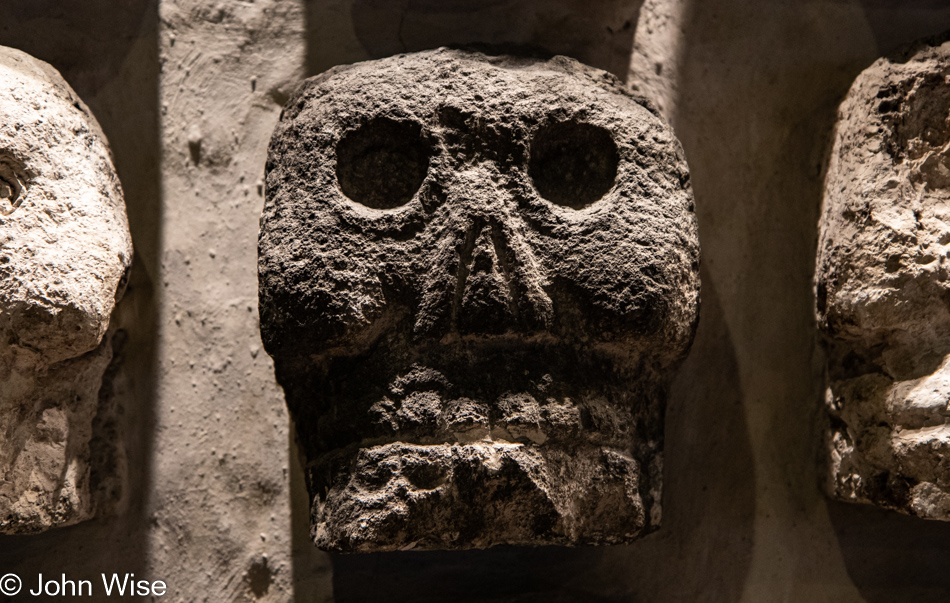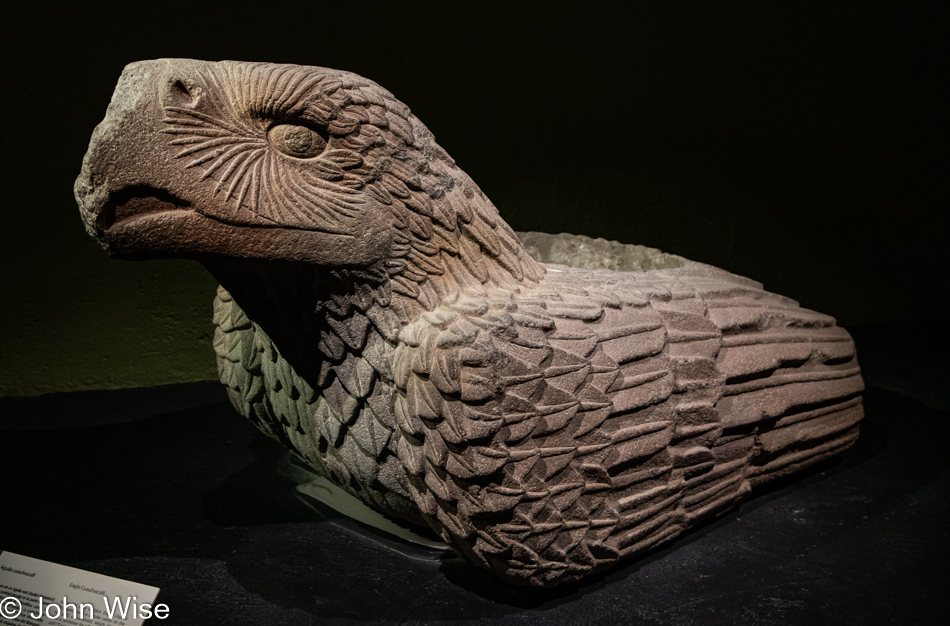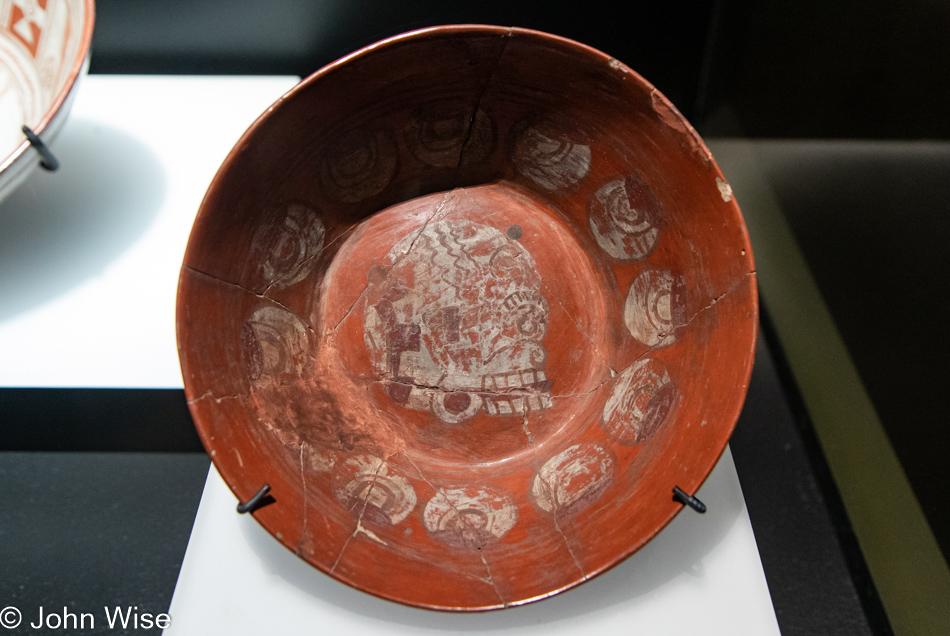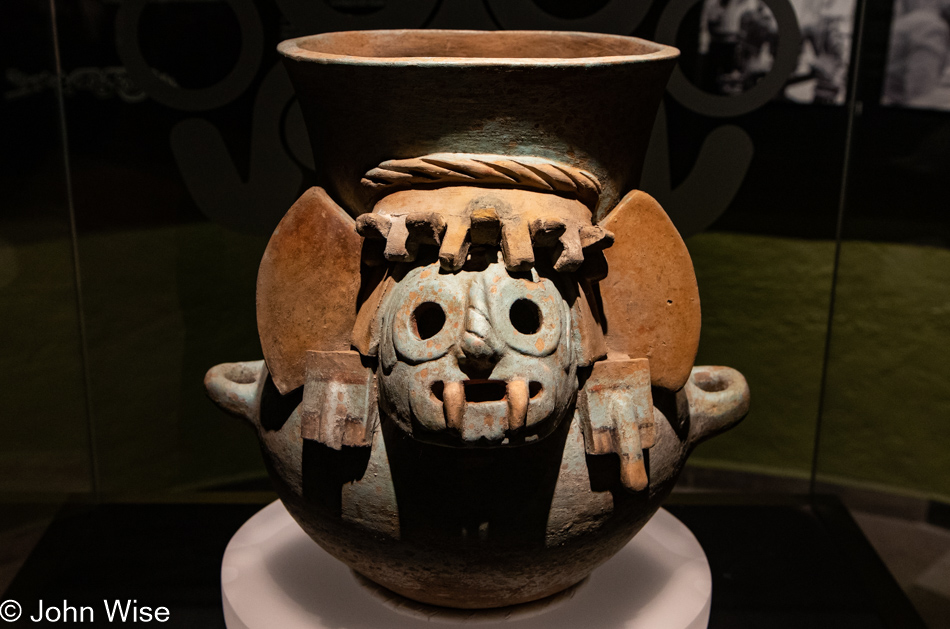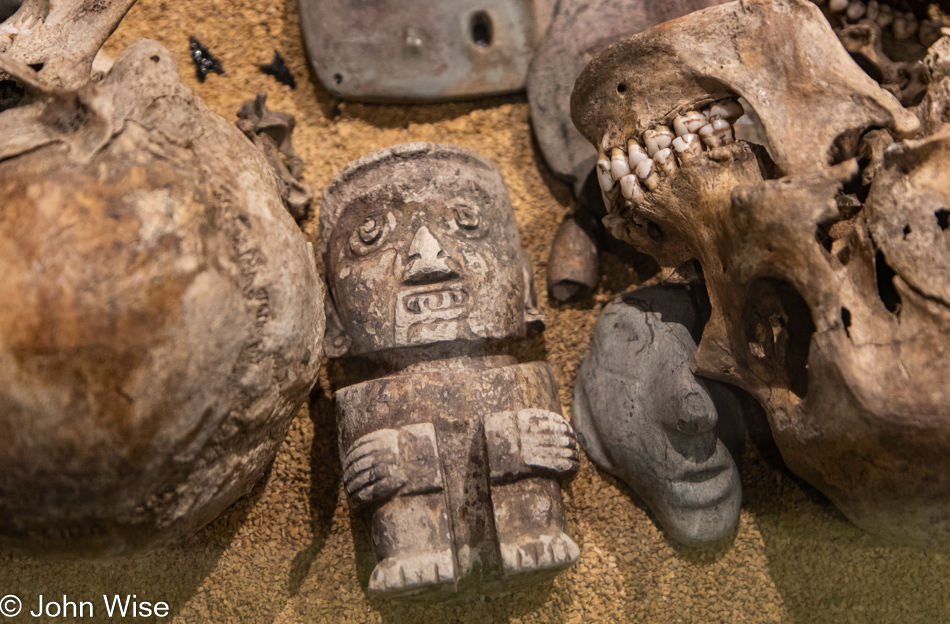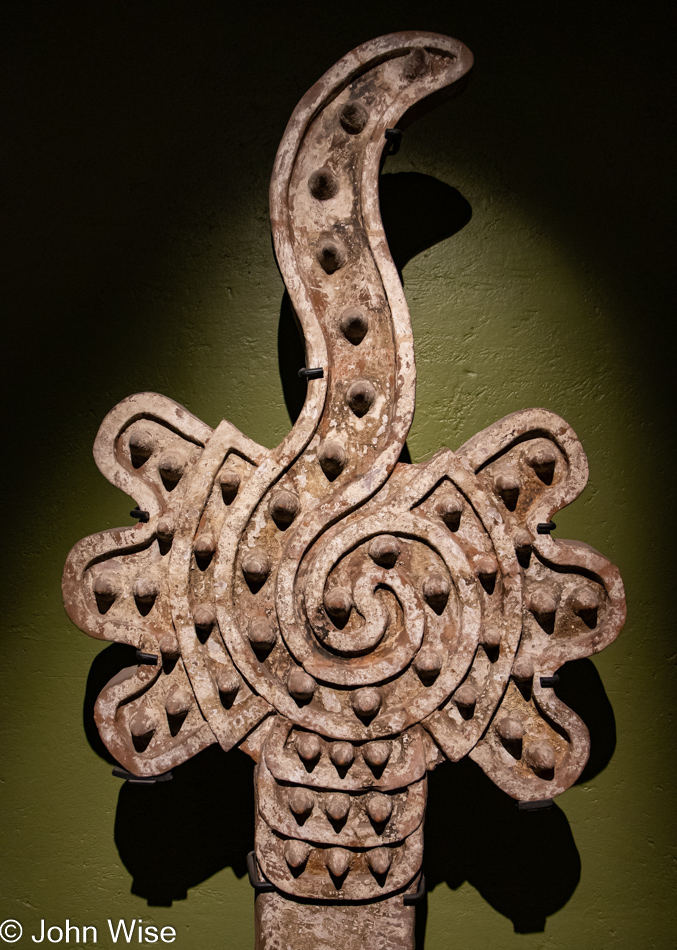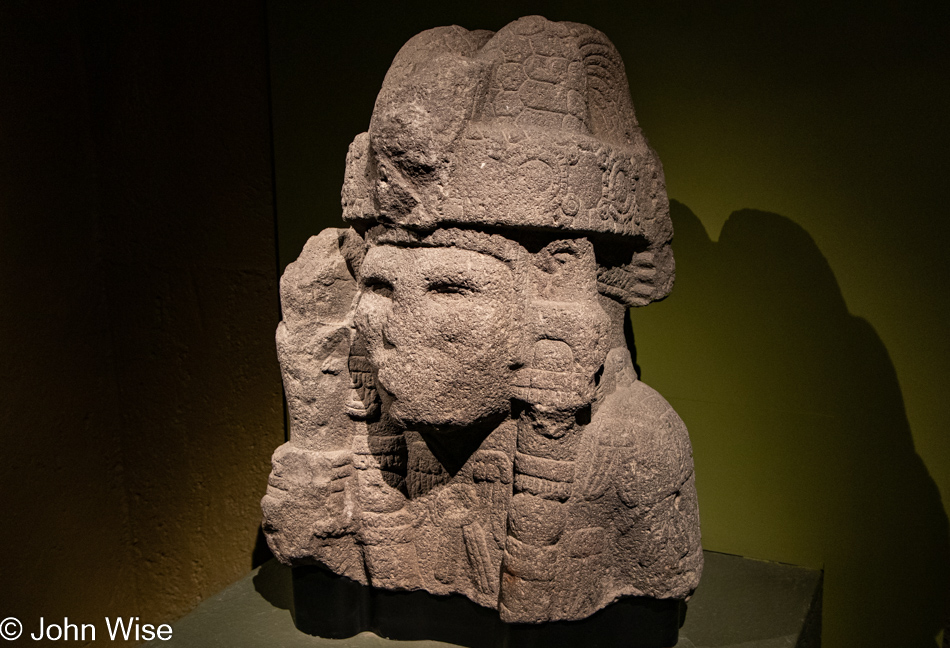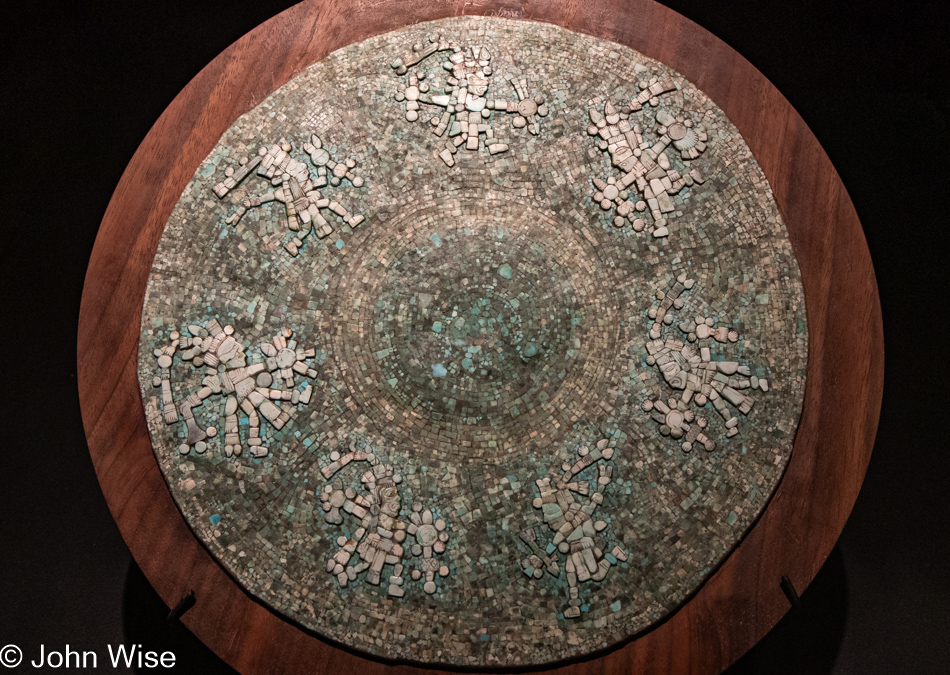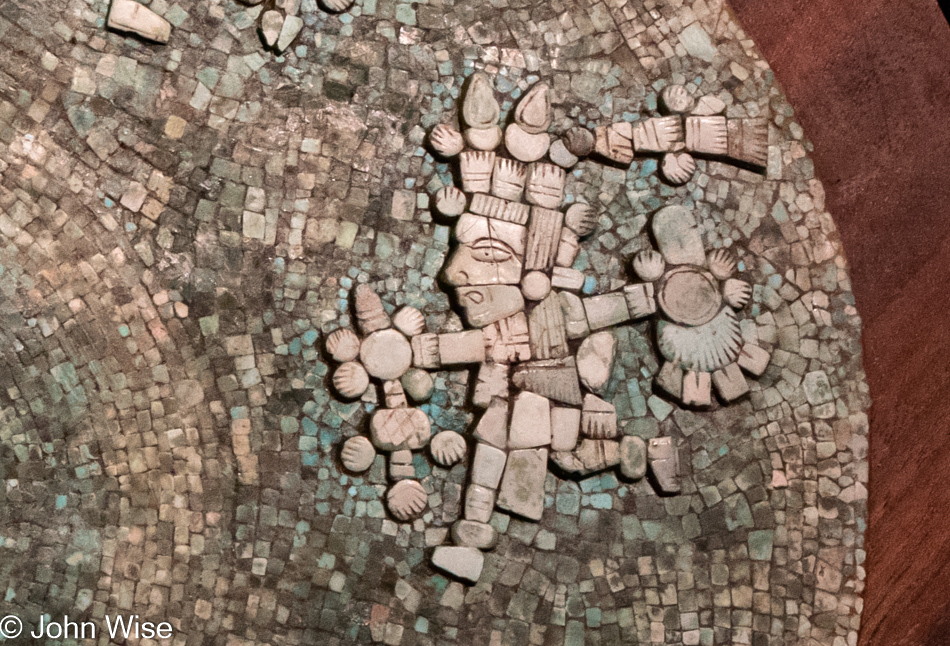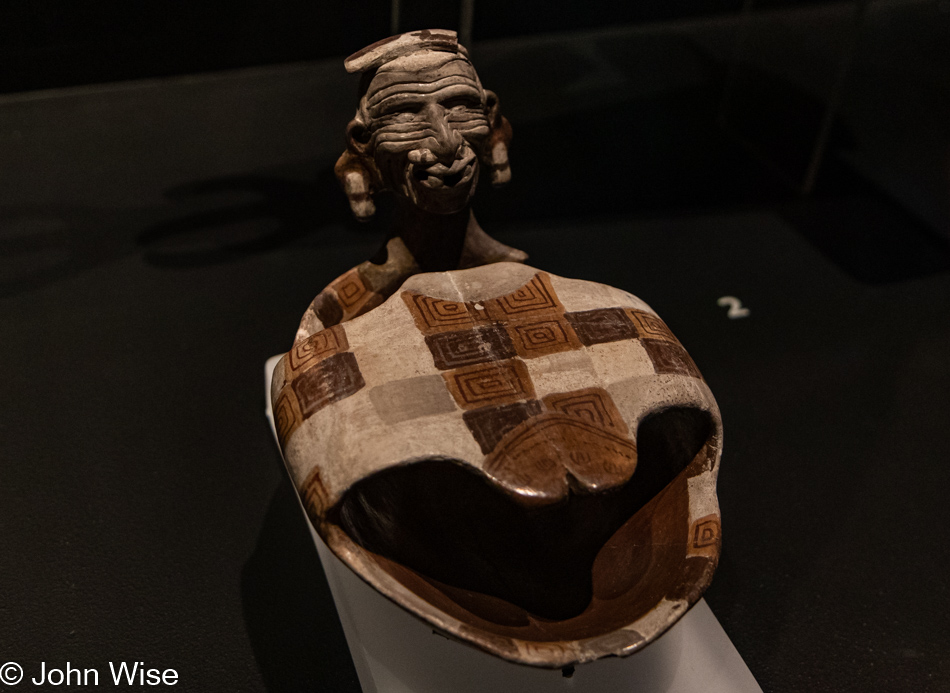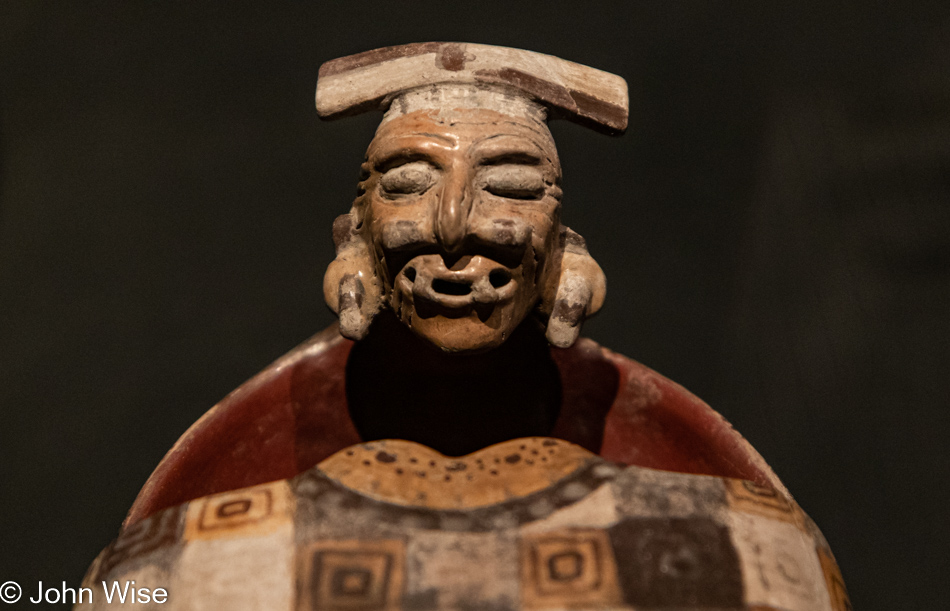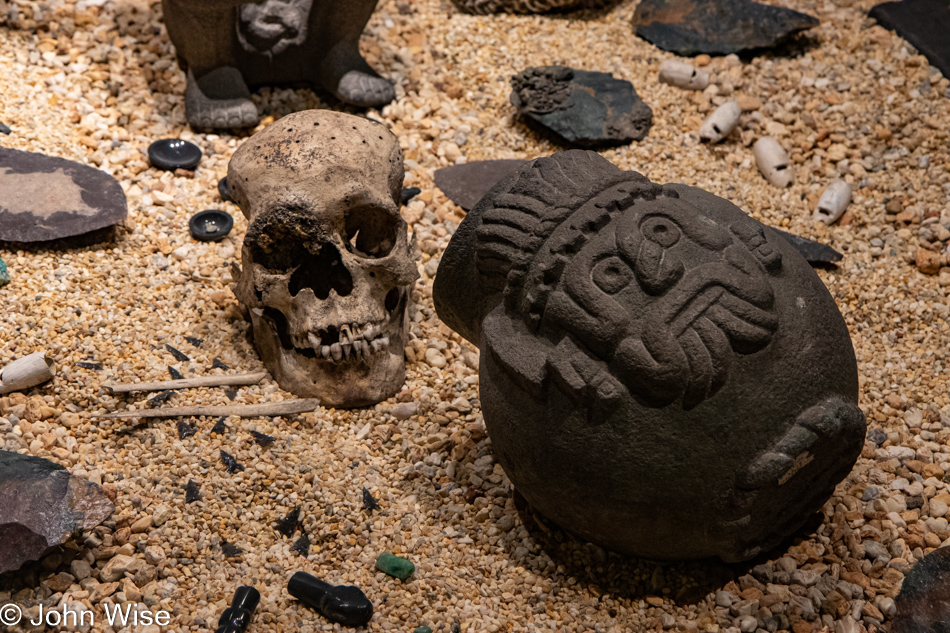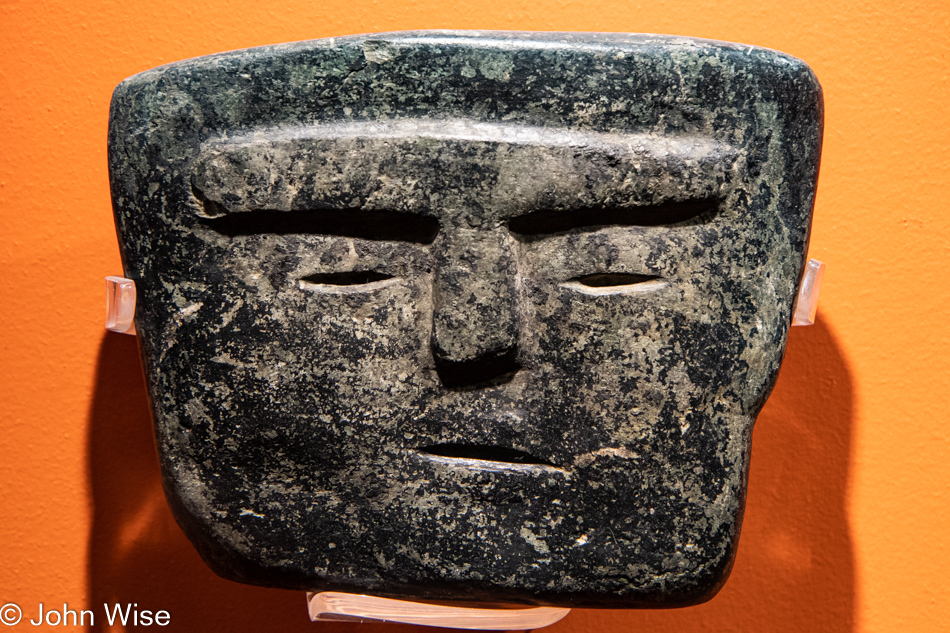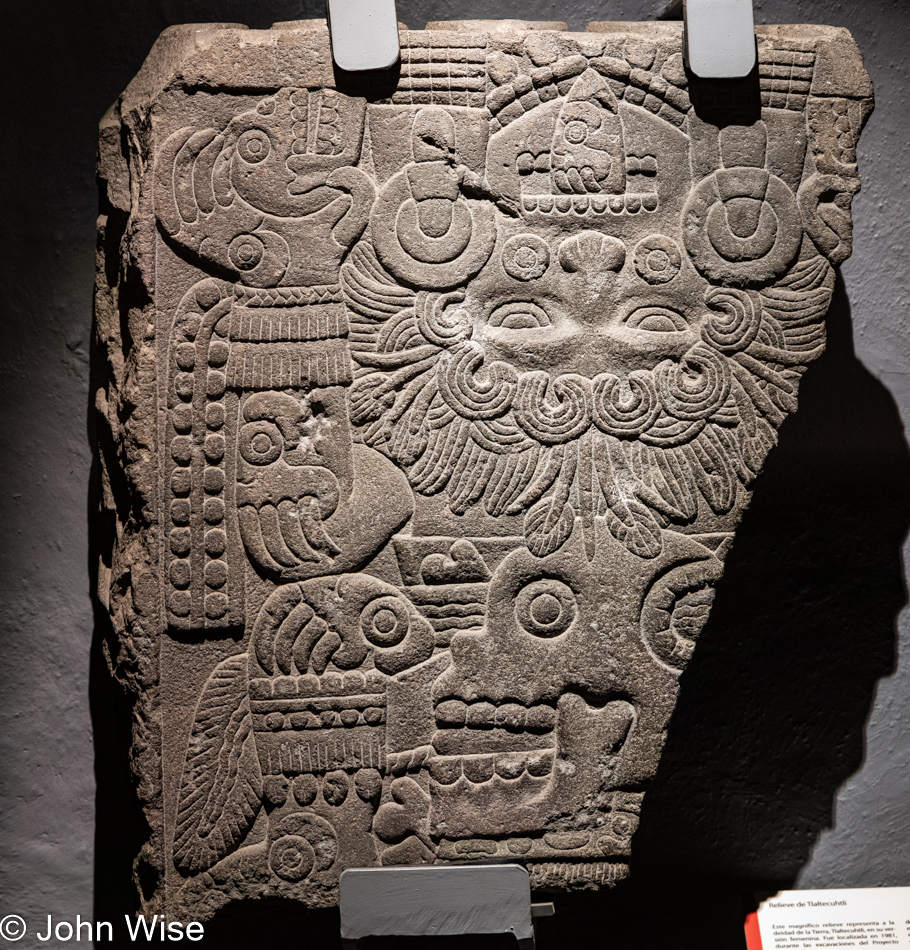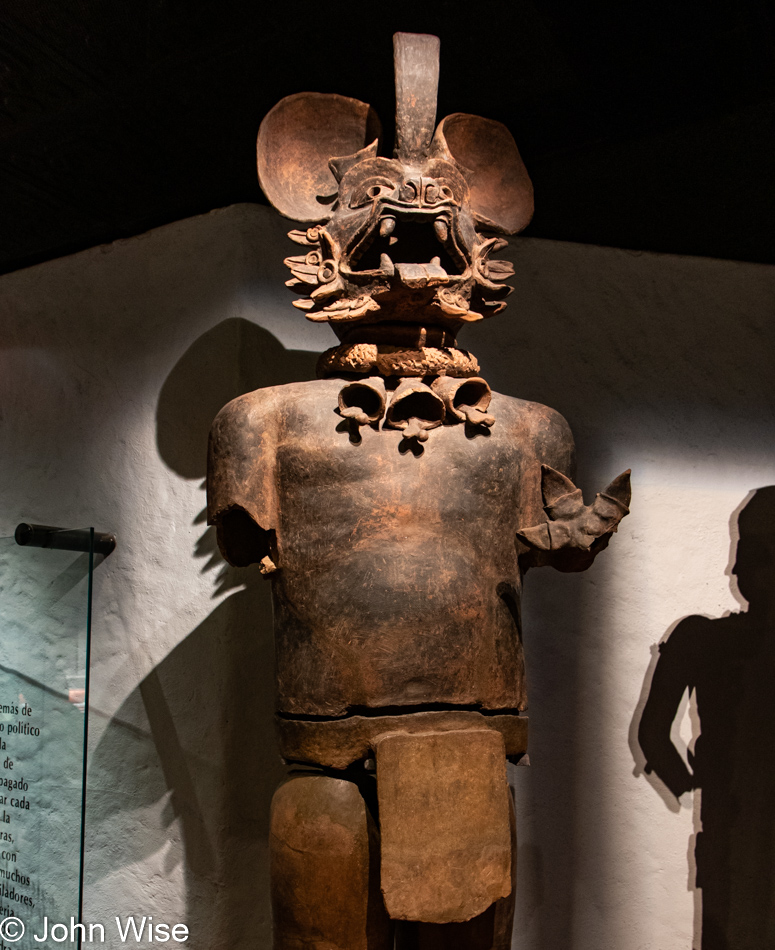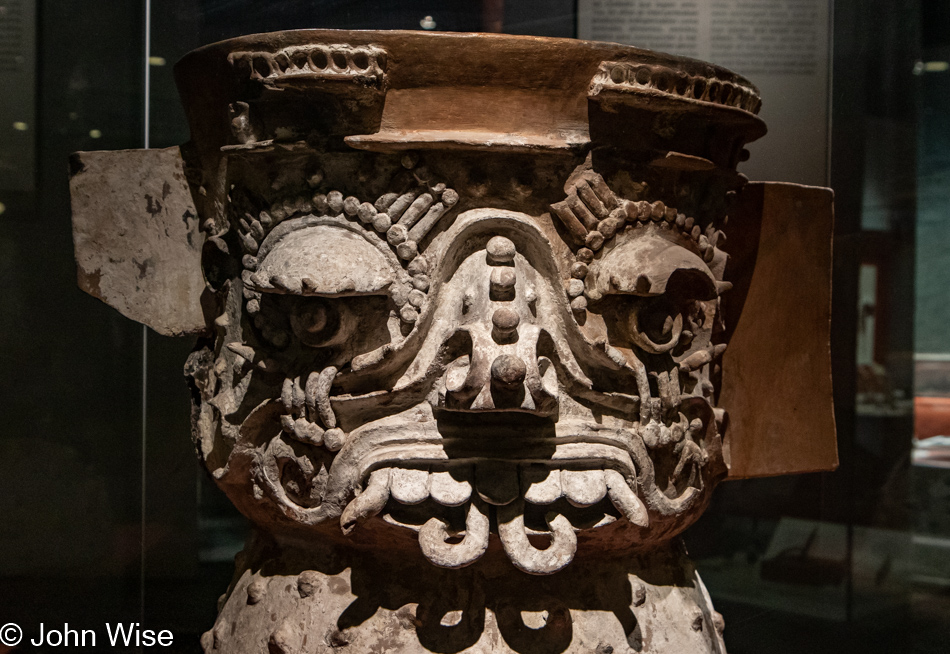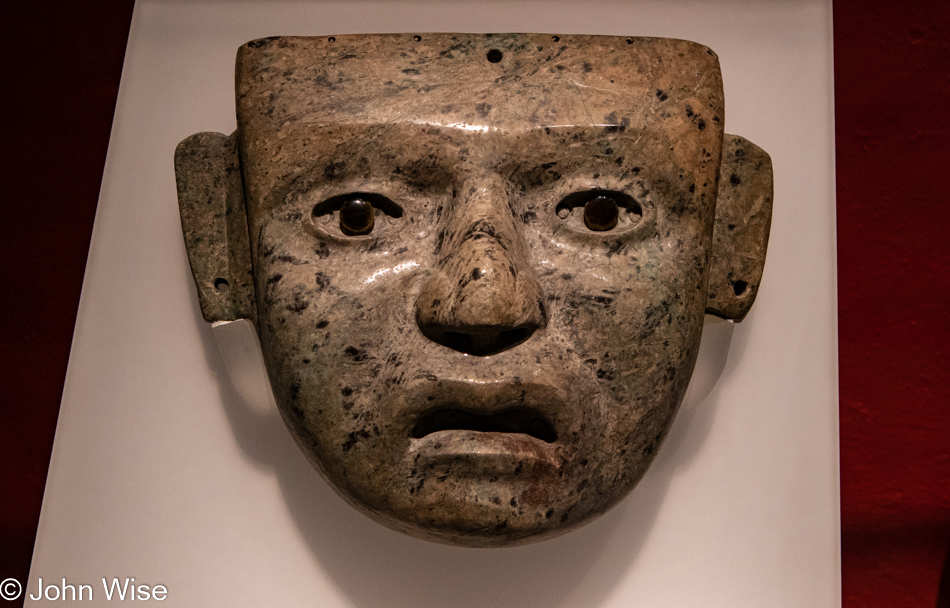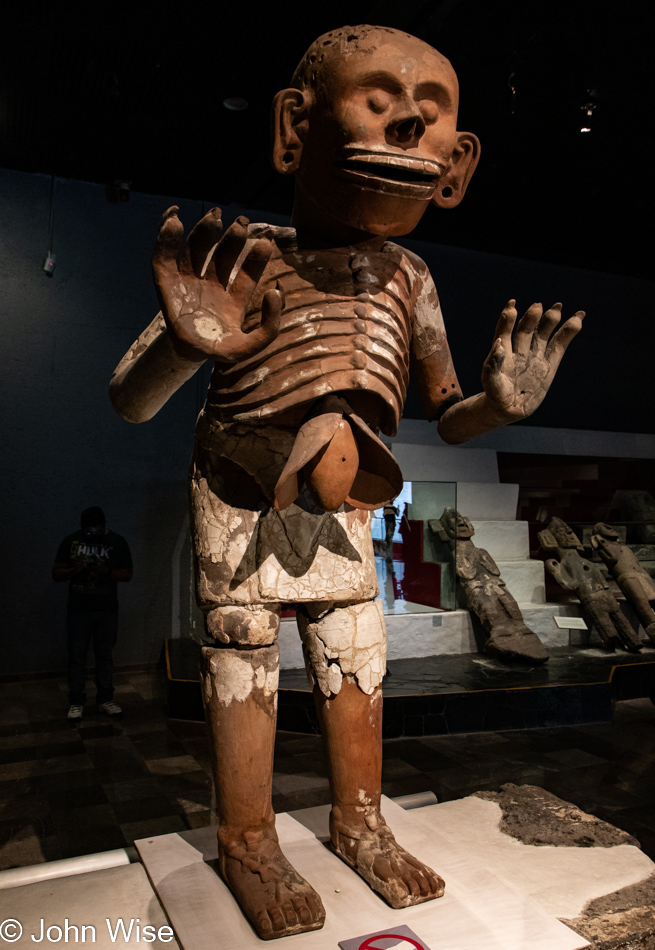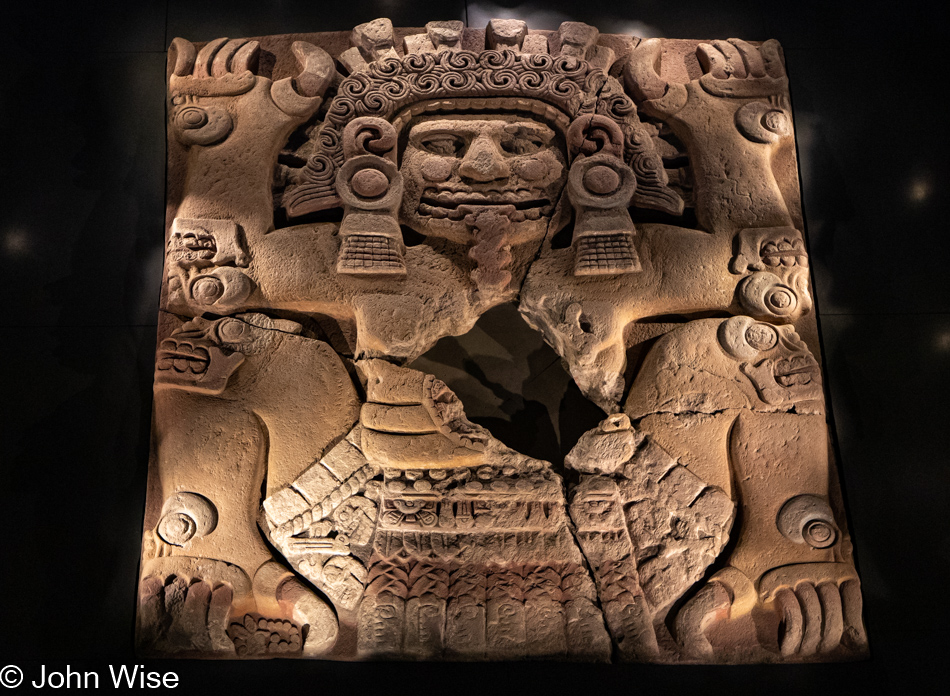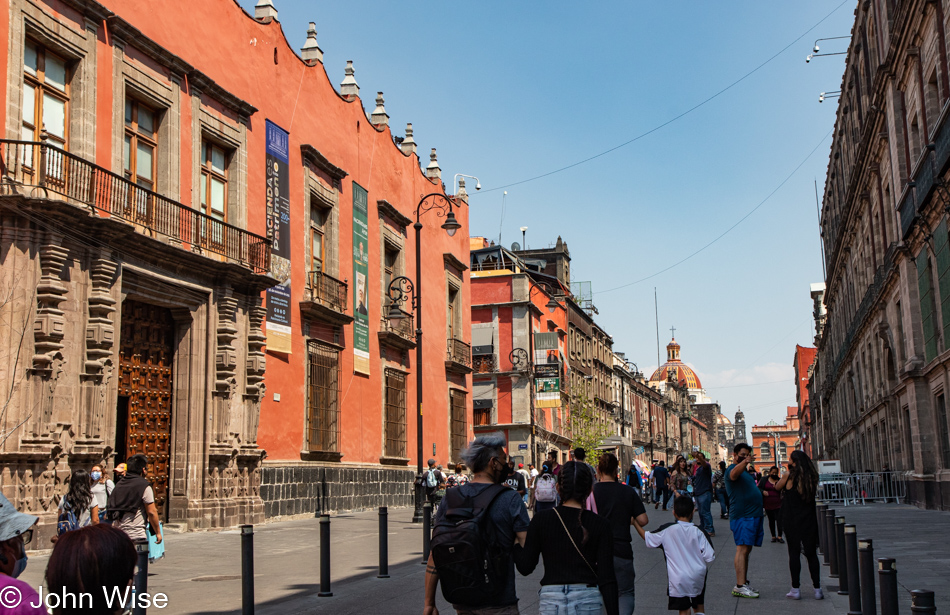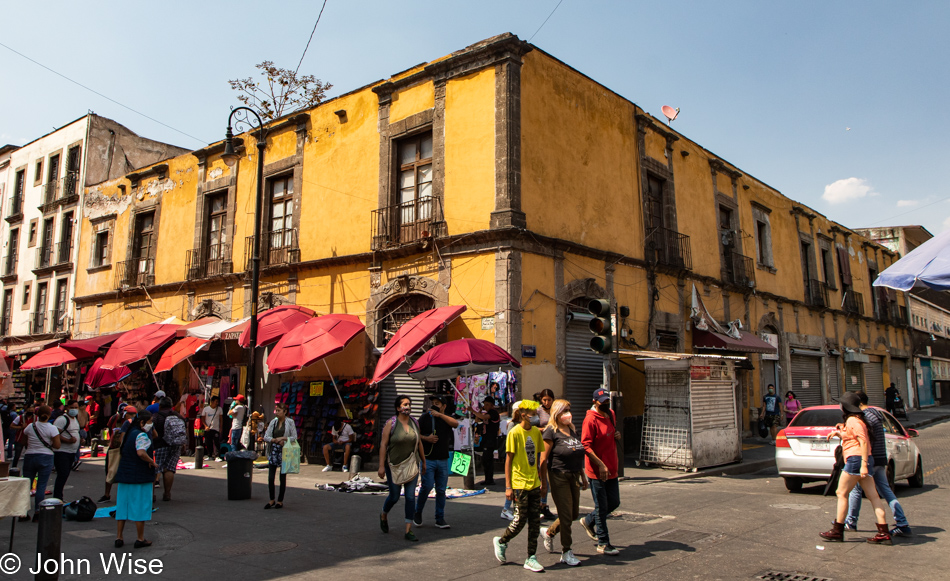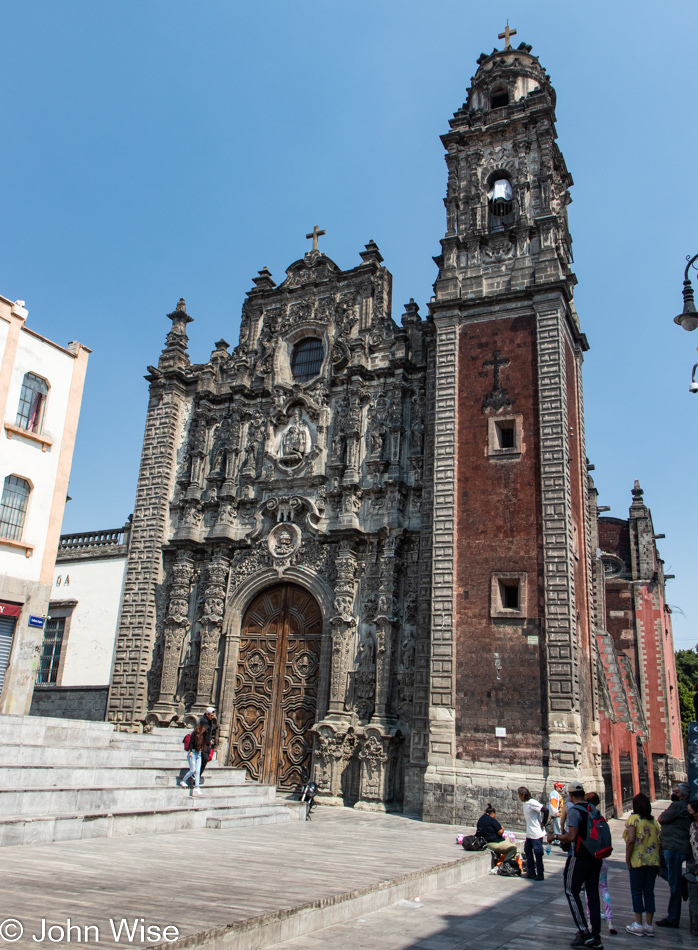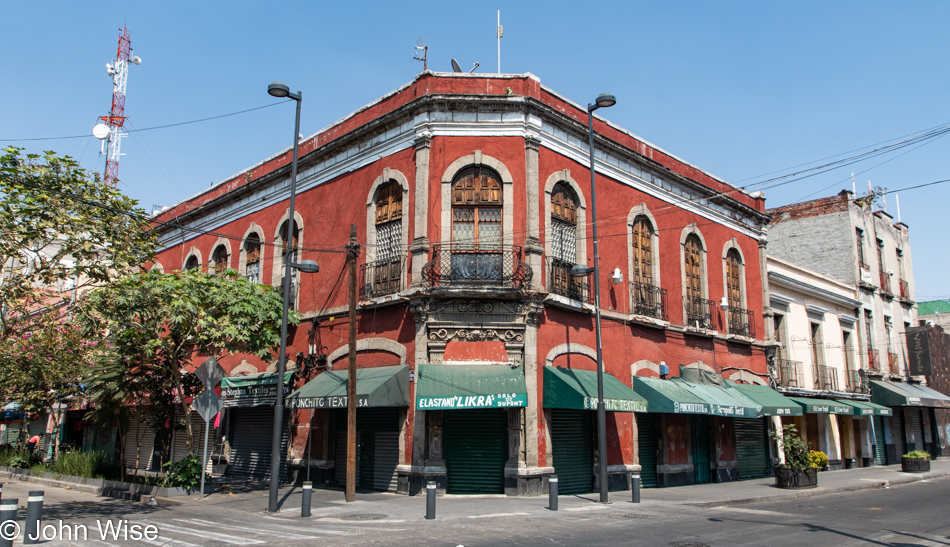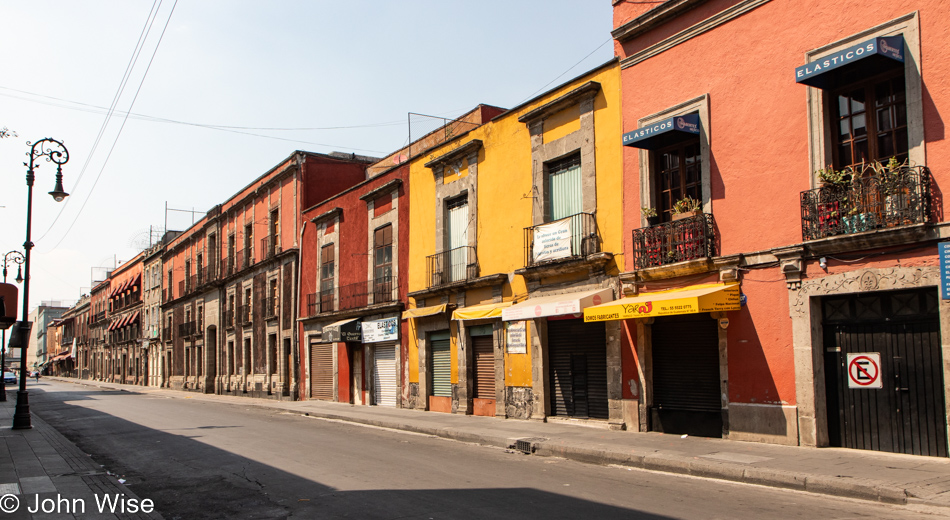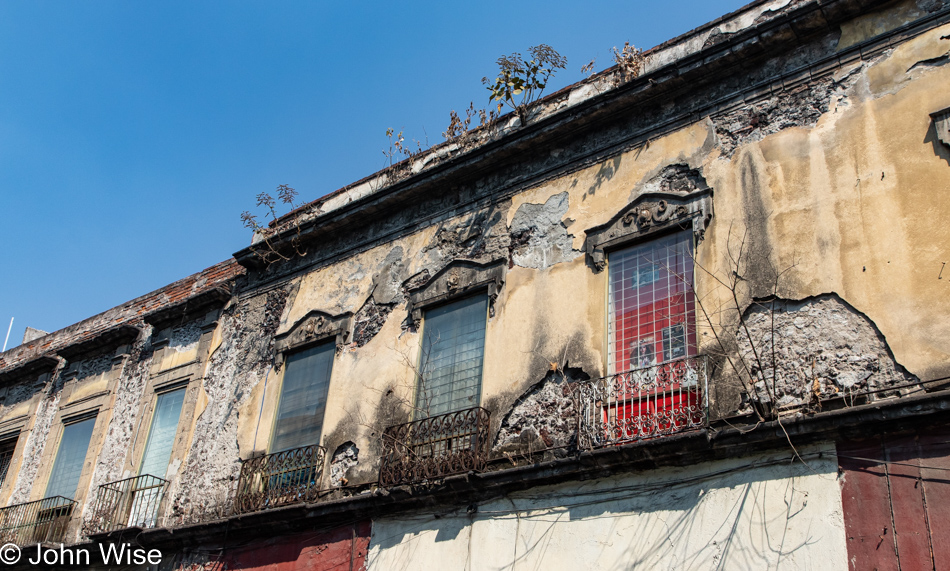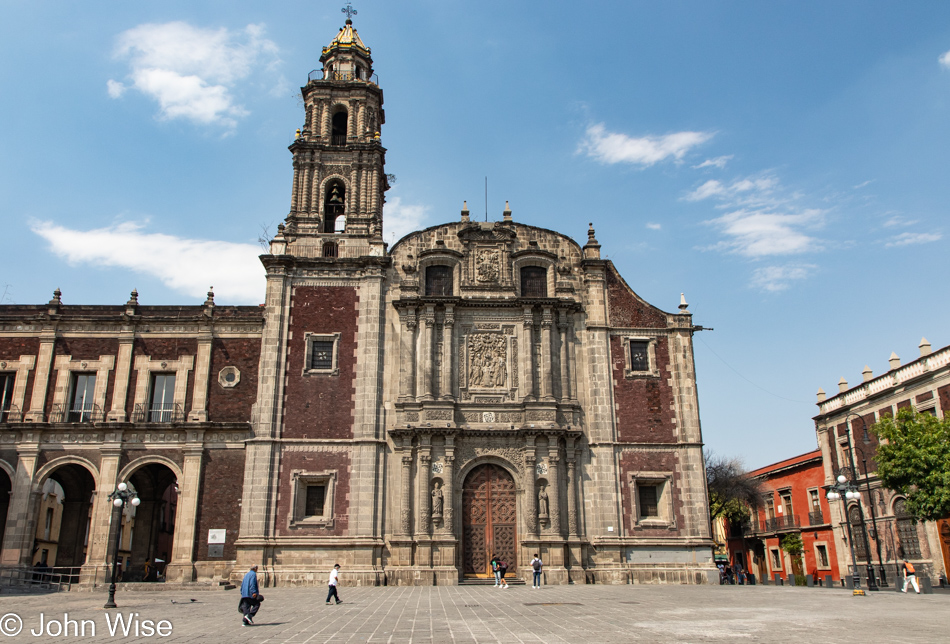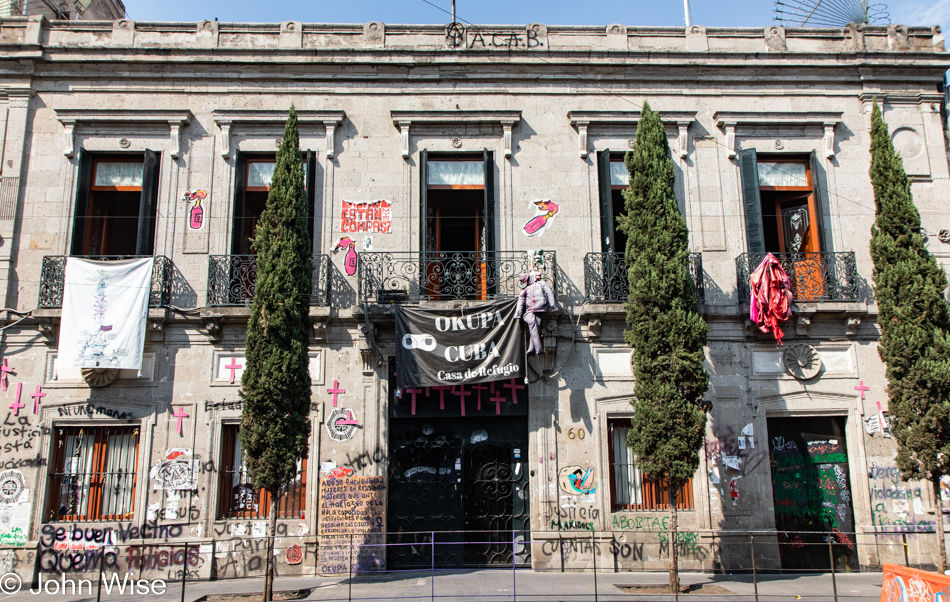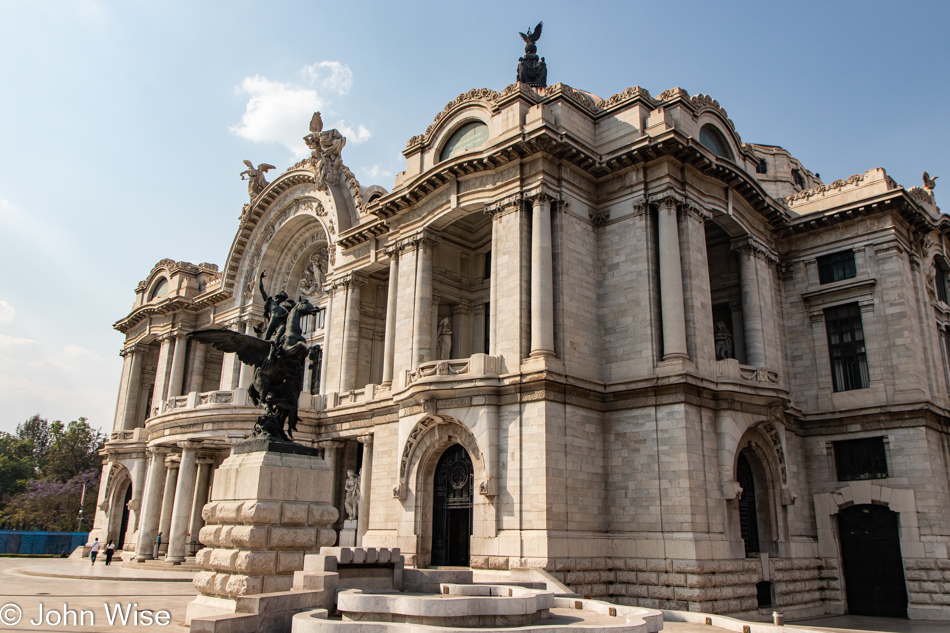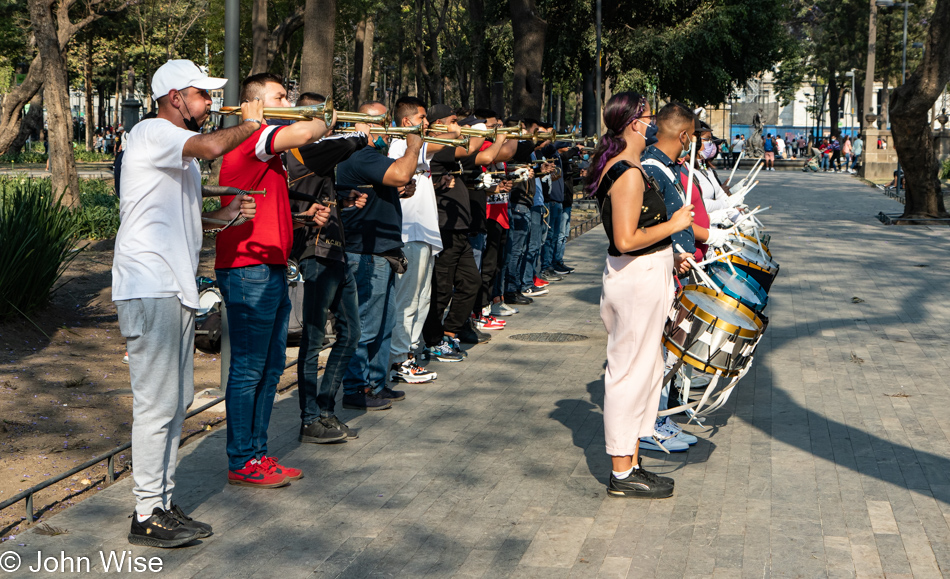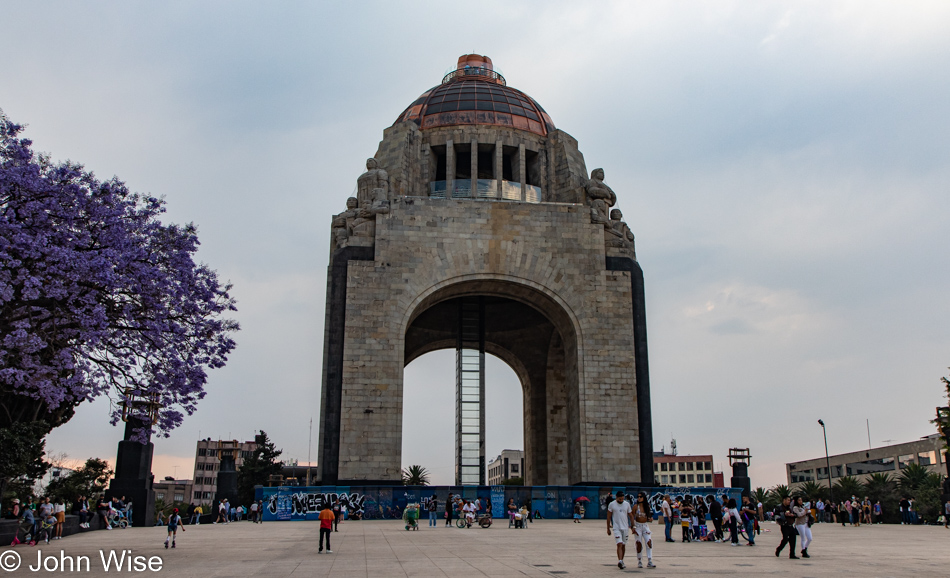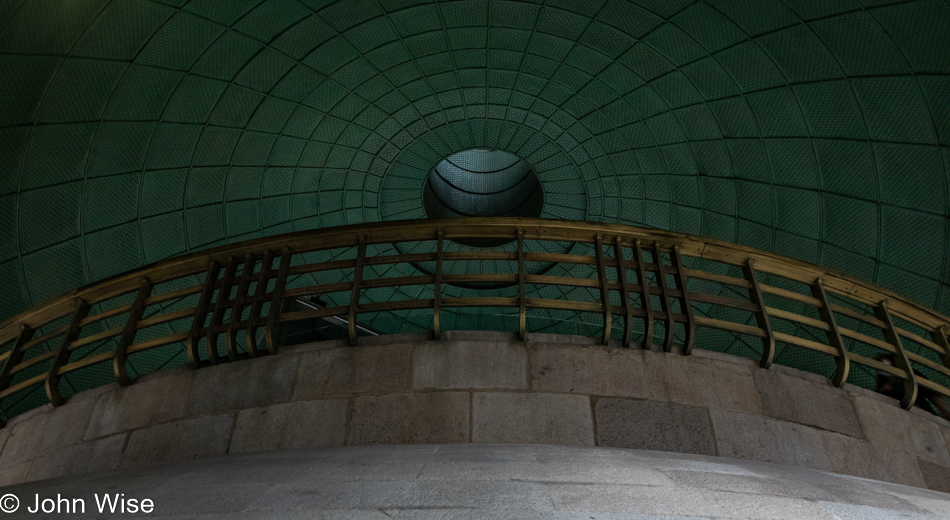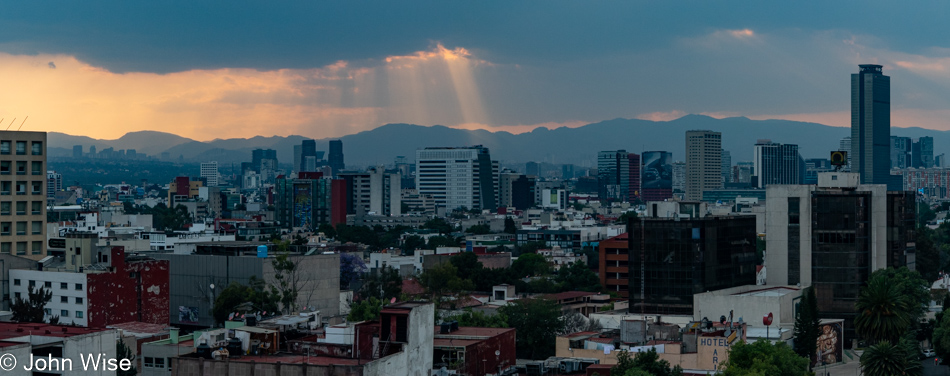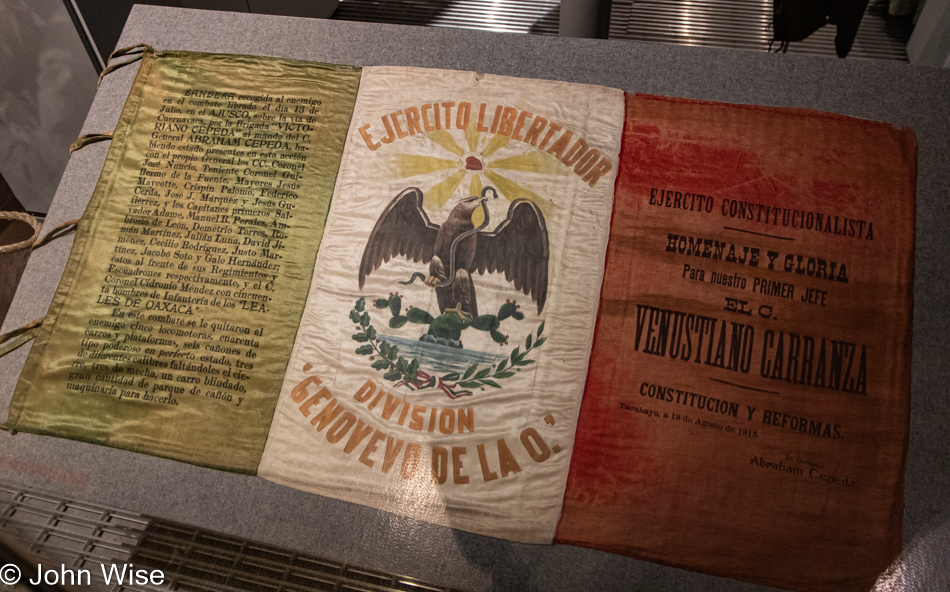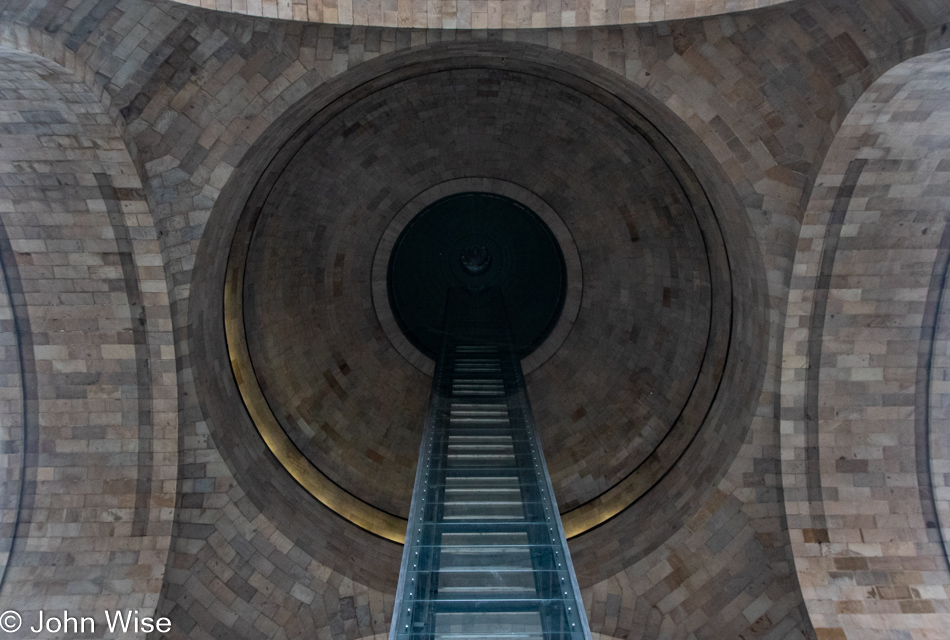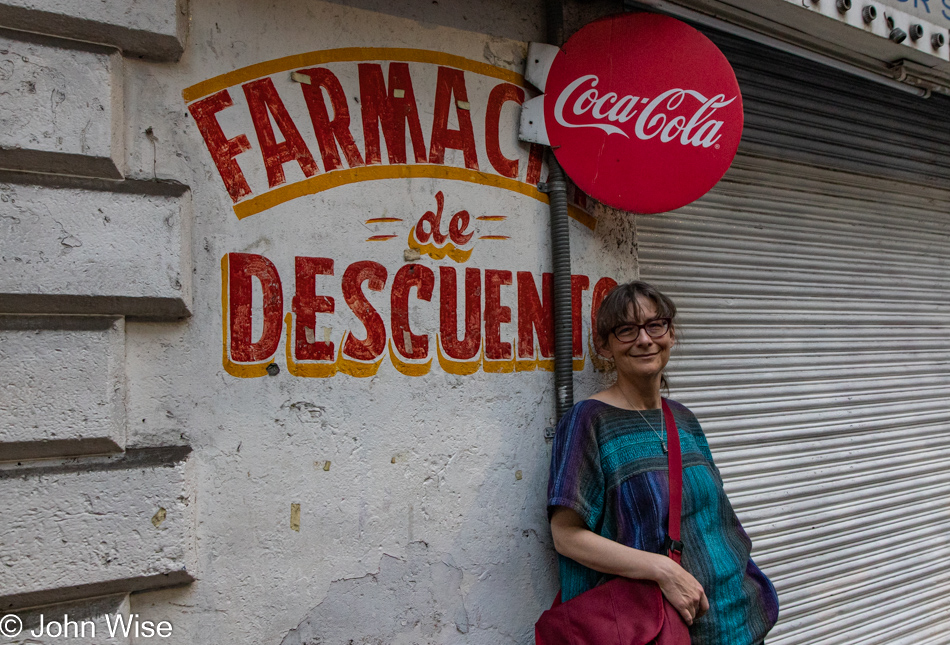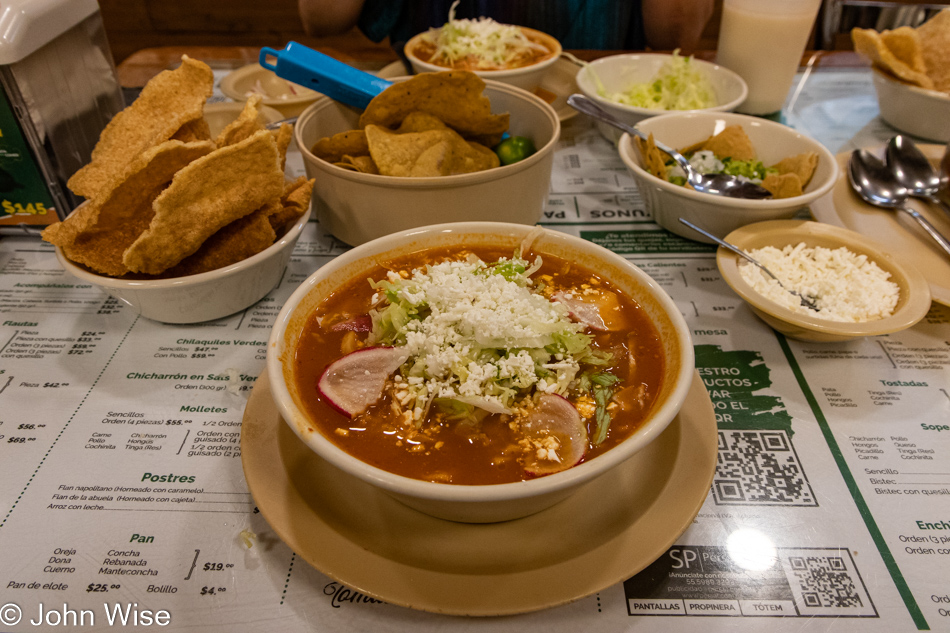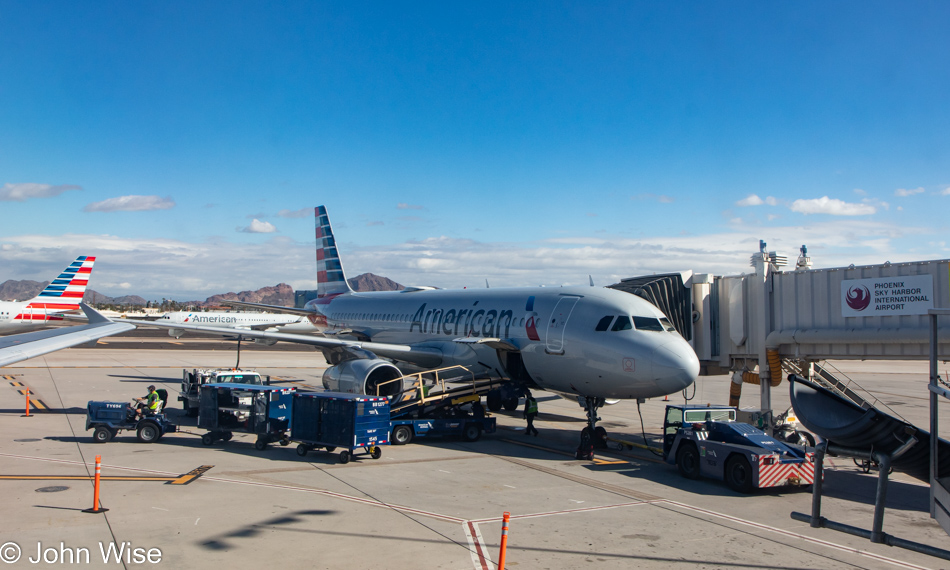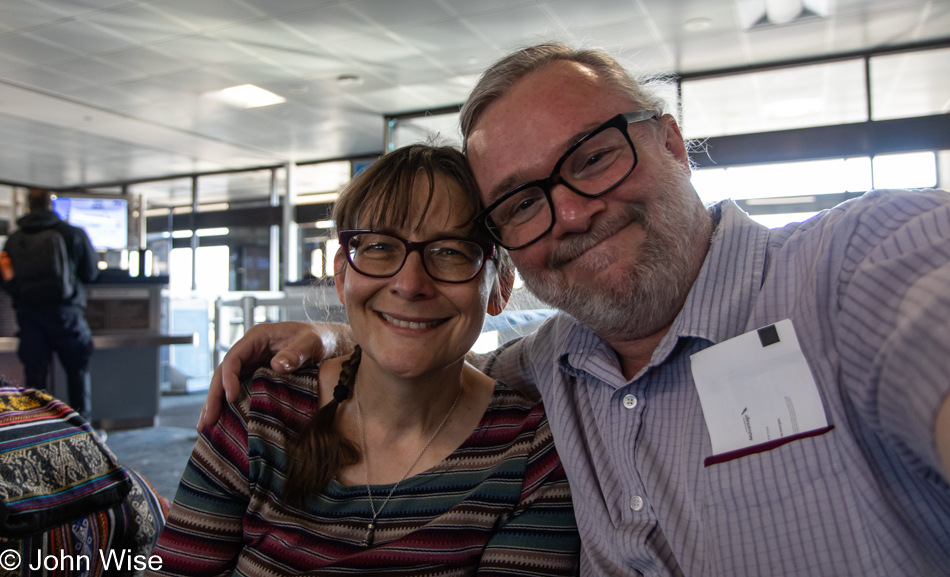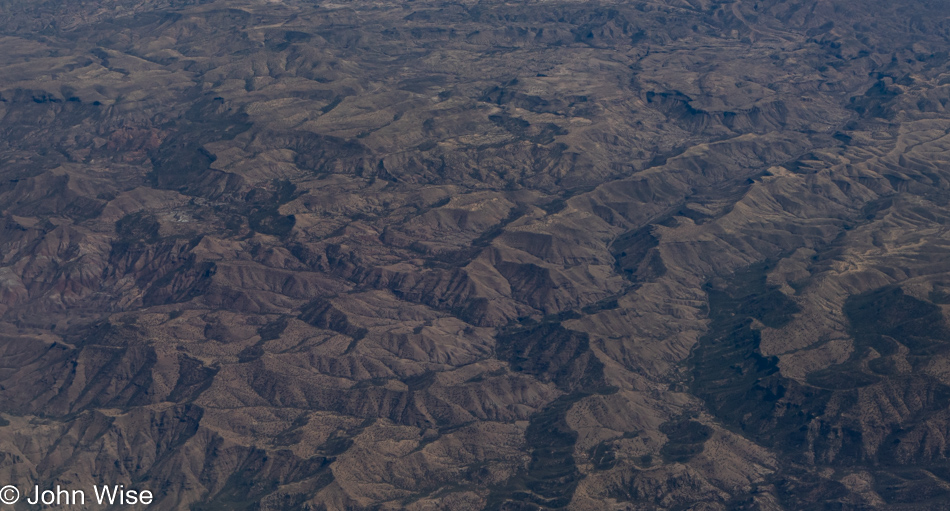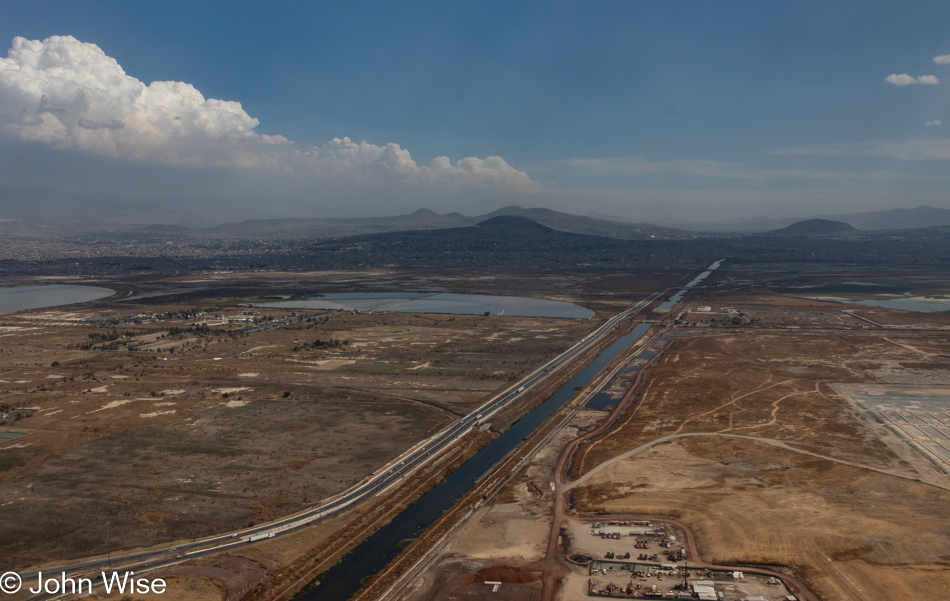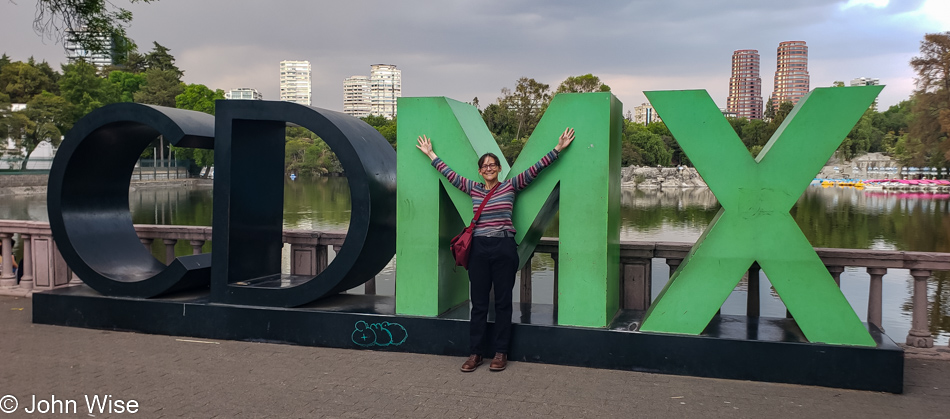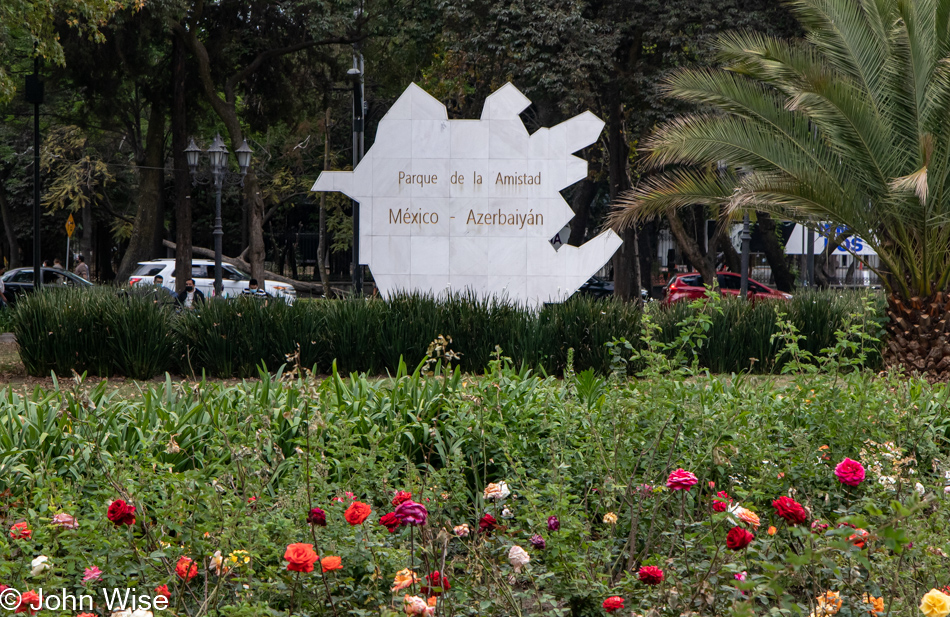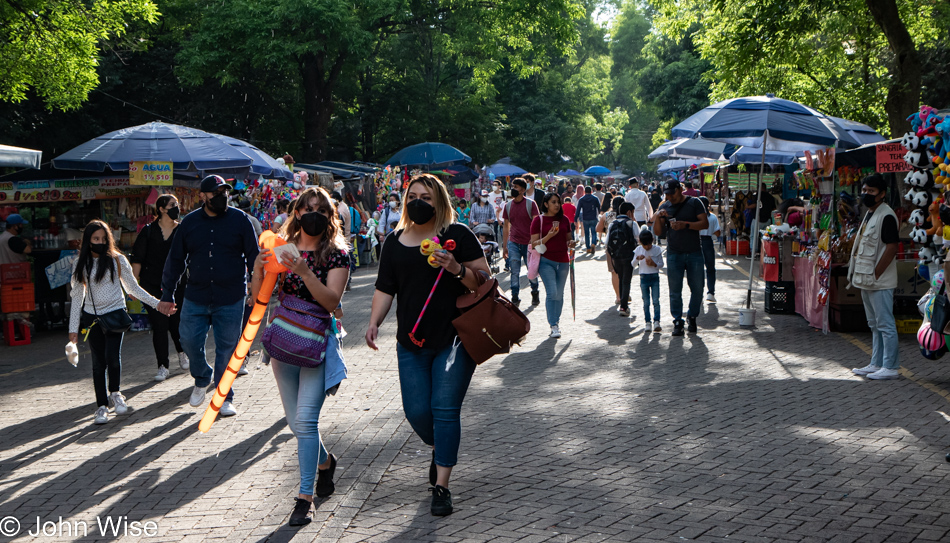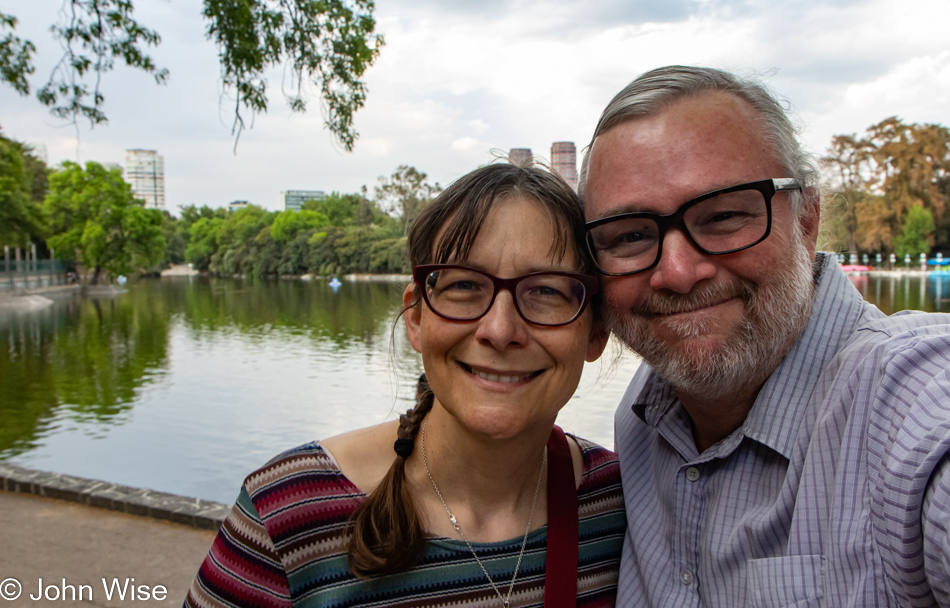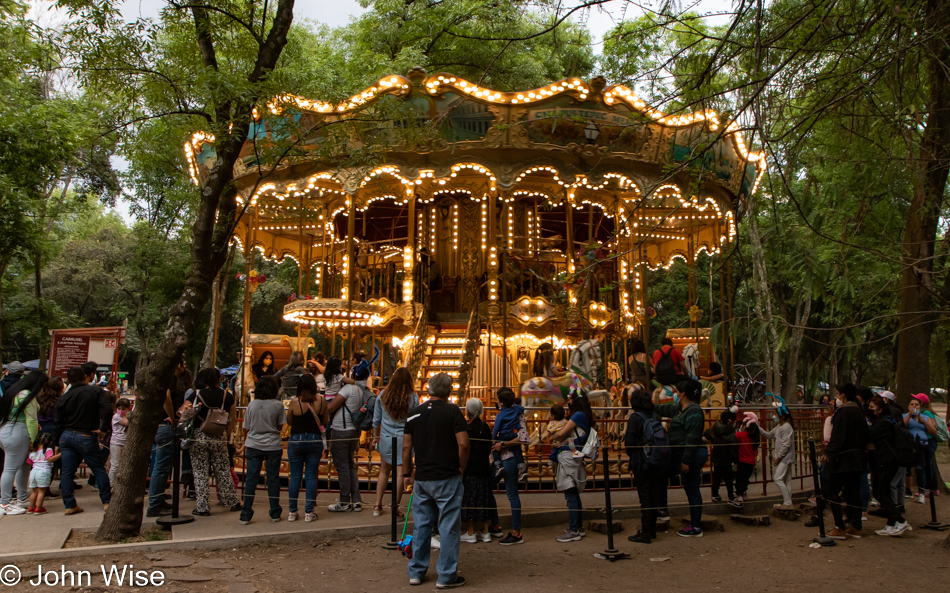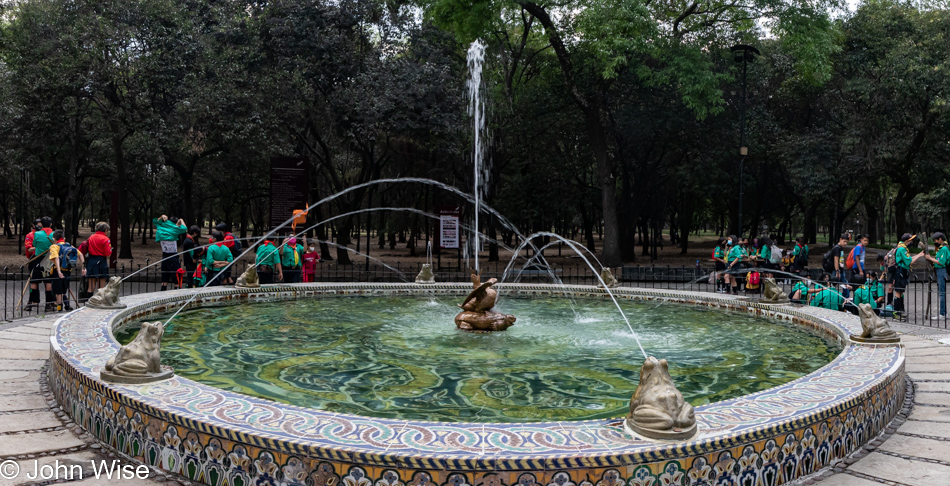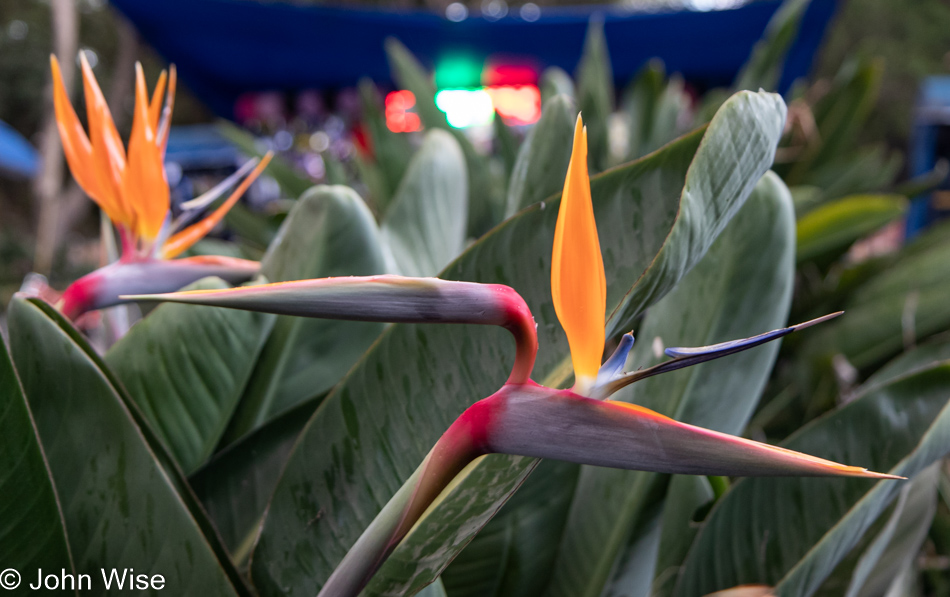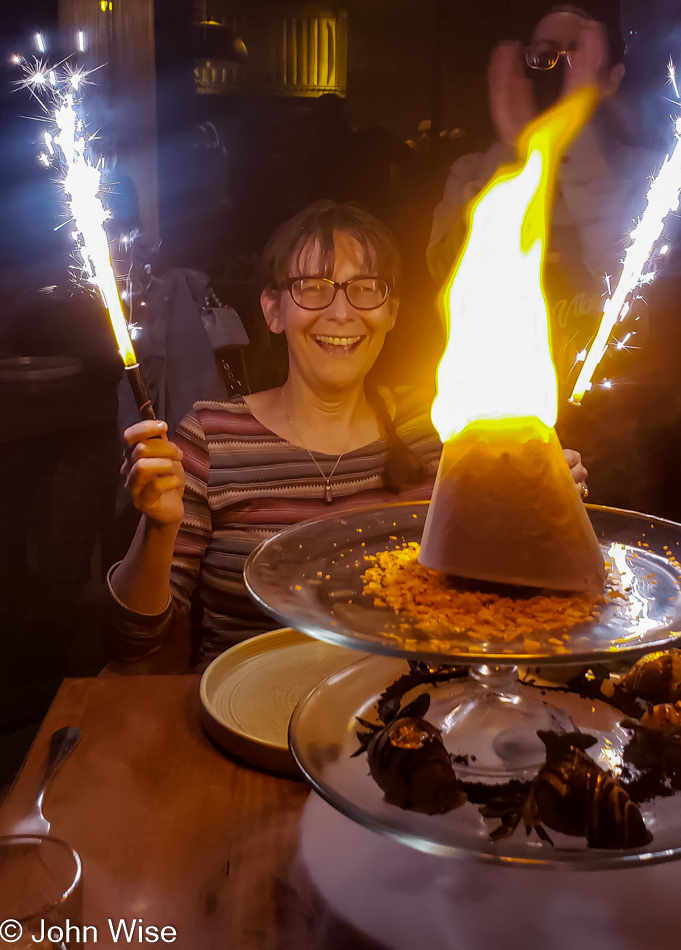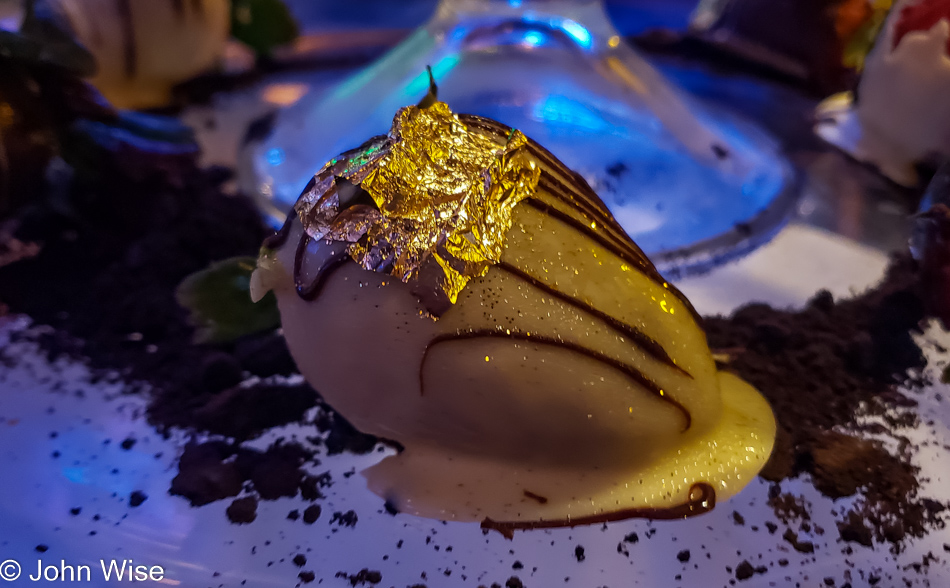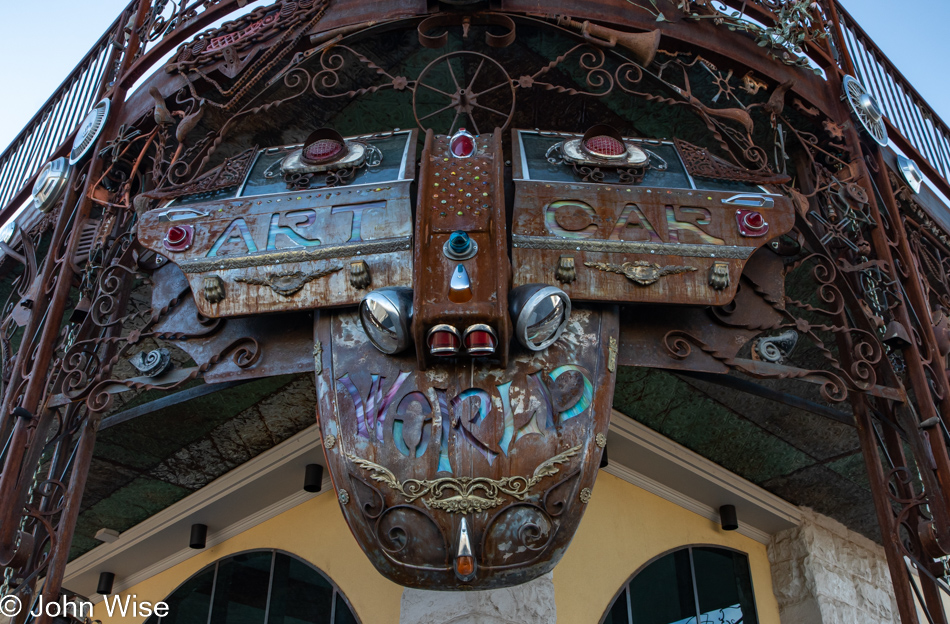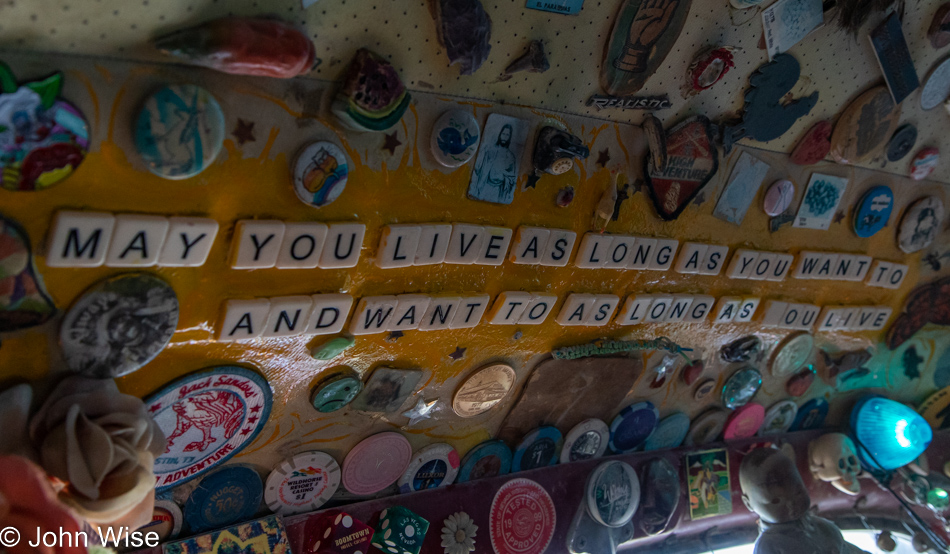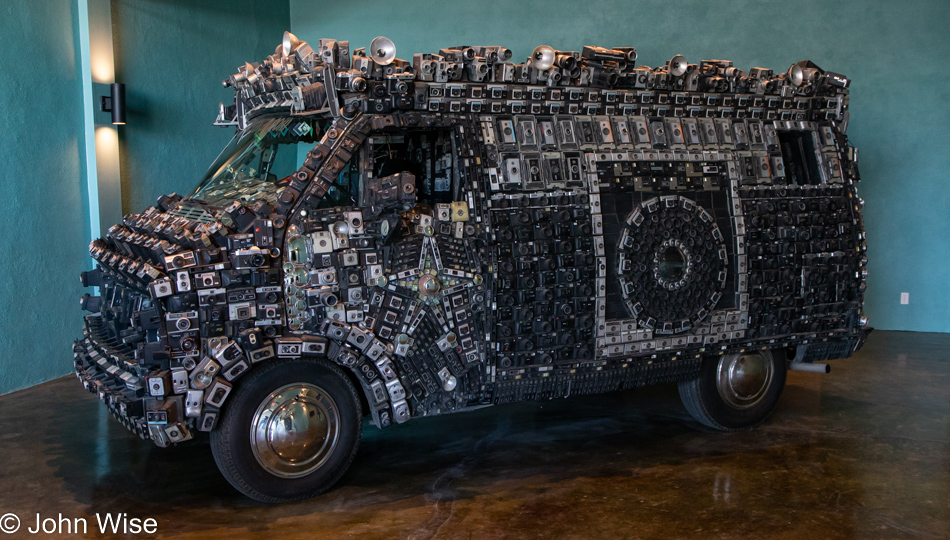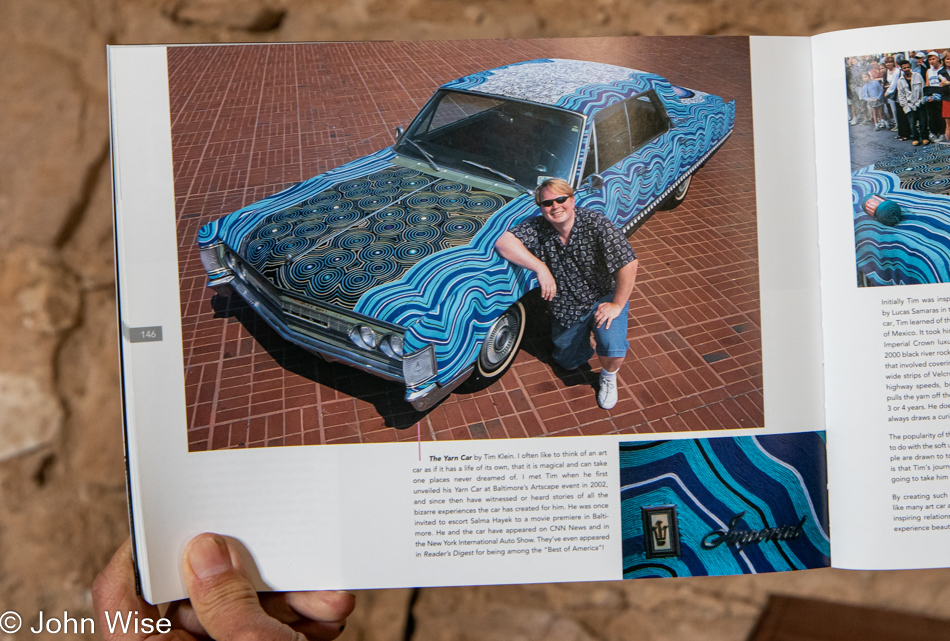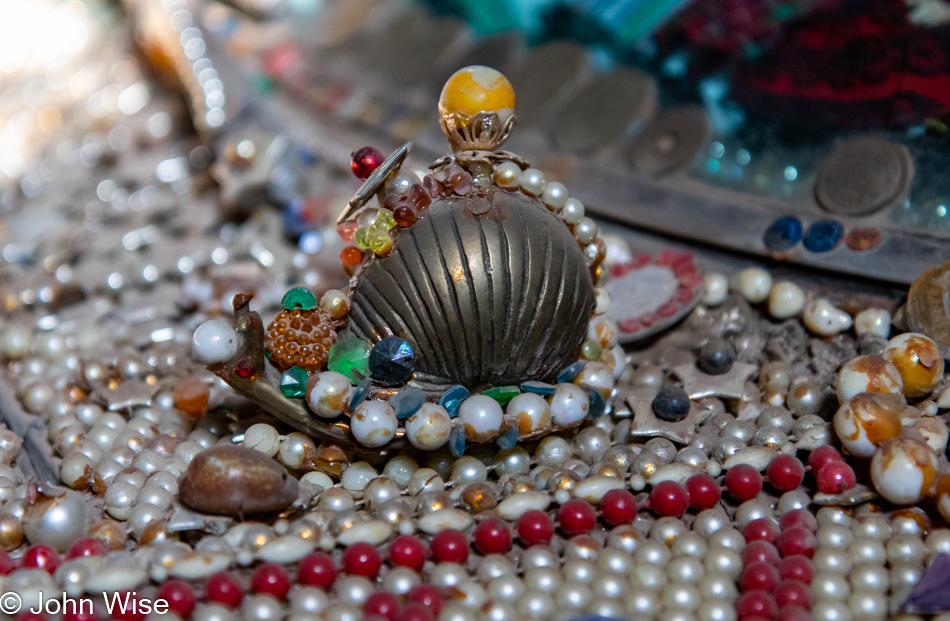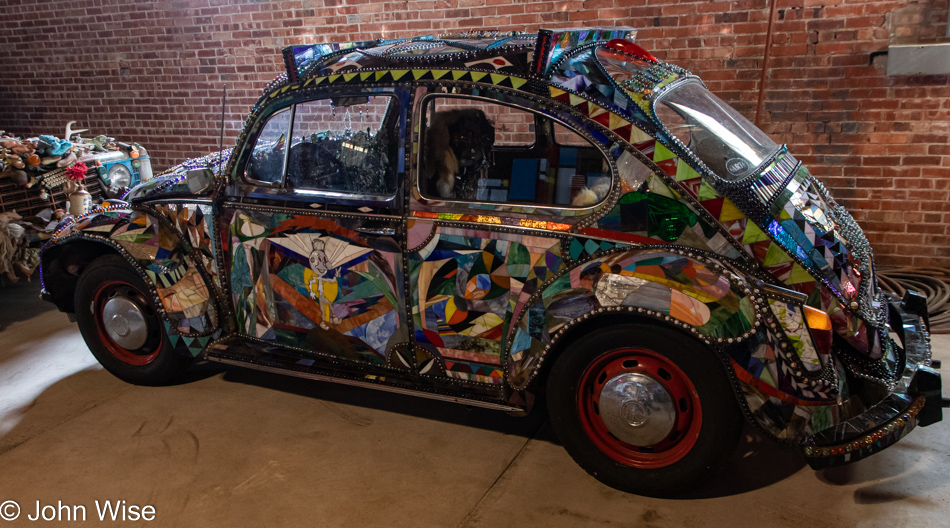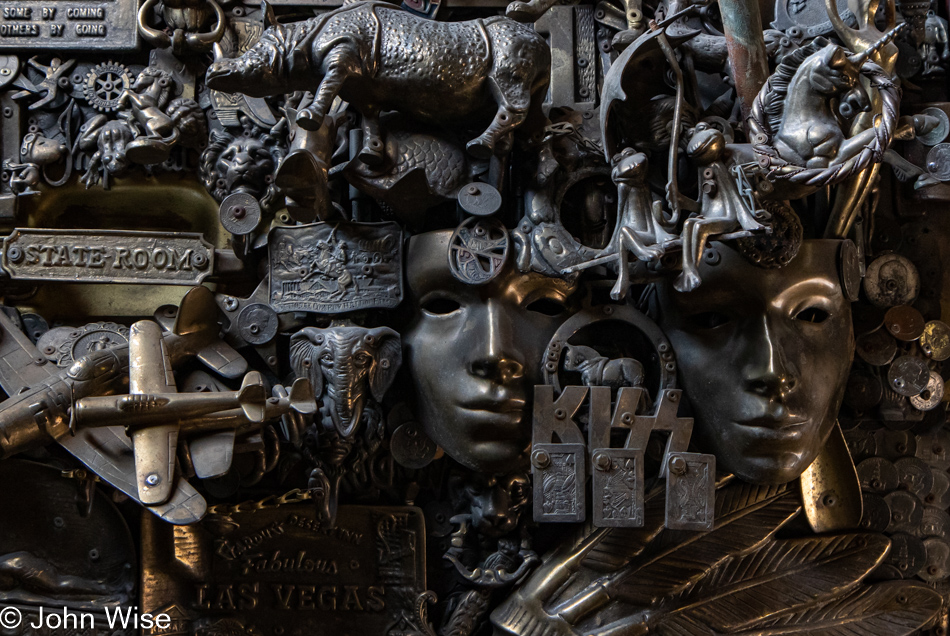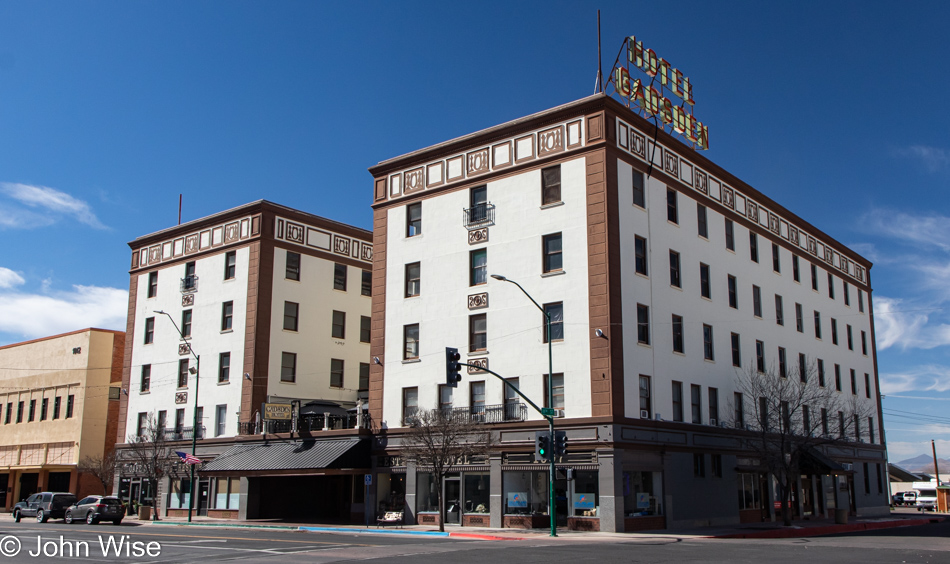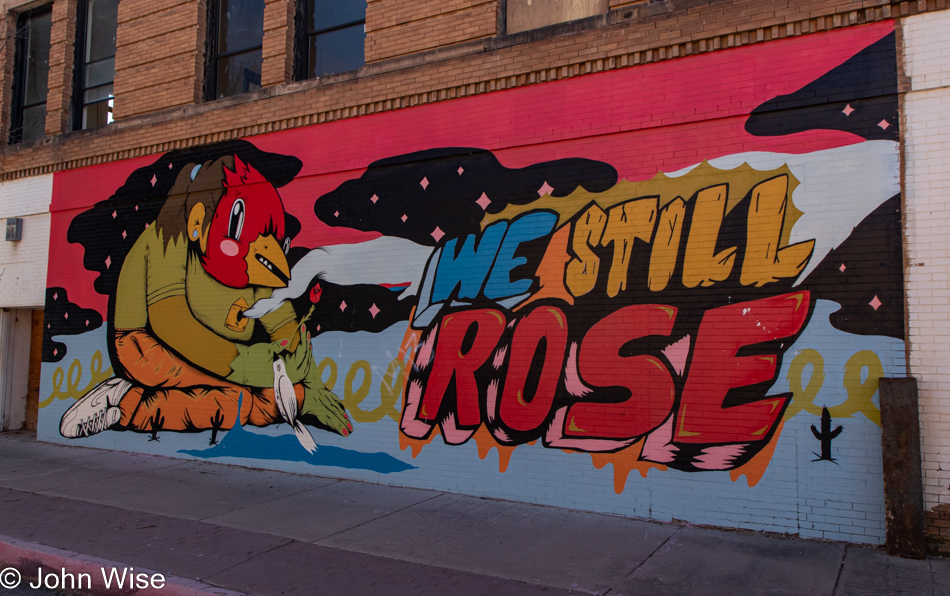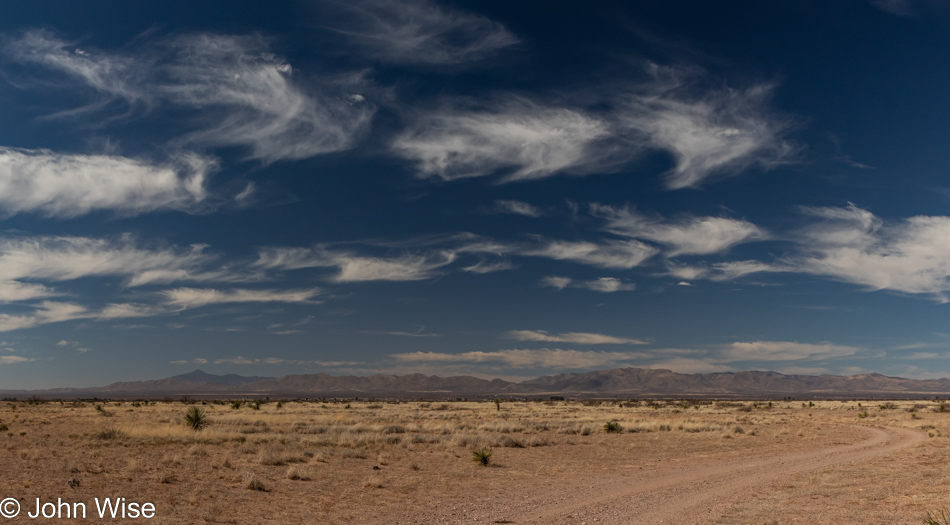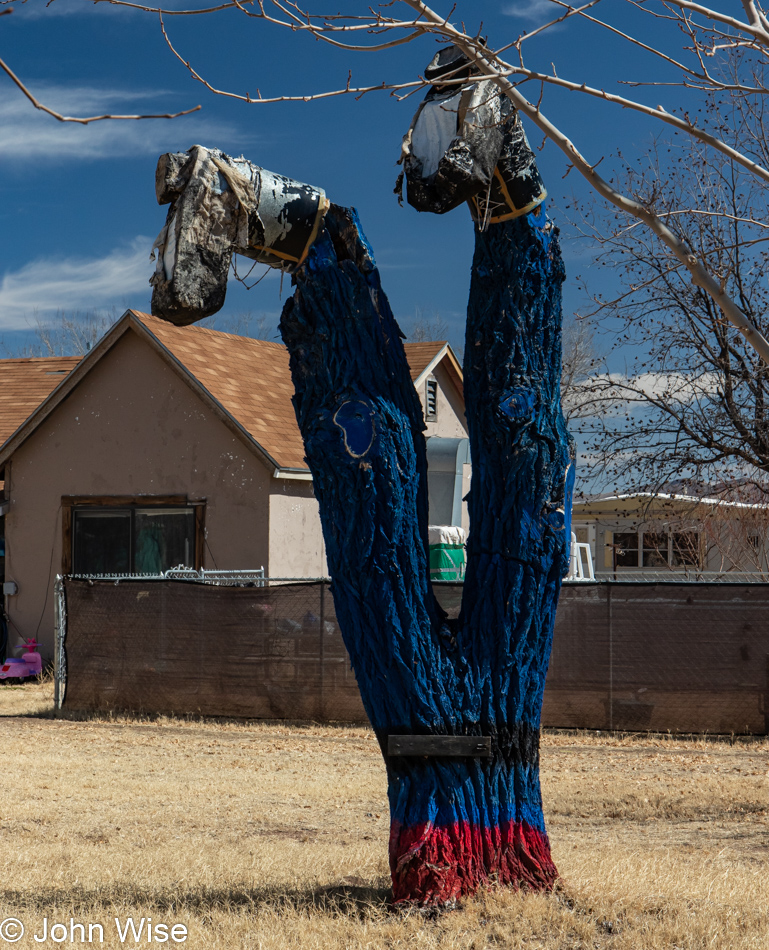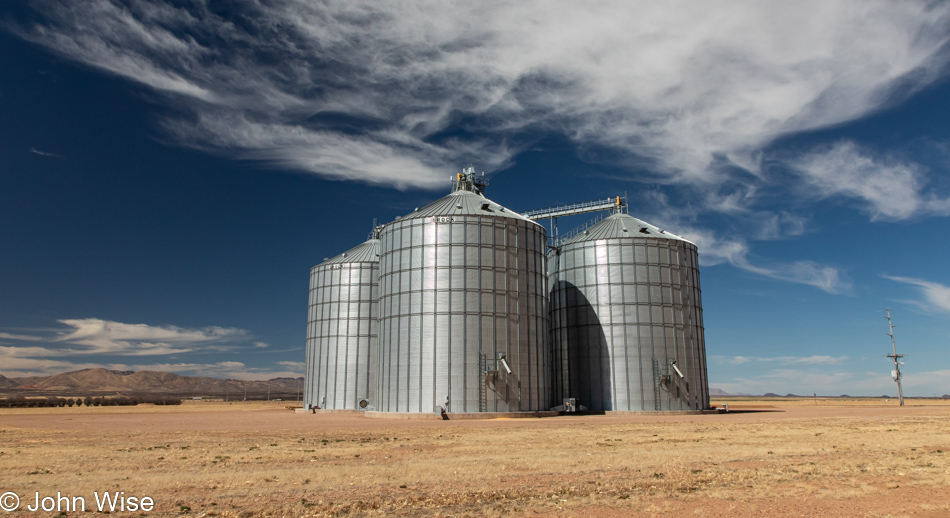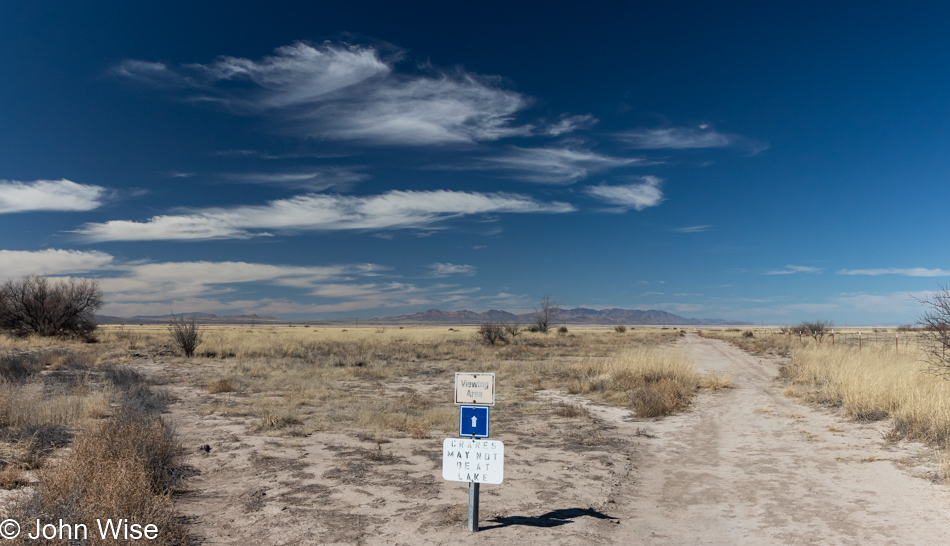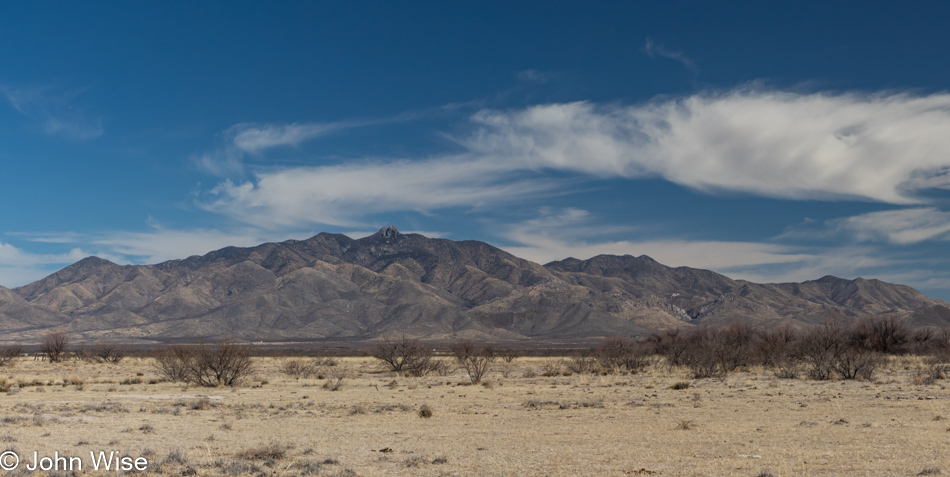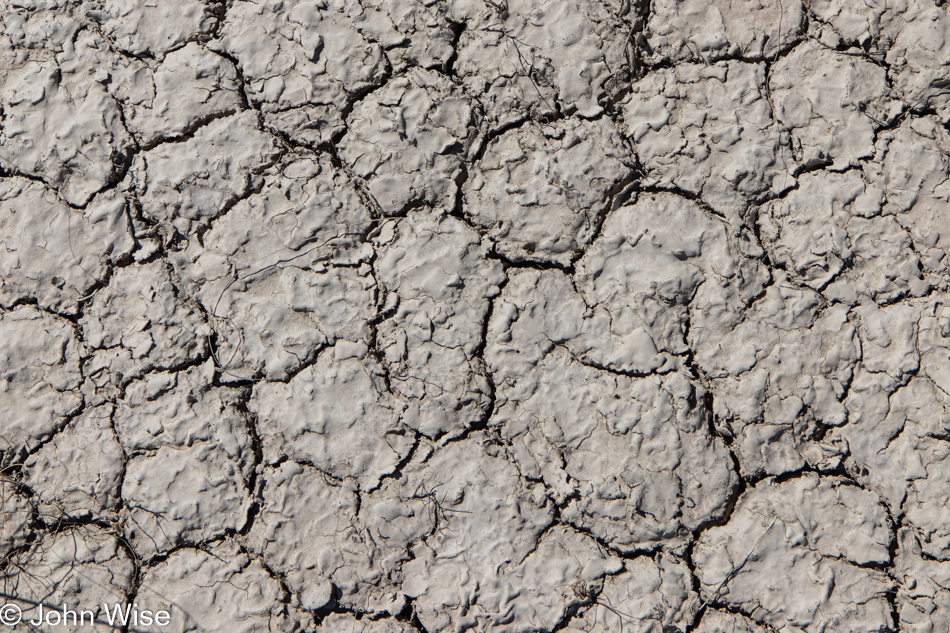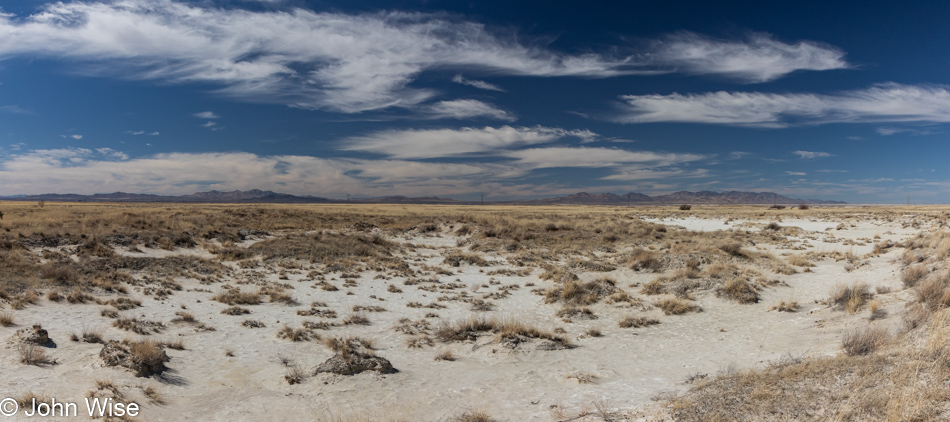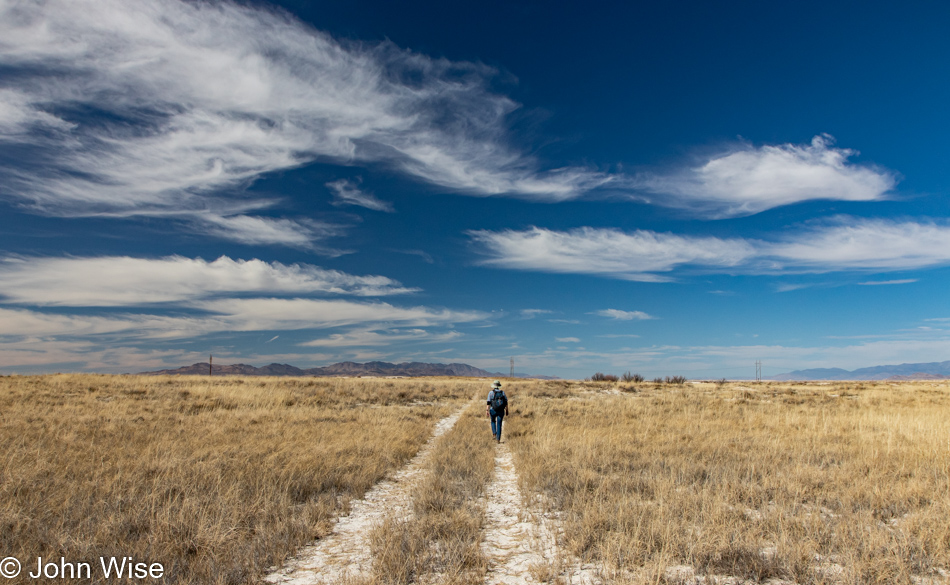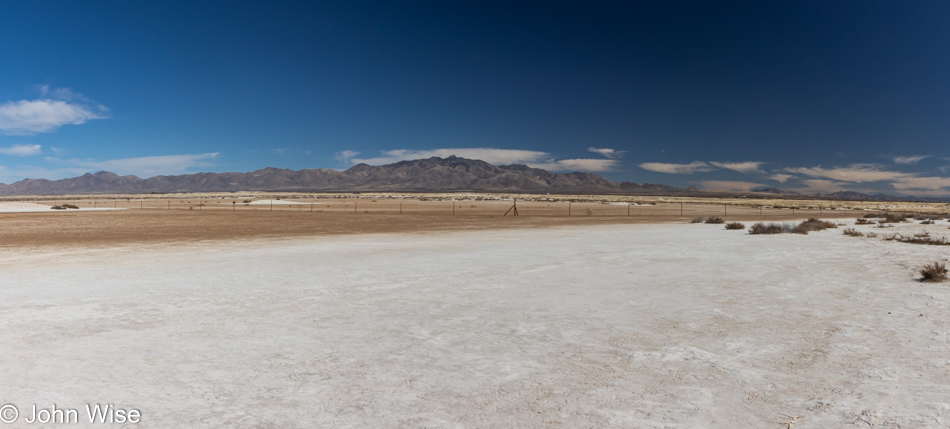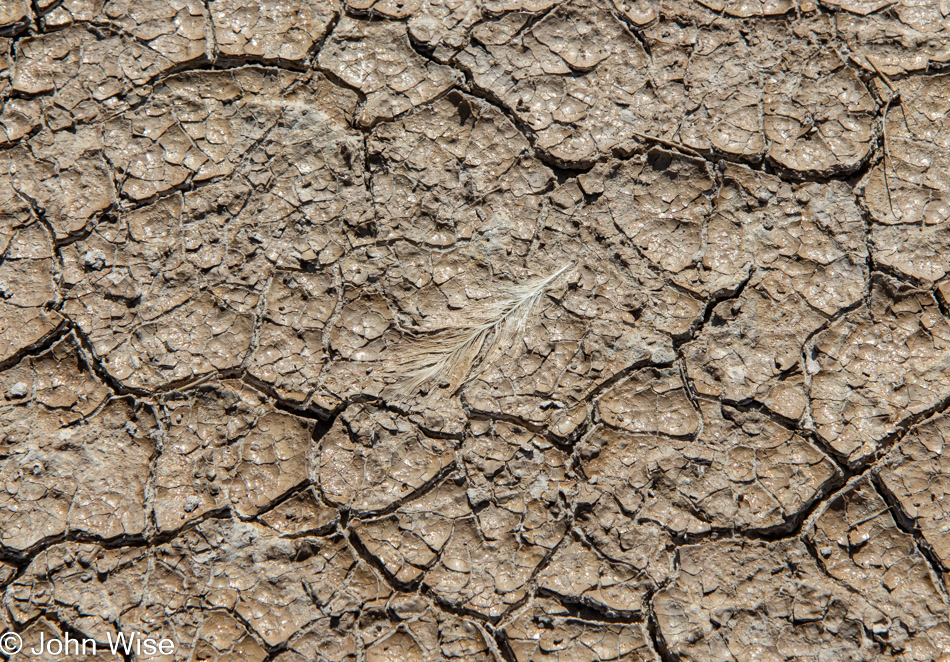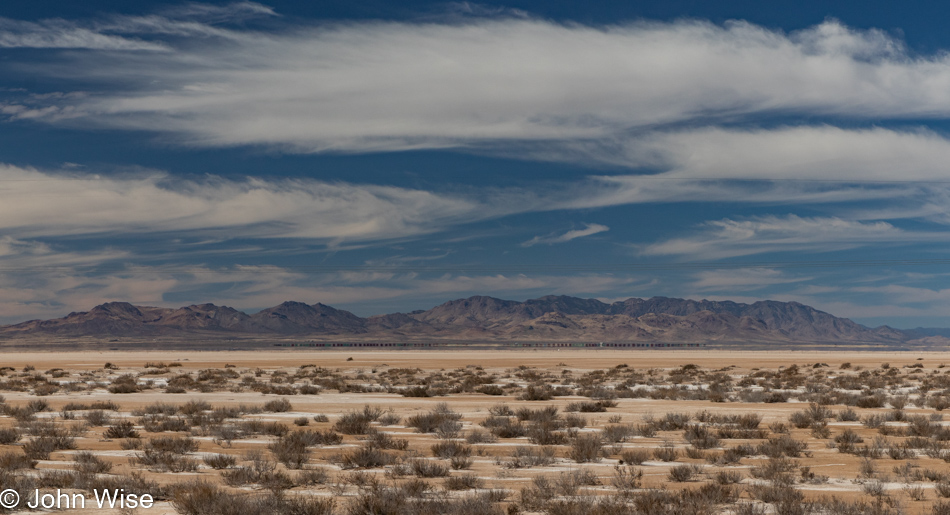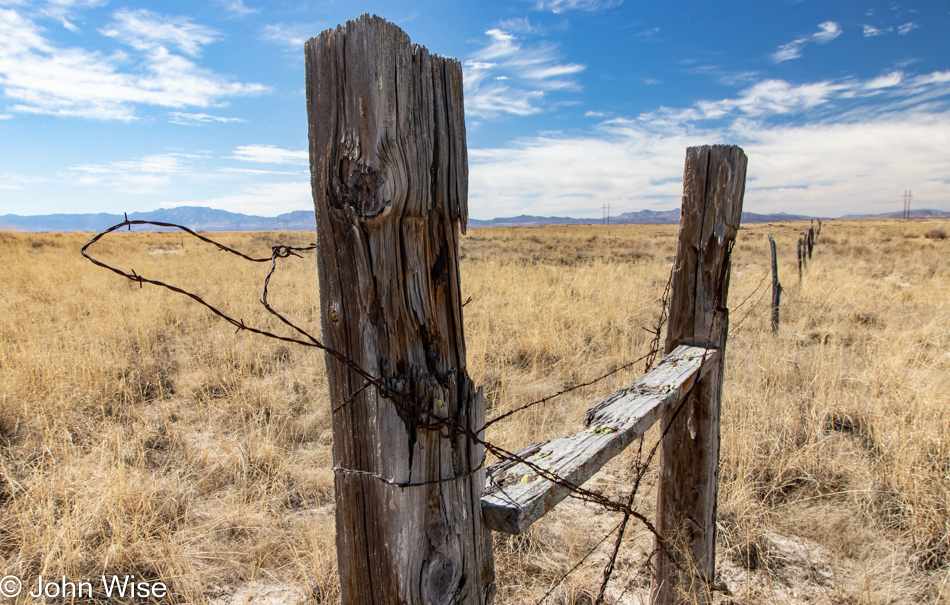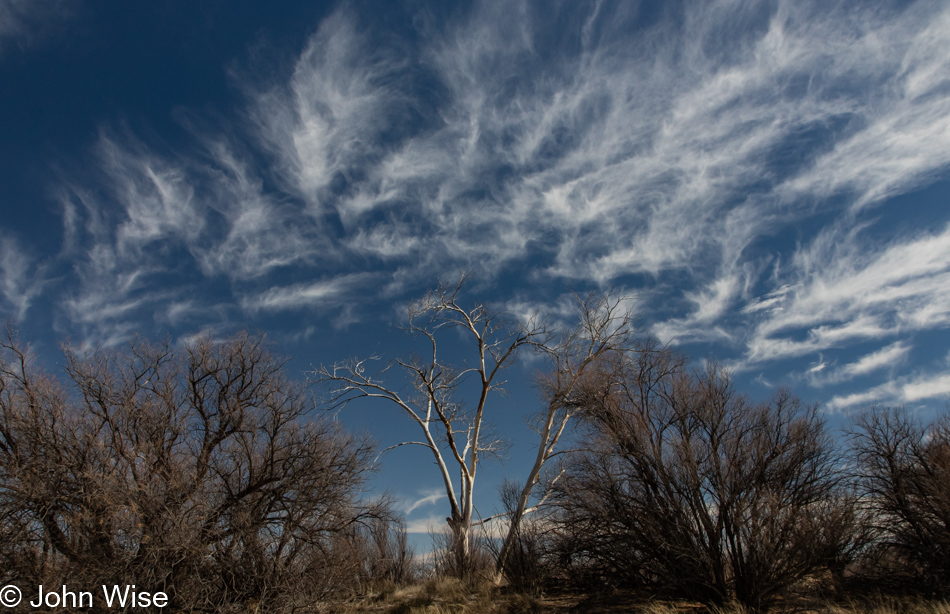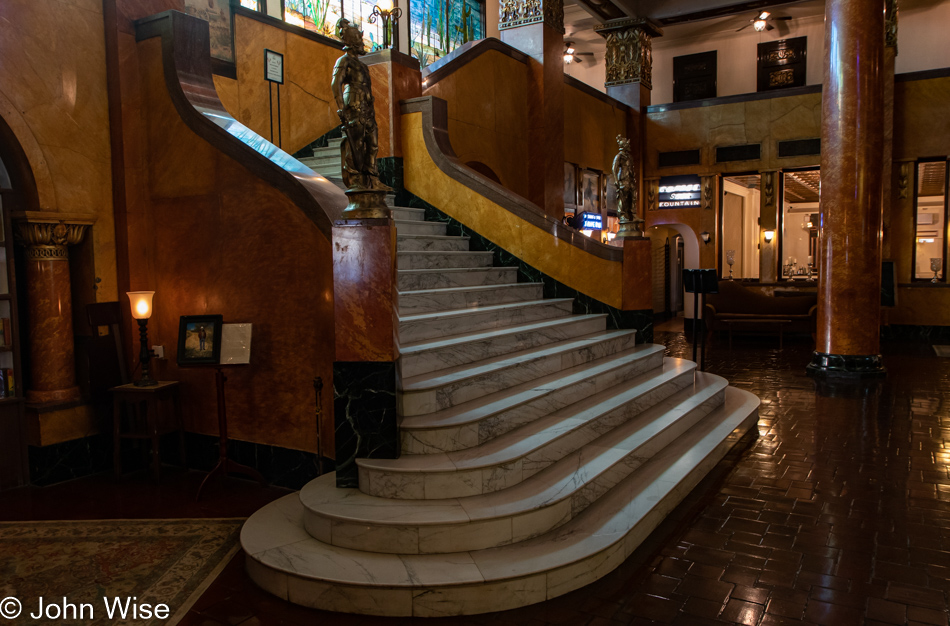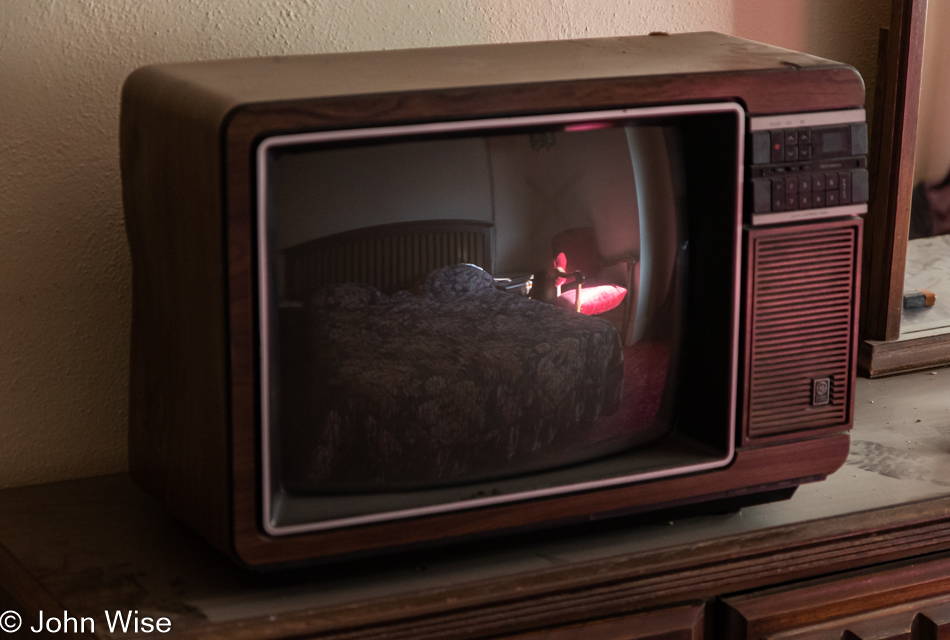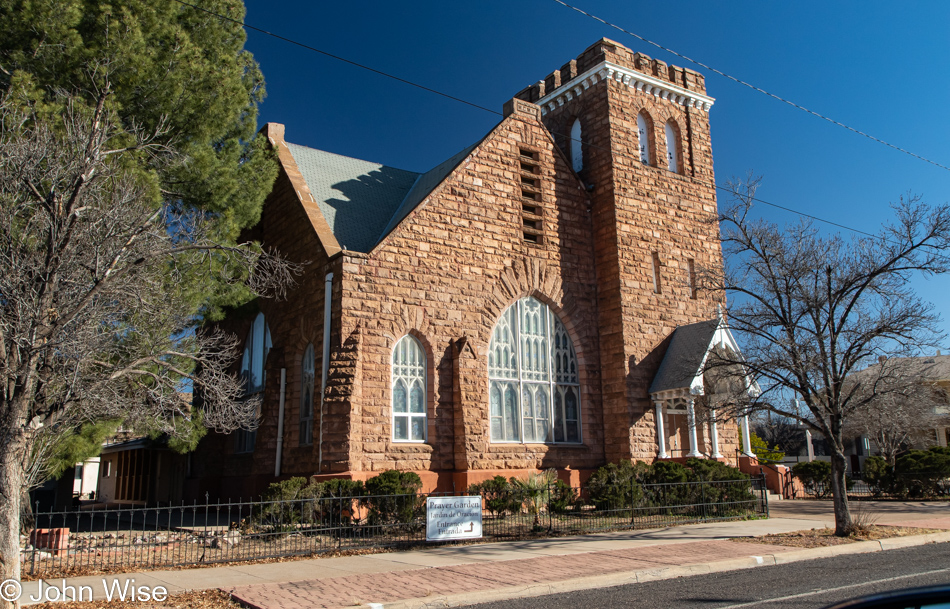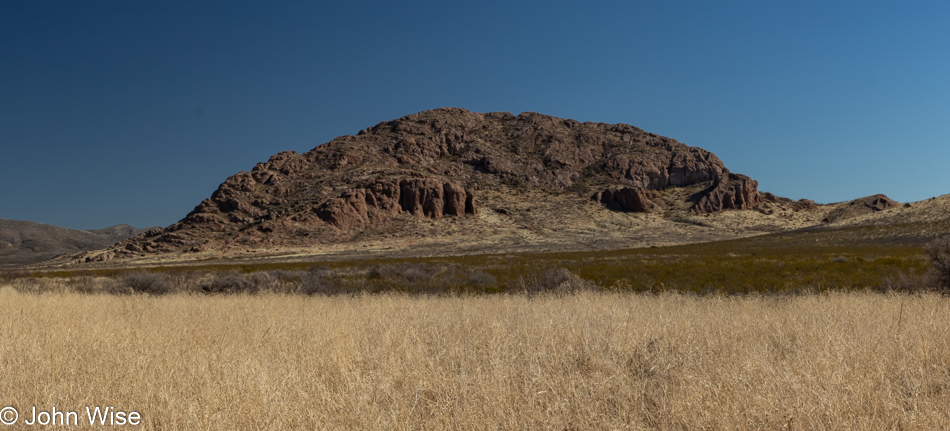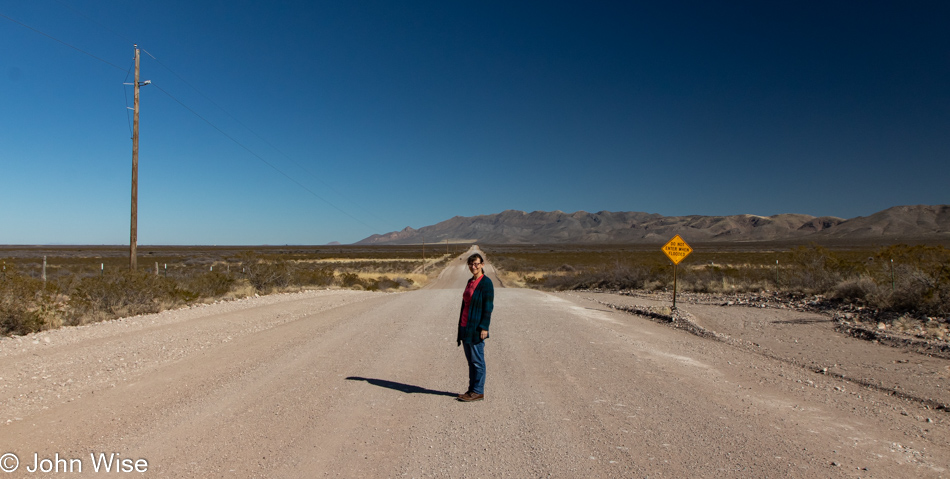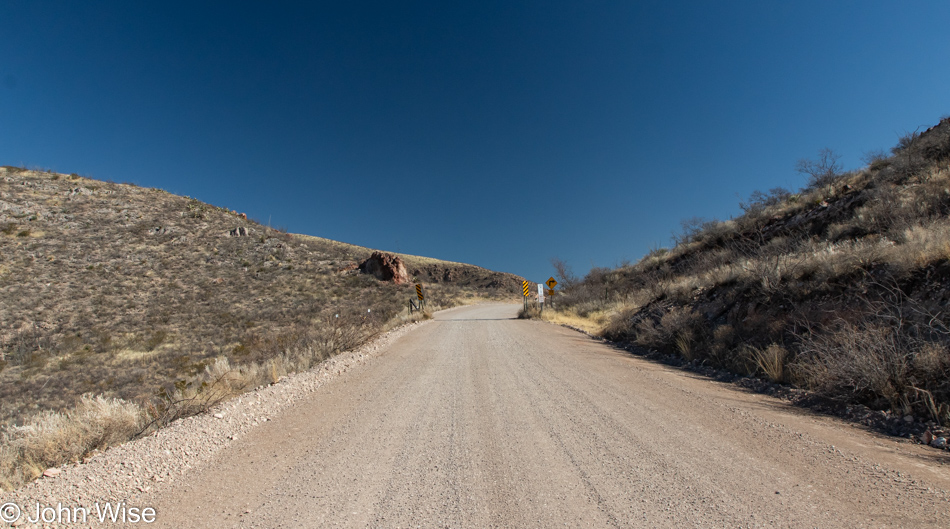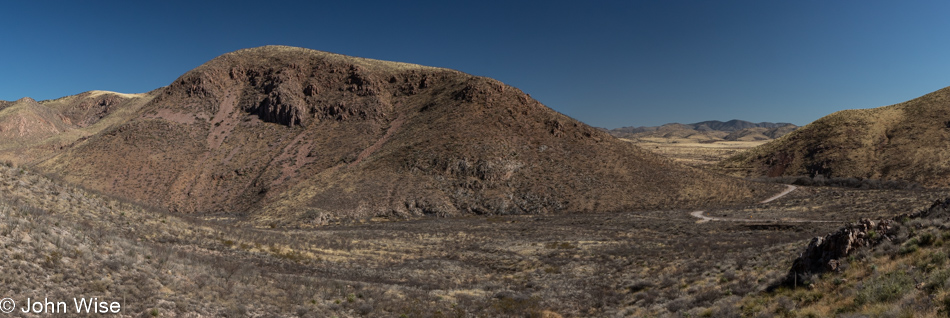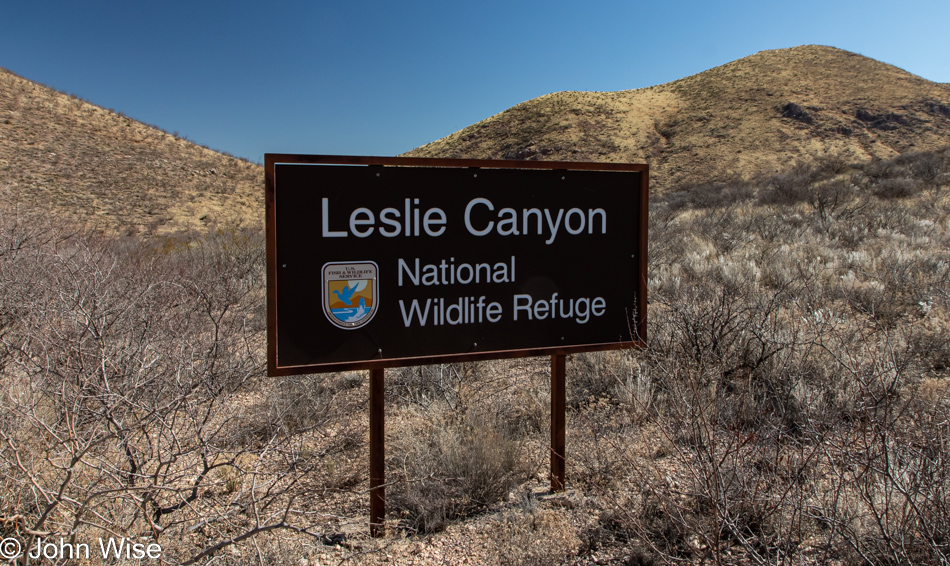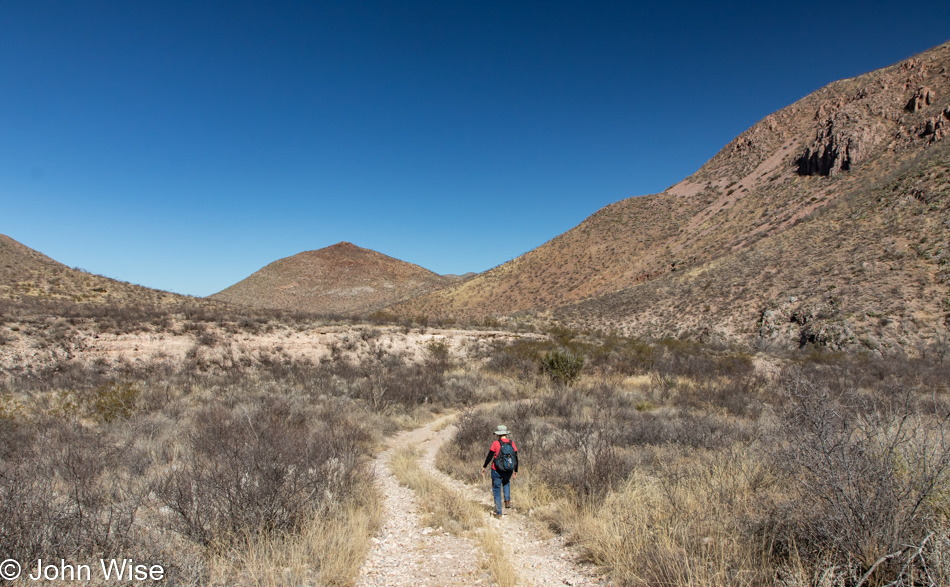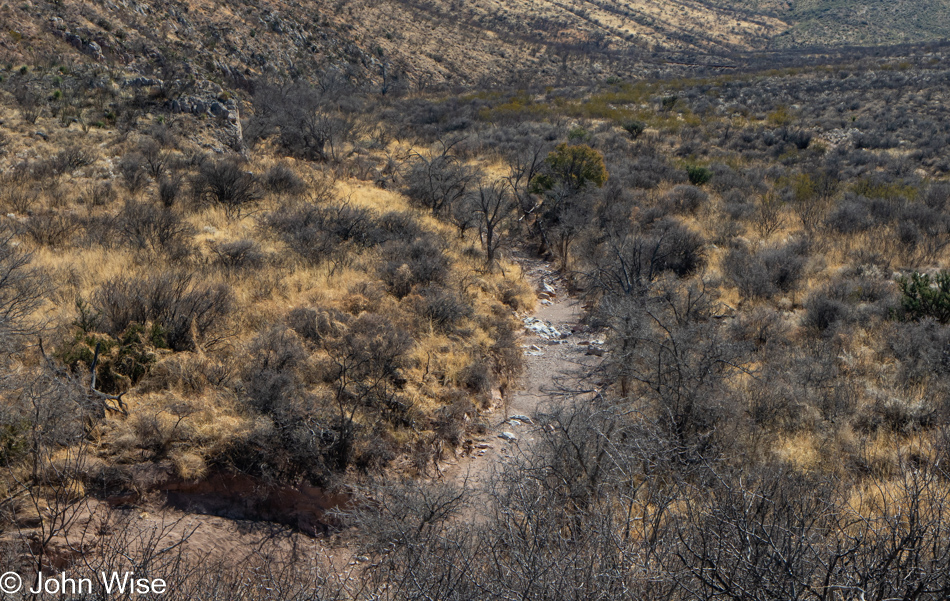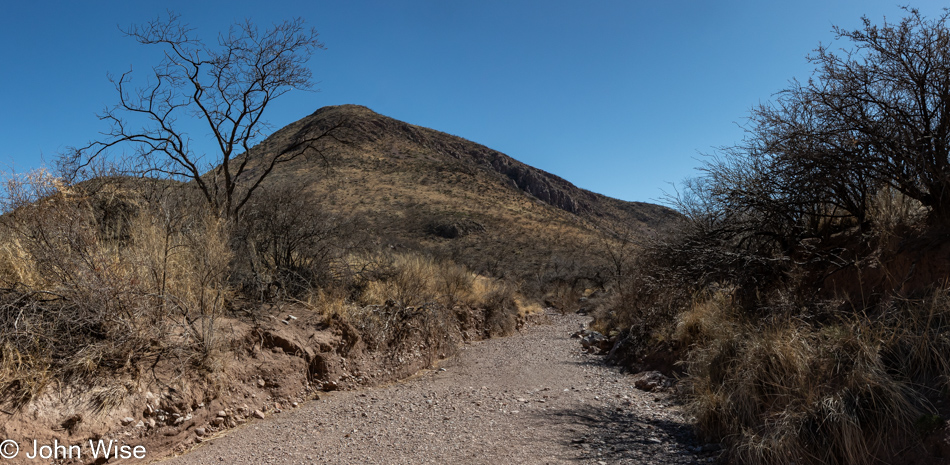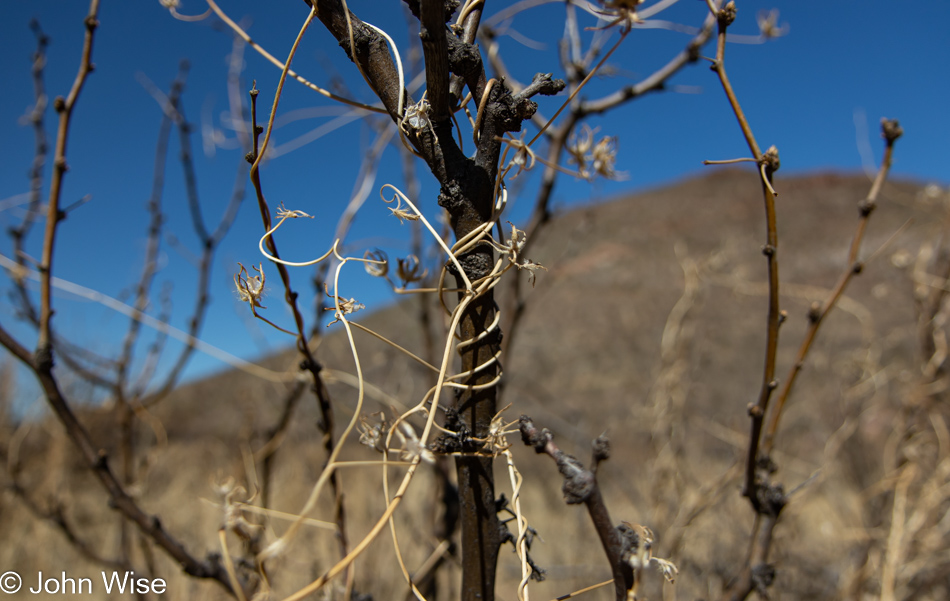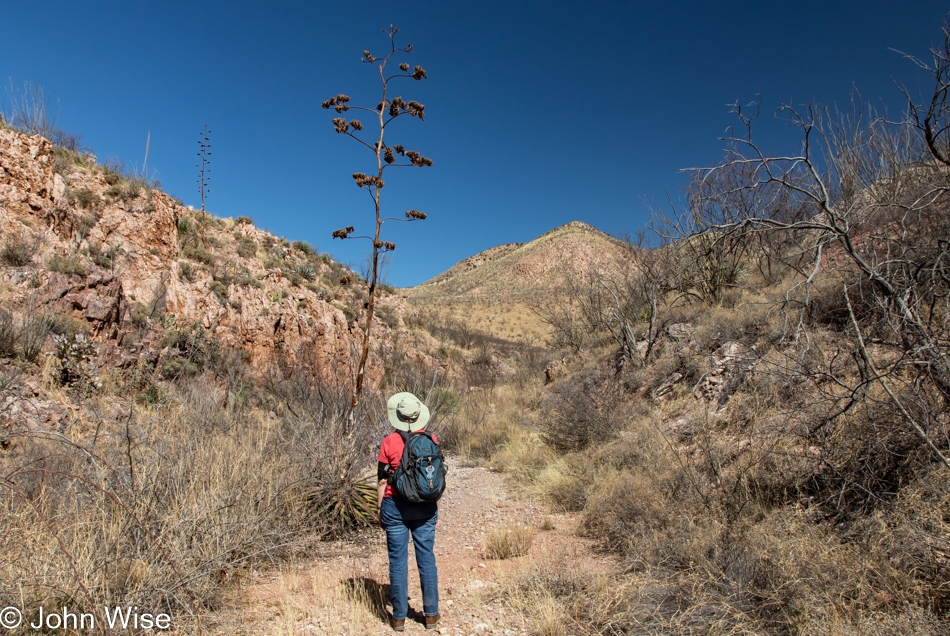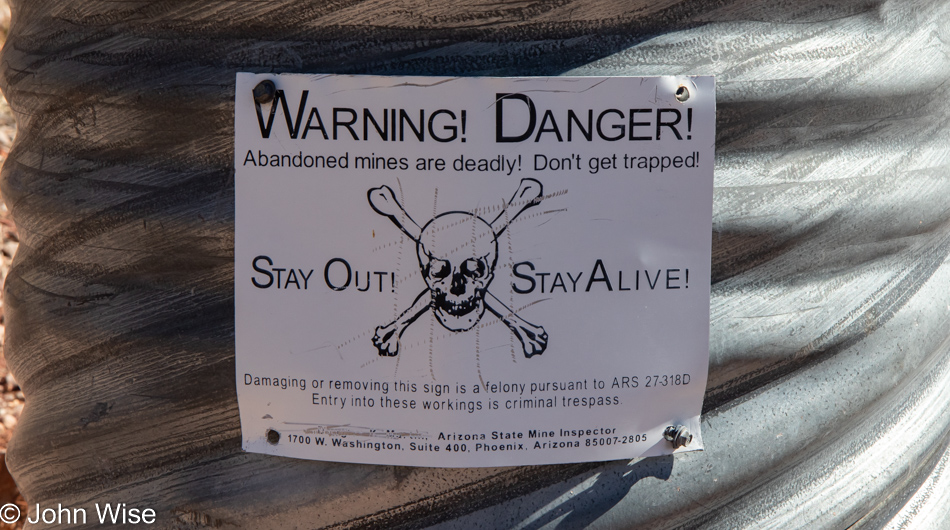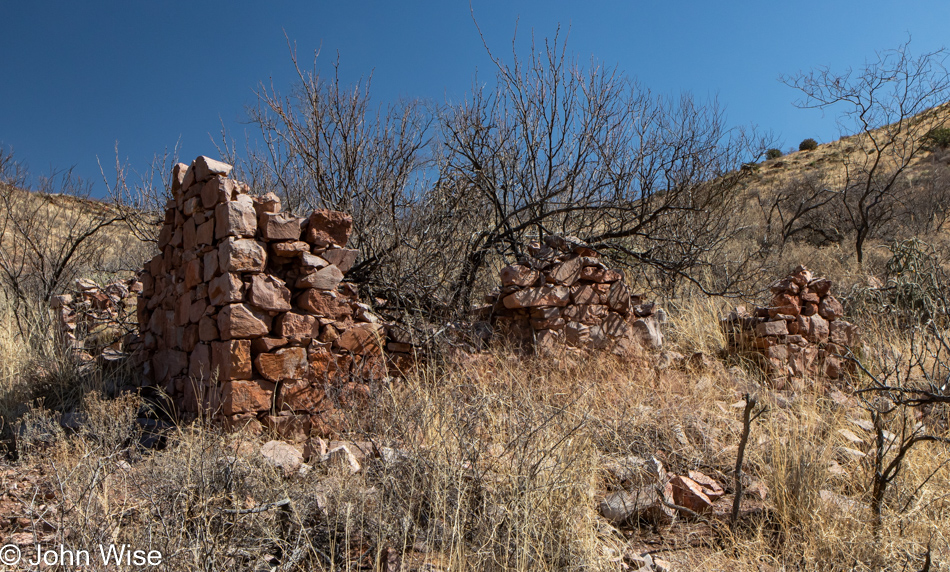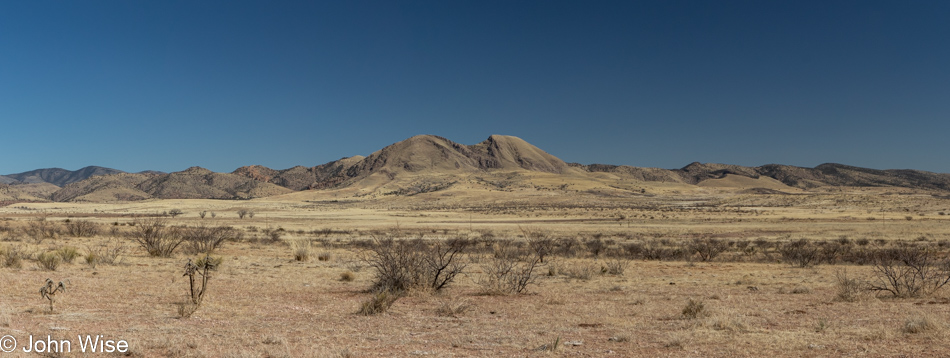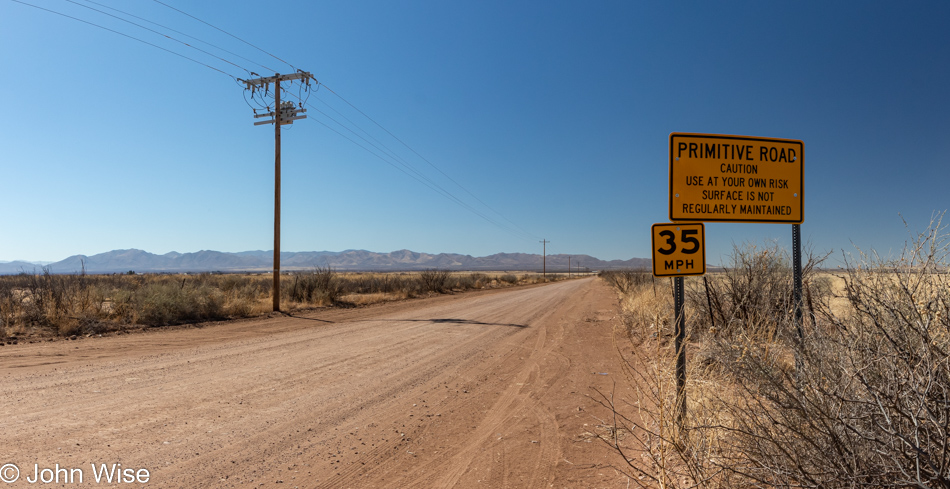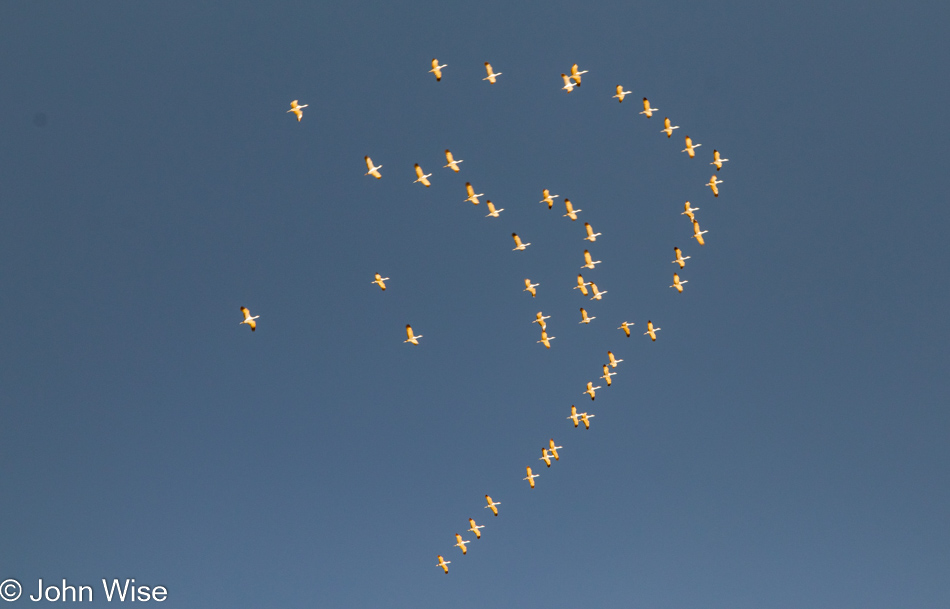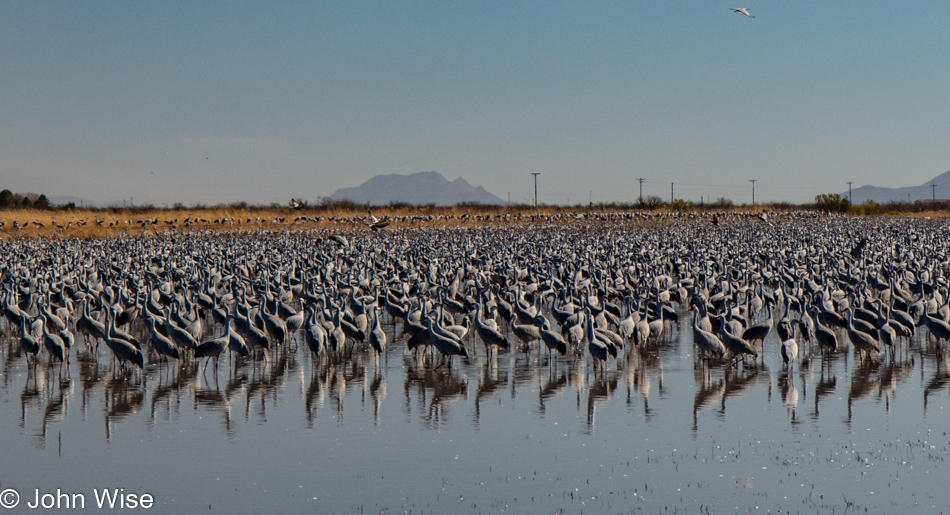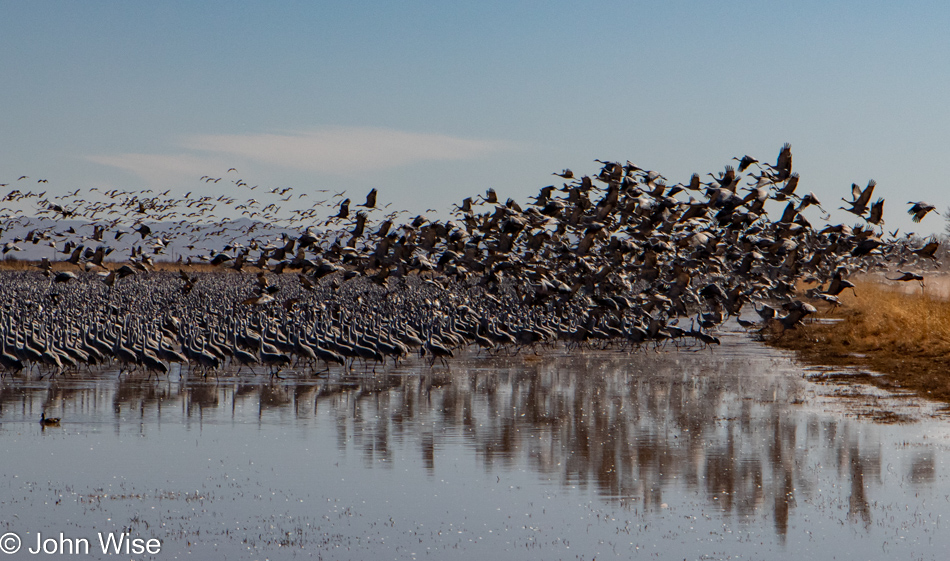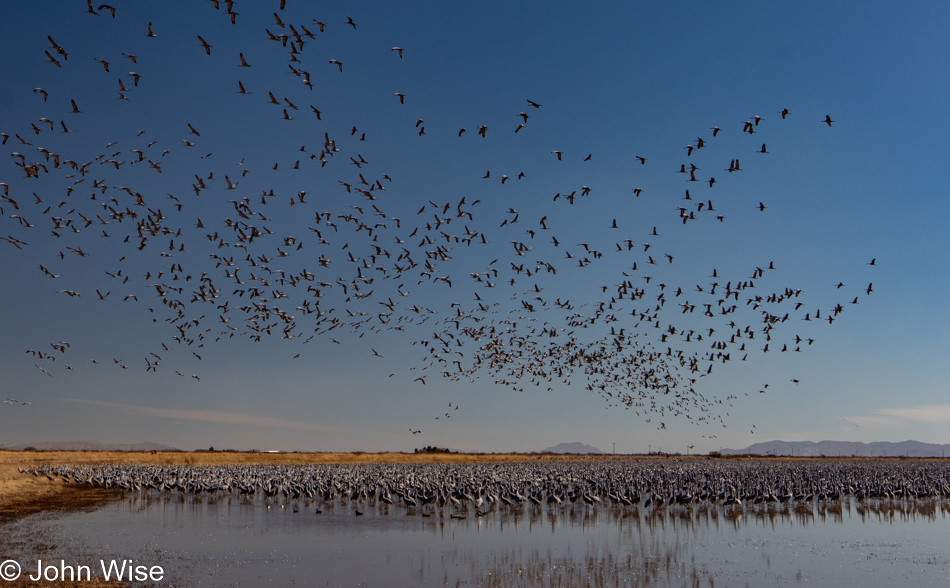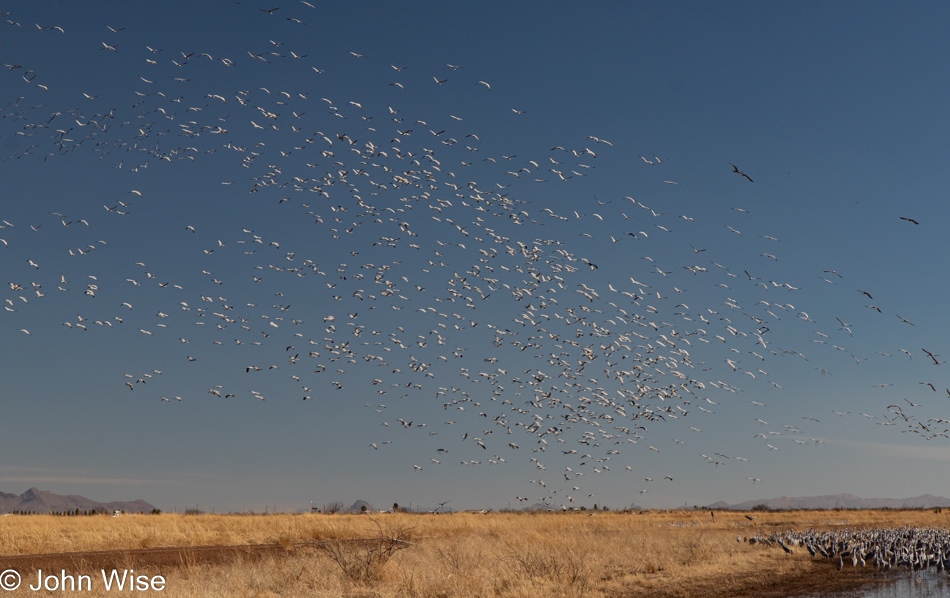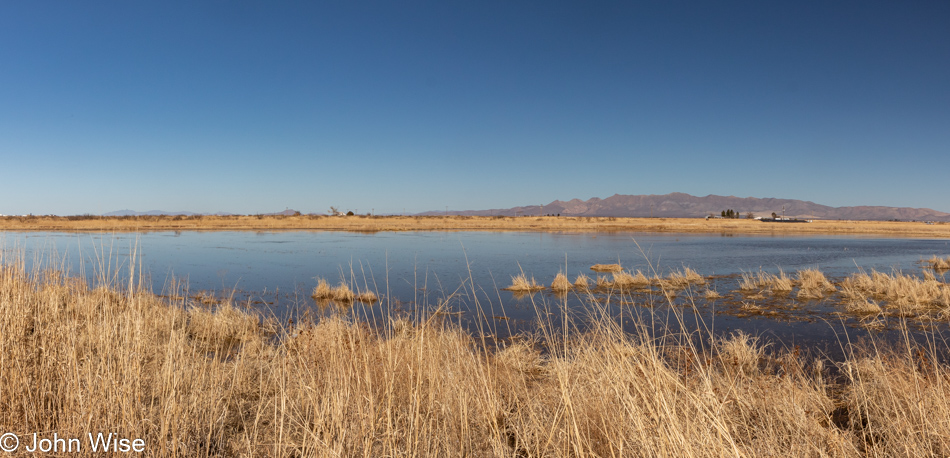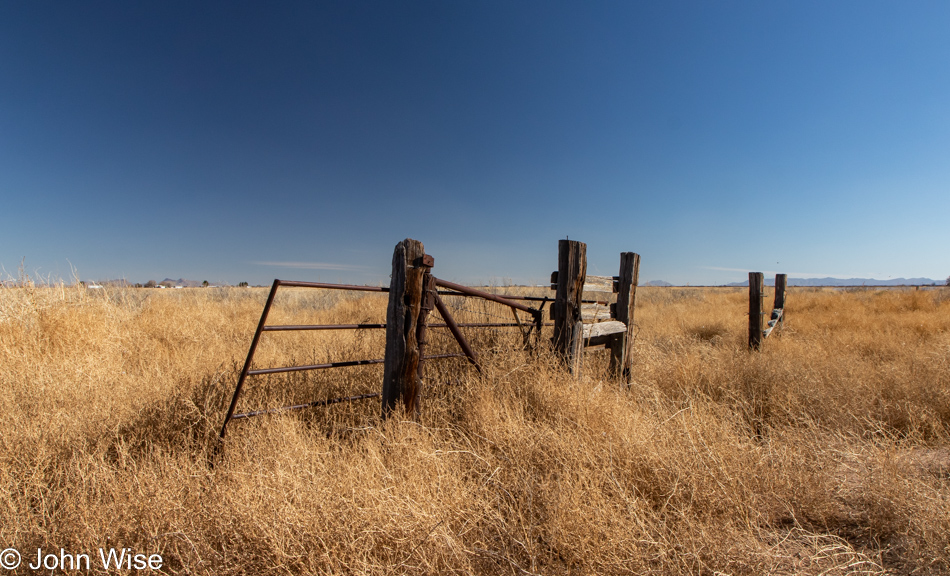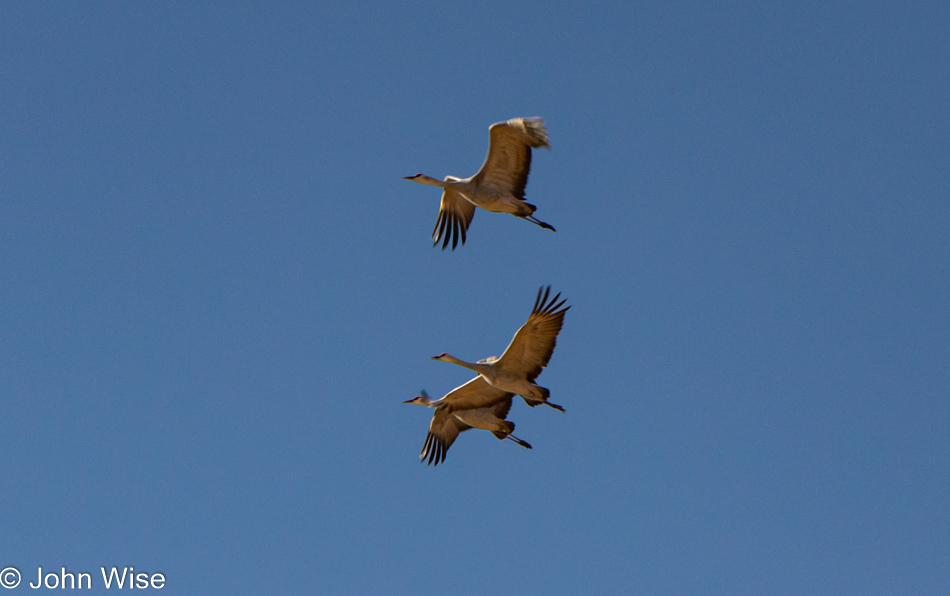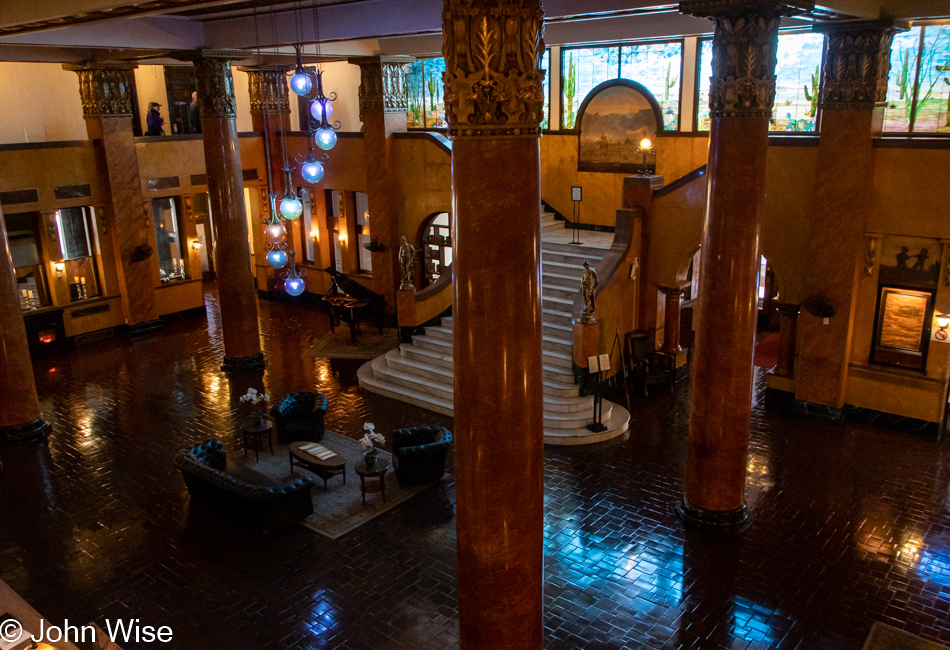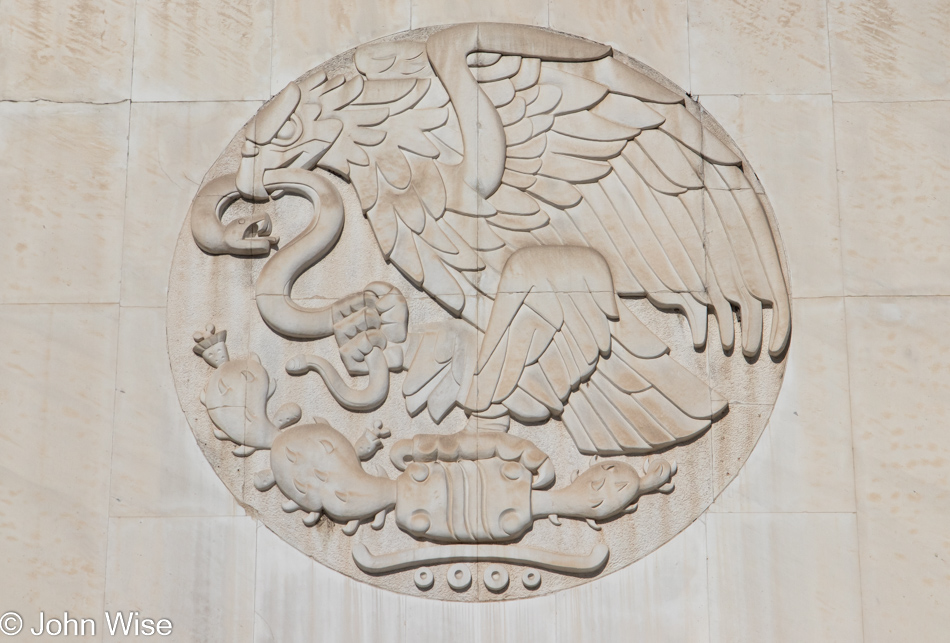
Today, we fly out to Chiapas, but we thought we’d at least look at part of the National Anthropology Museum, which was only about a 10-minute brisk walk from our hotel. We couldn’t be sure we’d have enough time to make our visit meaningful if we tried racing over when they open at 10:00. Well, this is one of those lessons not to trust Google as on a lark Caroline went to the museum’s website that said they were opening at 9:00. Turns out that everyone else checks Google too because we had the place to ourselves for nearly 40 minutes and we didn’t even leave our hotel until shortly after 9:00. While we hoofed it and didn’t begin to scratch the surface, the experience was well worth it and promises to draw us back to Mexico City…that and a visit to Palenque and a variety of other archeological sites throughout Mexico.
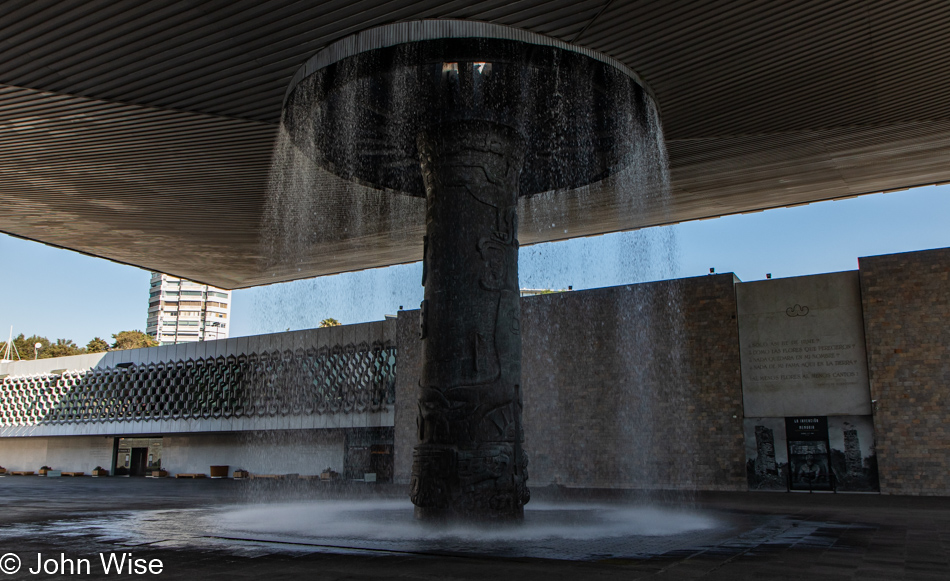
Again, I’m in a situation where I’m able to eke out just enough time to prep photos; too many photos, but I’ll worry about which ones to remove later. In the meantime, this allows those who do follow our adventures to at least get a glimpse into the adventure…
…well that was then, March 8th to be exact, and now is now or March 27th, and from the experience of the previous weeks where I initially posted so, so many photos, I simply made them all work. This post has more than 60 images, and while it’s ridiculously long, I think I can make it work; plus, looking down below, I can’t see any photos that could be easily removed.
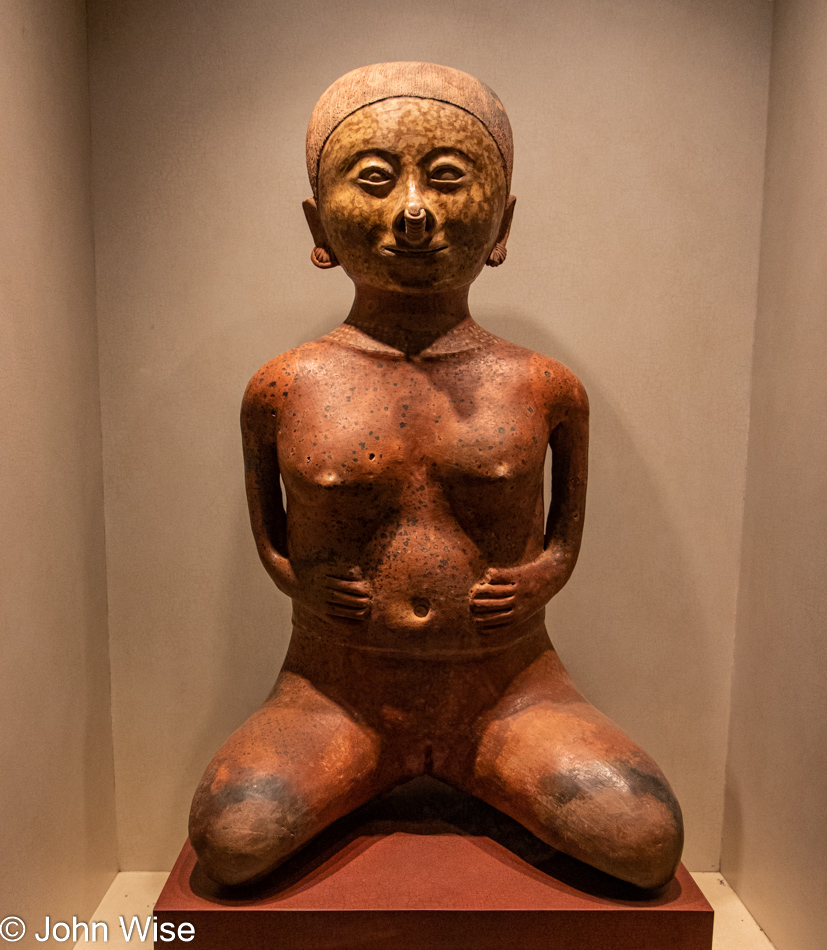
A mother in the birthing pose appears to be made of terracotta and somehow survived the approximately 2,000 years since she was first formed. Pardon the obvious, but I need to throw out a Viva la Vulva! not only in recognition of all the women we saw in the race a couple of days ago, the women who’ll take to the streets today on International Women’s Day, but also from the future when tomorrow, walking around San Cristóbal de las Casas, I’ll photograph some graffiti that says just what I shared regarding the vulva. It’s great knowing that the cultures of these lands have been able to celebrate the important stuff from time to time.
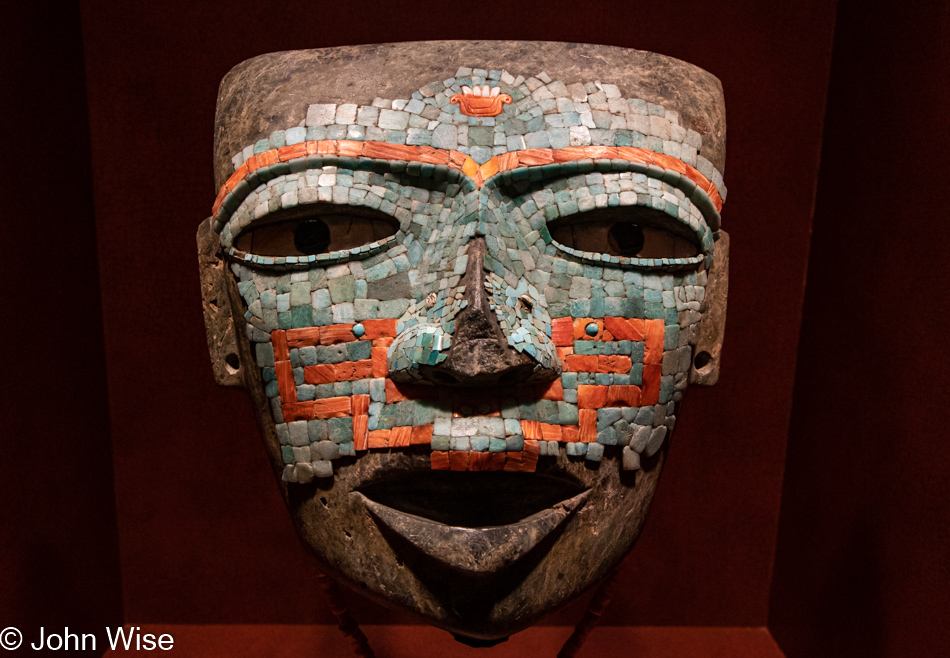
Mask of Malinaltepec warrior used in fertility and funerary ceremonies. Dates from between 600 and 750 A.D.
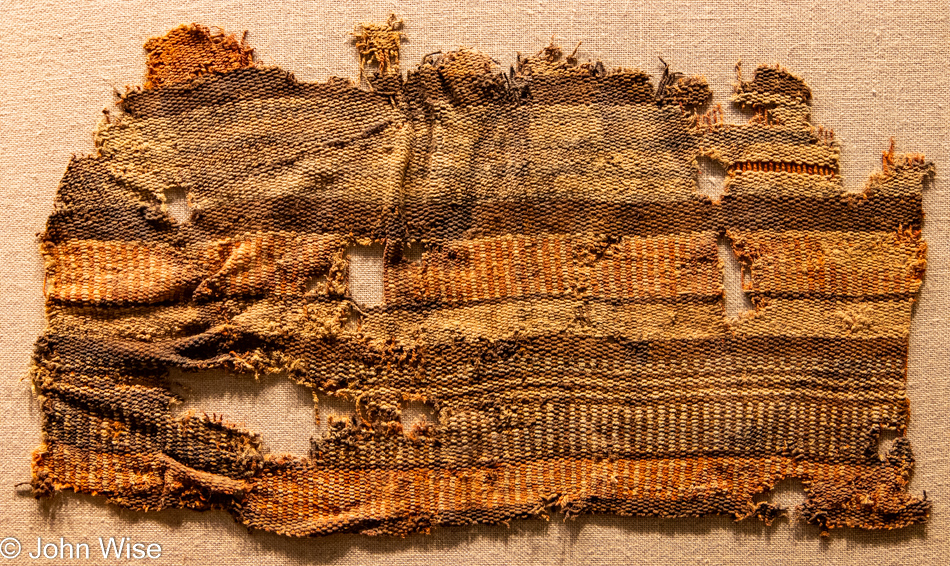
On a trip to Mexico with a focus on textiles, it is only natural that if we see some old cloth examples, I know that Caroline will tug my sleeve asking me to capture the design, so I just make it a point to photograph them all. By the way, it’s been my experience that the Google algorithm for image matching of textiles is poor. Why does this matter? The Google and Bing image search function has come in very handy from time to time.
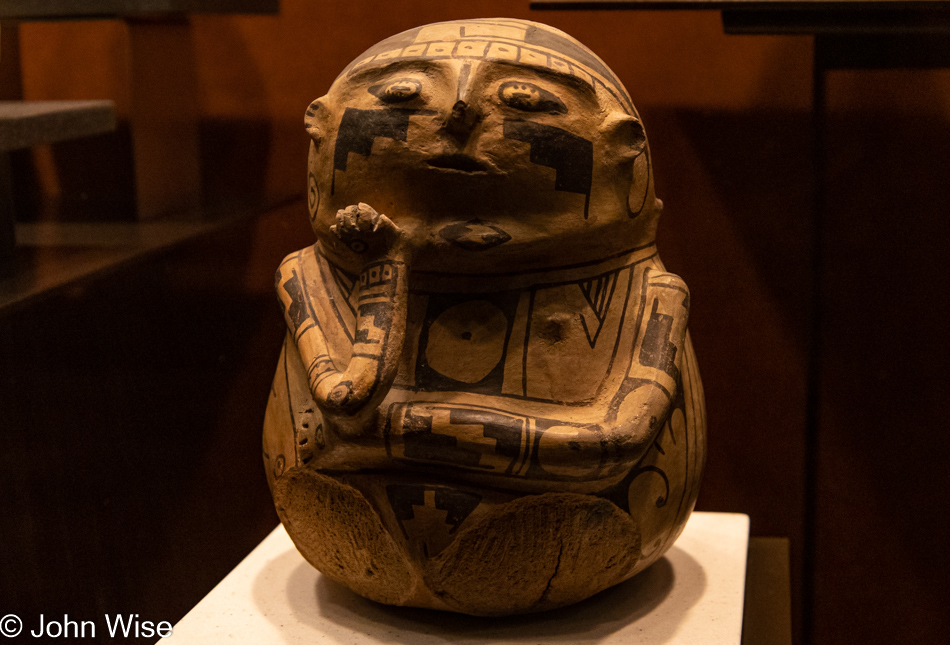
A ceramic figure in contemplation of trying to figure out why someone is doing something so stupid as to baffle the observer, or maybe the person is in astonishment as they were creating this as a self-portrait and are marveling at how well their sculpture is turning out. Okay, this is my interpretation, and as an authority regarding myself, I can assure you that my thoughts about this are straight out of my mind and are likely as correct as they’ll ever be.
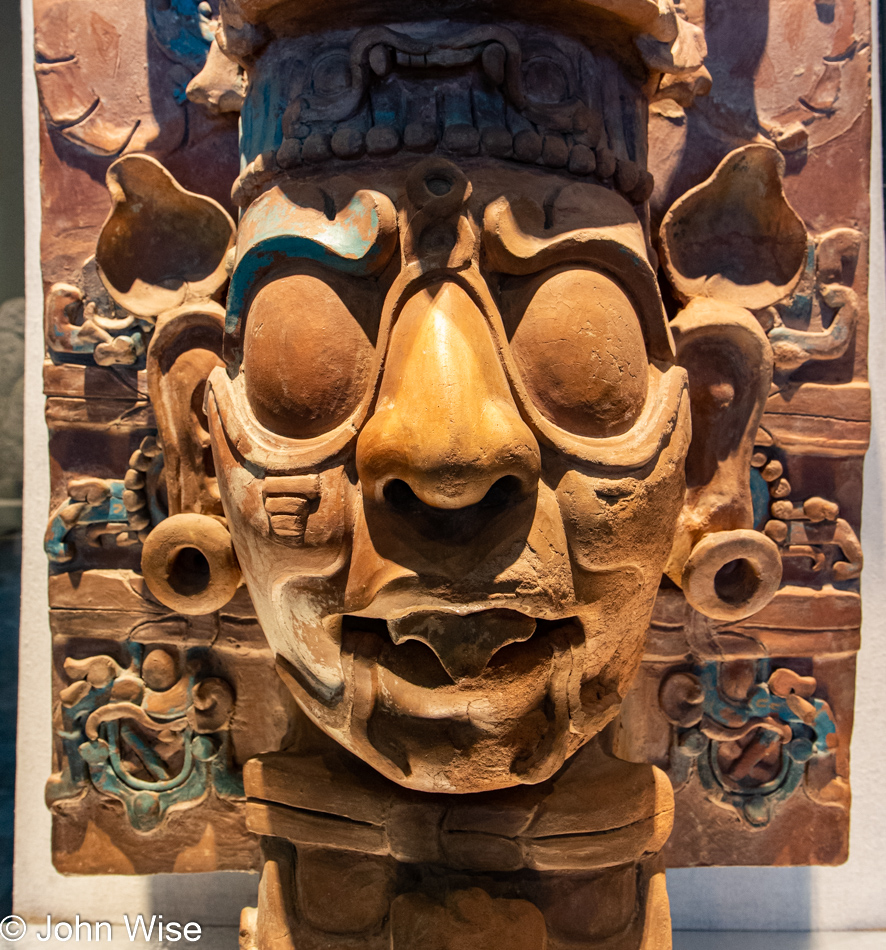
Entering the Hall of the Maya, we find this quote from the Popol Vuh that I likely poorly translated, “Don’t fall down, not even on the way up. Do not find obstacles behind or in front of you. Nothing stops you. Grant us good roads, beautiful flat roads.”
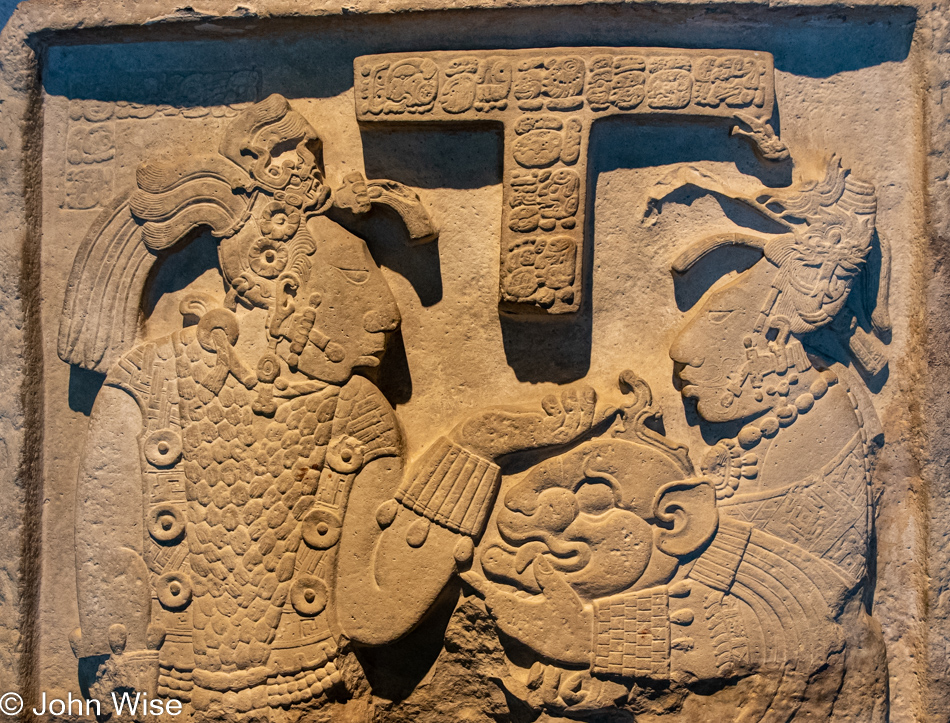
You, we, us, are looking at Dintel 26 de Yaxchilán which is a lintel from building 23 in Yaxchilán, Chiapas. Carved 1299 years ago by Mayan hands, this limestone monolith carries a lot of meaning. On the right is Lady K’ab’al Xook, who is offering her consort Kokaaj B’ahlam III (sometimes known as Itzamnaaj Bahlam IV or Shield Jaguar) a jaguar headdress. It might be nearly impossible to see in this scaled-down photo, though in the original, it’s easily identifiable; the huipil of K’ab’al Xook has frogs embroidered on it. Over the next days on this Mexico adventure, we’ll dig deep into the history and motifs of the huipil, a woman’s tunic-like garment.
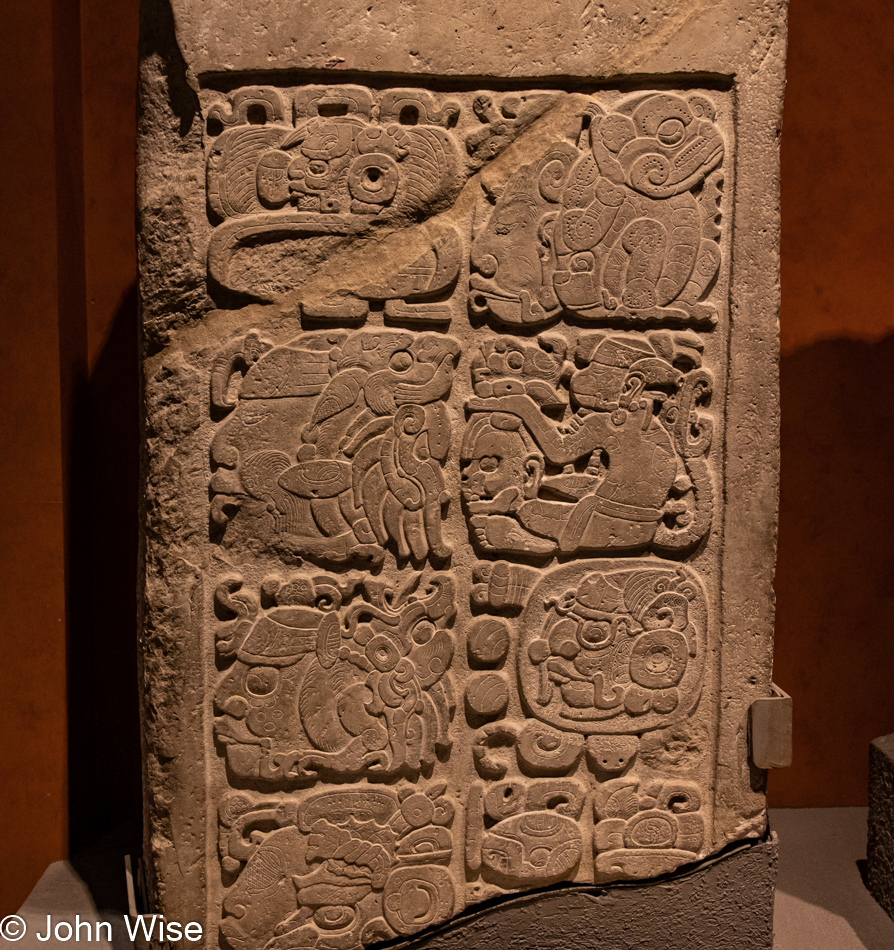
Dintel 48 de Yaxchilán. This lintel was from building 12 and is one of eight panels that were once there. They appear to depict a list of the first ten rulers of Yaxchilán.
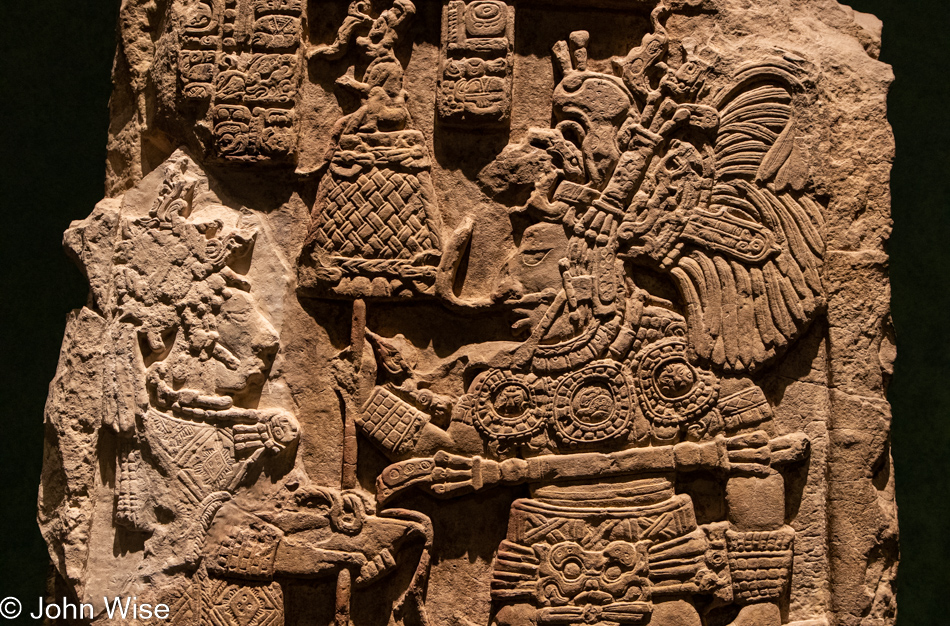
The origin of Dintel 43 de Yaxchilán should now be obvious. This lintel shows a figure with a huge feathered headdress carrying a ceremonial staff.
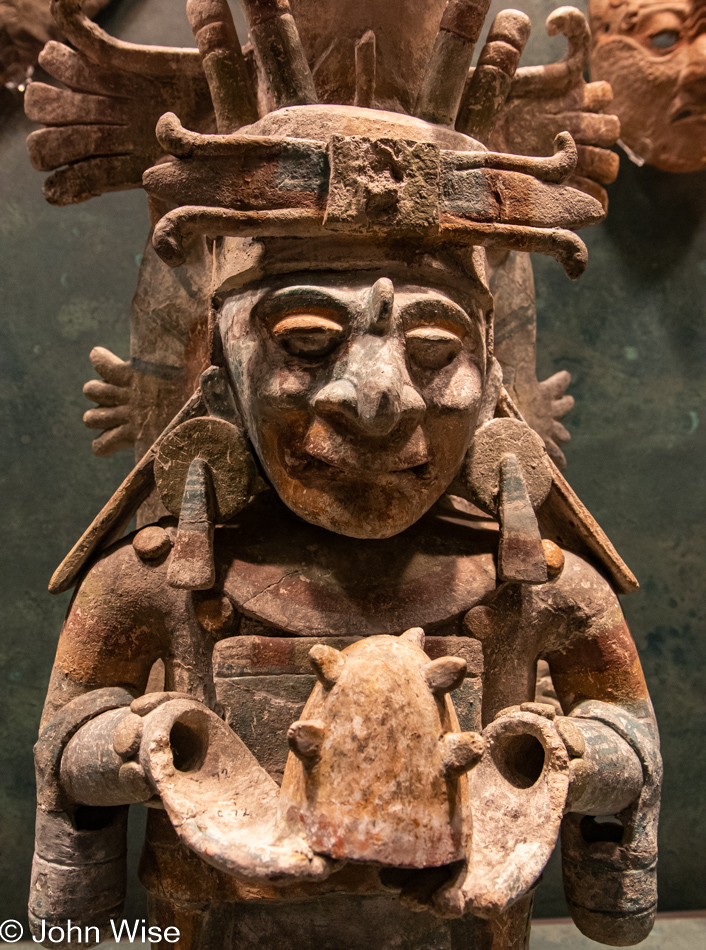
This is one of the many Mayan gods depicting a trade such as merchants, warriors, or cocoa farmers and, as such, belonged to the priestly caste of society.
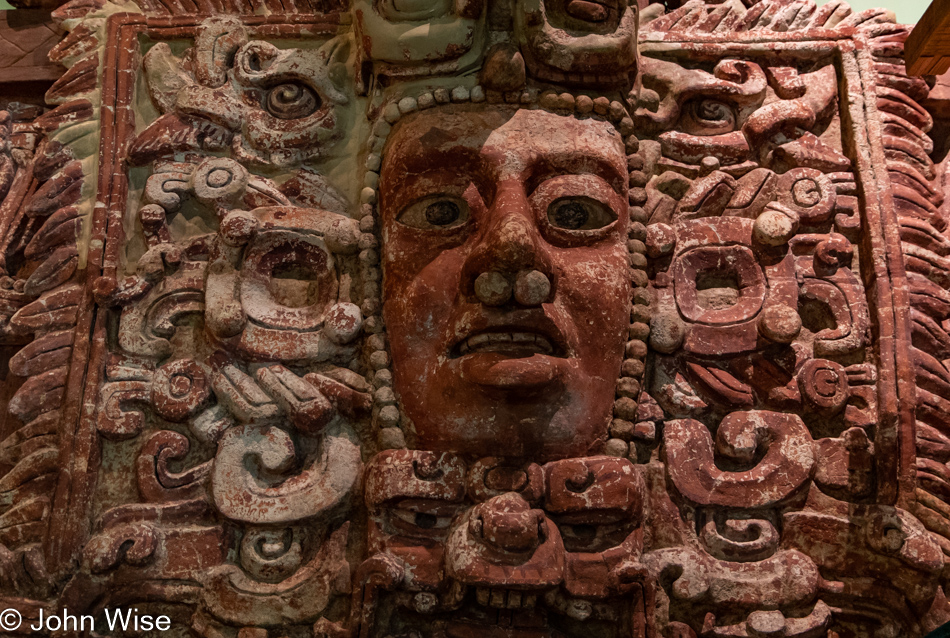
This stucco frieze from Placeres, Campeche, was surrounded by scaffolding as things were being renovated or restored; the details were not clear. Consequently, parts of it were obscured, and the lighting was horrible, though, with the magic of Photoshop, I feel like I was able to extract a pretty good image from what I shot. The piece is from the early classic period of Mexican culture dating from about 250 – 600 AD.
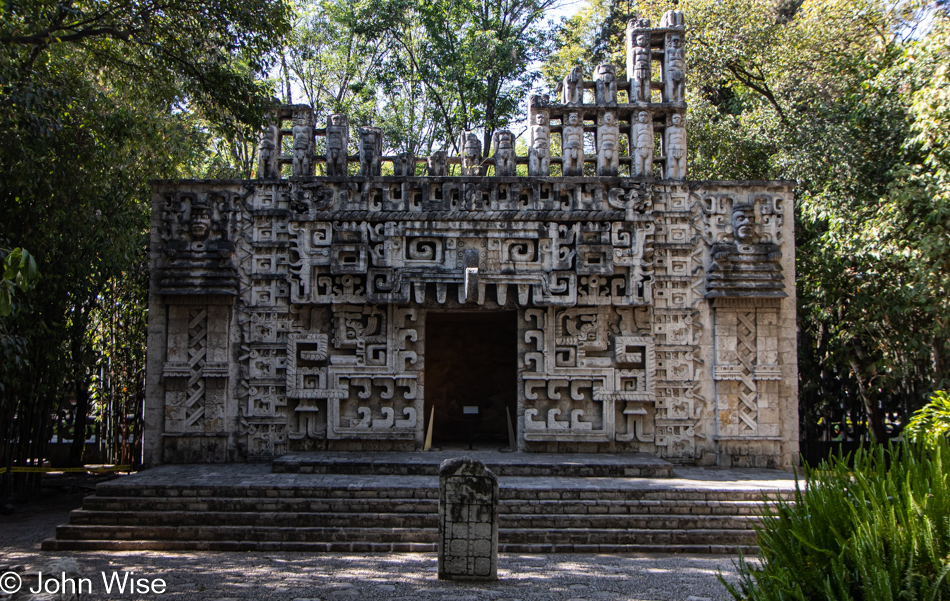
Imagine my shock of being so impressed upon seeing this and the thought this was dragged out of a jungle intact for putting on display here only to learn it’s a recreation. On one hand, I’m happy that the original wasn’t disassembled and moved here, but now I want to visit the location where I can see these kinds of things with my own eyes.
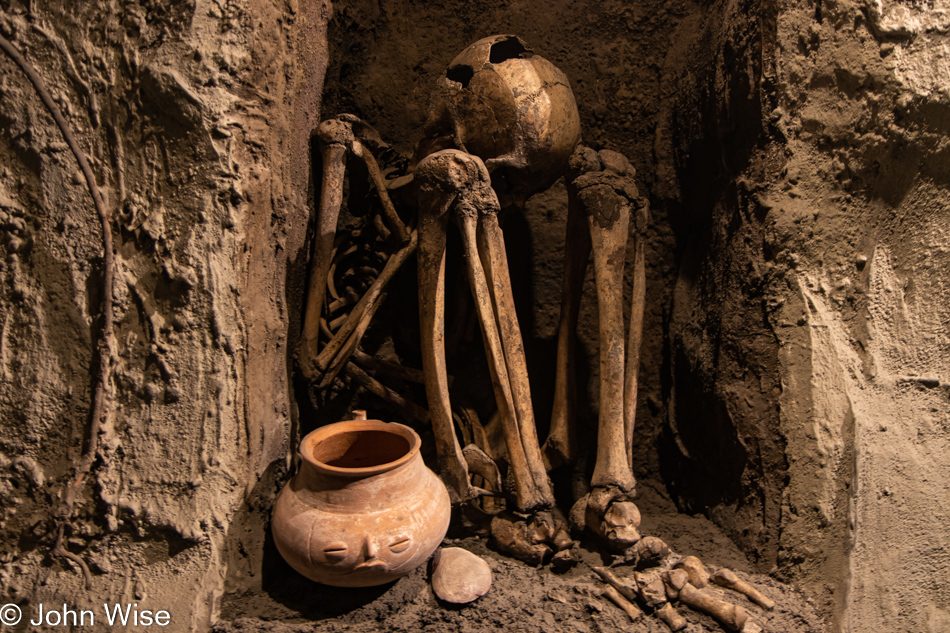
How I feel as I scroll down and see that I still have 45 more images to write about.
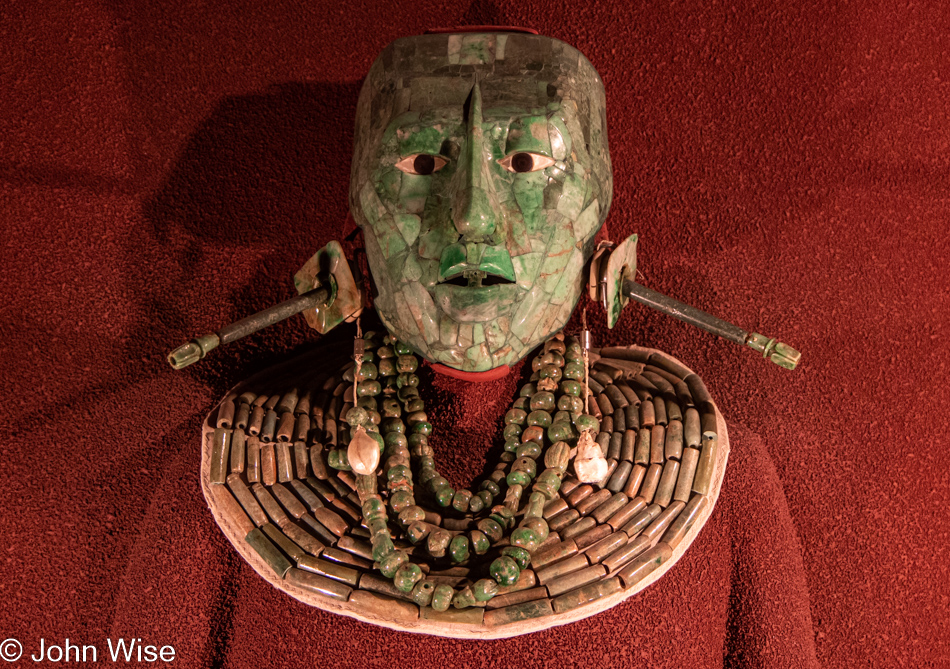
What a treat that we get to see this as, at one time, it had been stolen from this museum. Meet the Mayan king K’inich Janaab’ Pakal (also referred to as Pakal I) from Palenque, represented here by his jade death mask from about 683 AD. Of the 124 objects stolen in 1984, 111 of them were recovered in 1989 after the idiot who was trying to trade them for cocaine was apprehended.
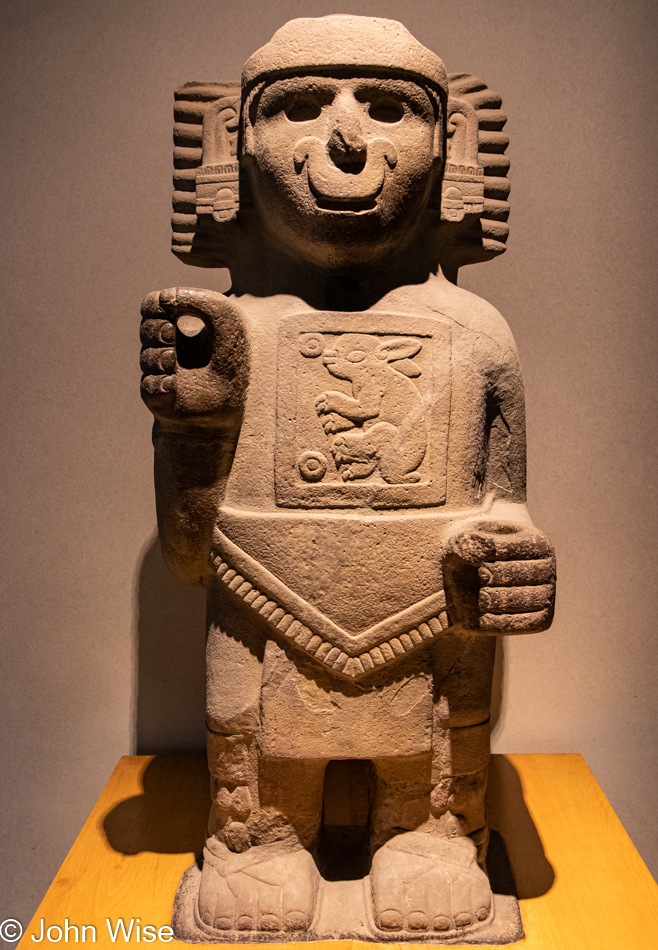
Ometochtli or Dios dos Conejo (Two Rabbit God) was a minor Aztec deity relating to pulque, an alcoholic beverage made from the maguey (agave) plant and its many rituals. He was also part of the Centzon Tōtōchtin (400 rabbits), a group of divine rabbits known for their drunken parties.
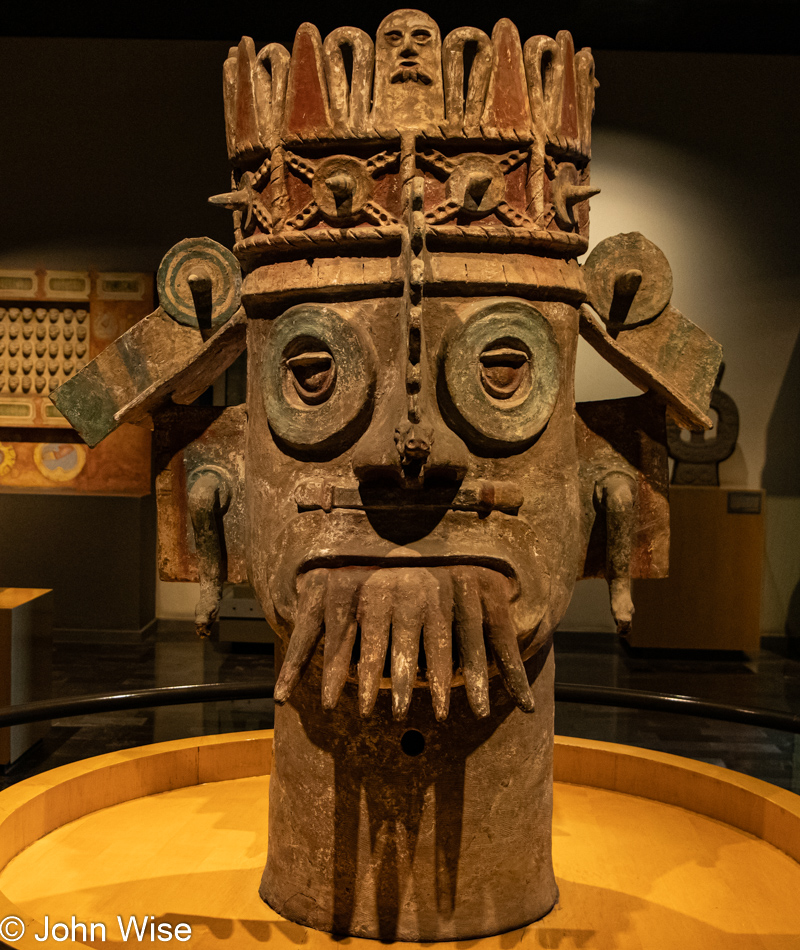
God of Water or God of Rain and Storm, I’ve seen Tlāloc referred to as both; I can see how he could be considered so.
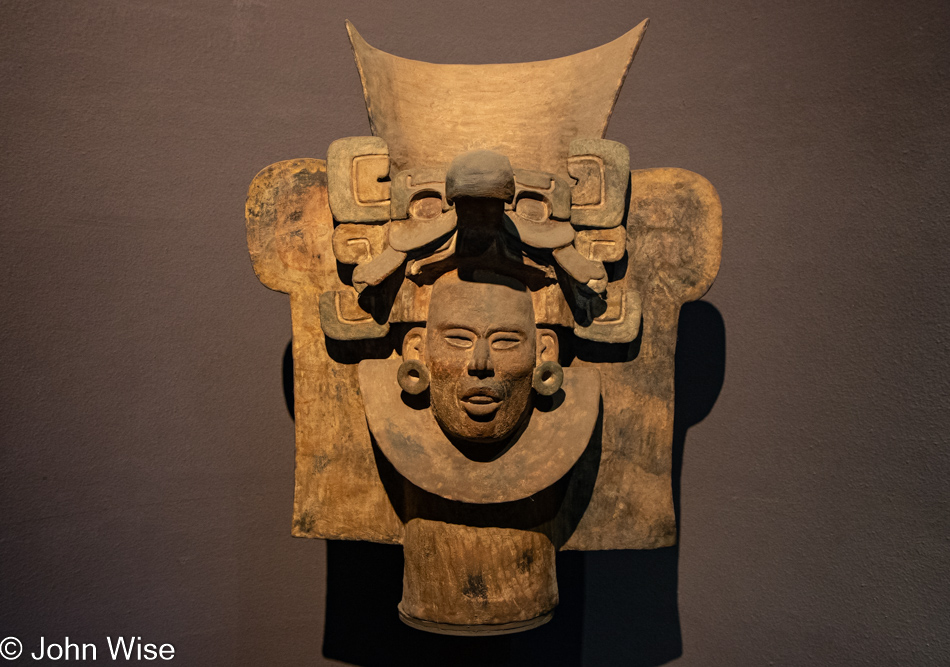
Vessel titled Ave del Pico Ancho or Broad-Billed Bird, according to Google Translate.
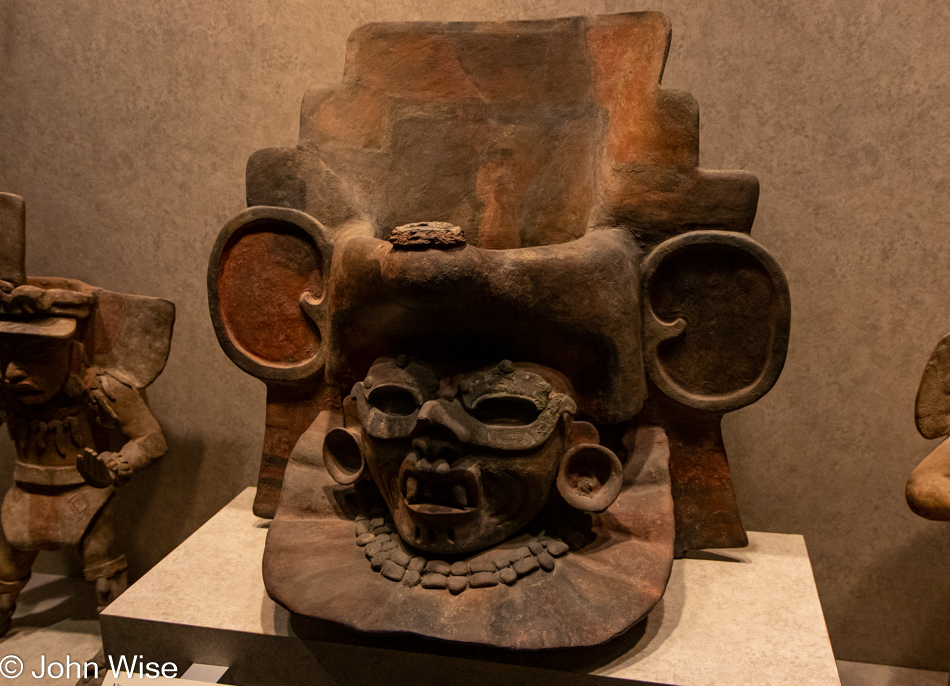
I think this sculpture is also a vessel, and if I’m not mistaken, I believe this is another version of good old Tlāloc.
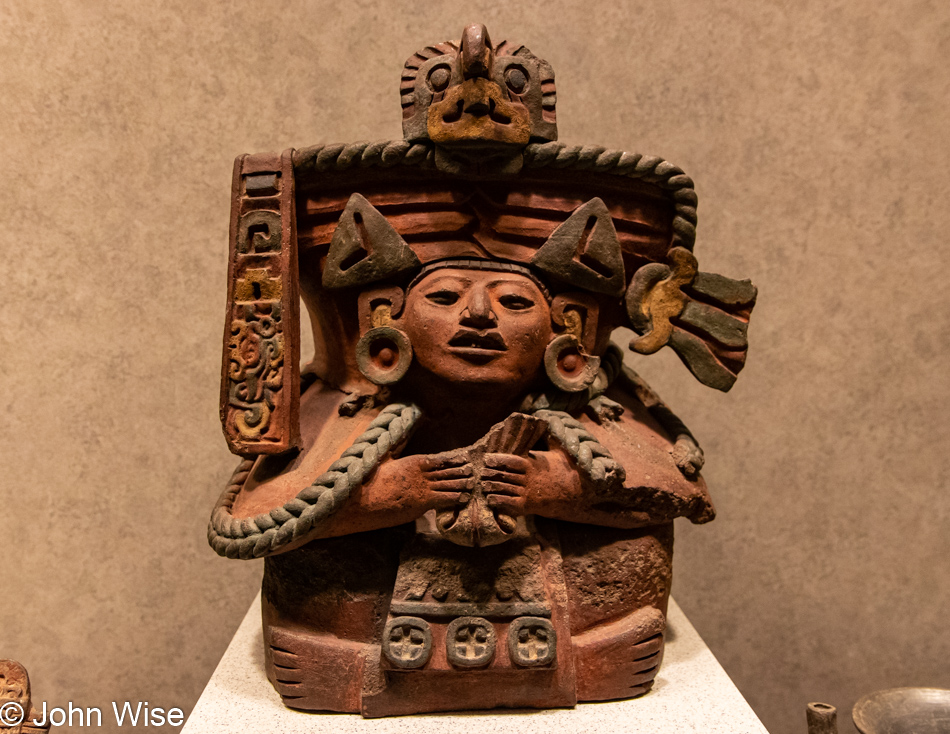
Another clay vessel, this one, is of Zapotec origin. Zapotecs or Be’ena’ Za (Cloud people) are the indigenous people of Oaxaca.
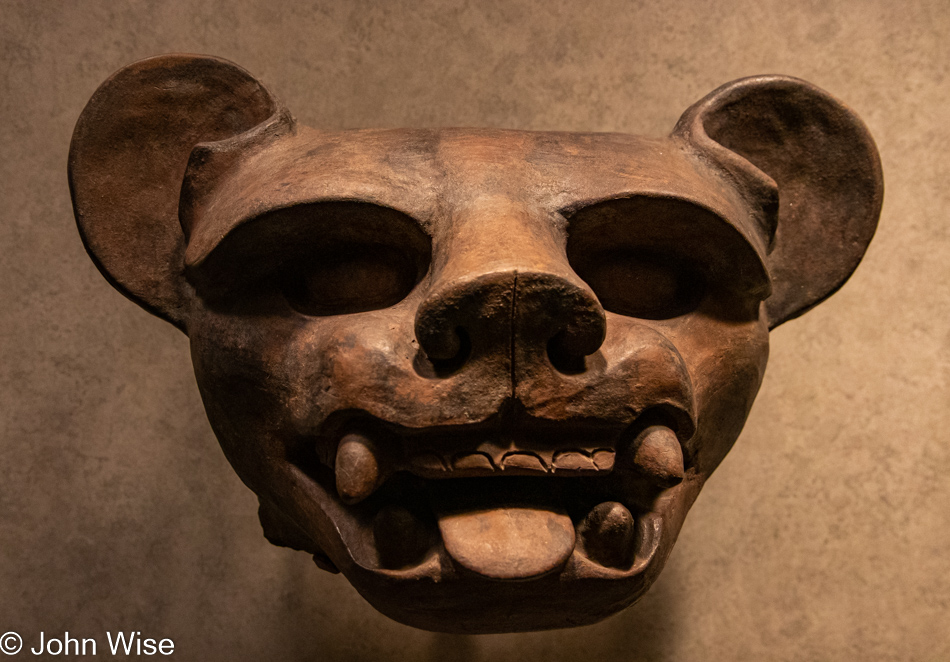
I’m guessing that this is a mask of the jaguar, but it’s only a guess.
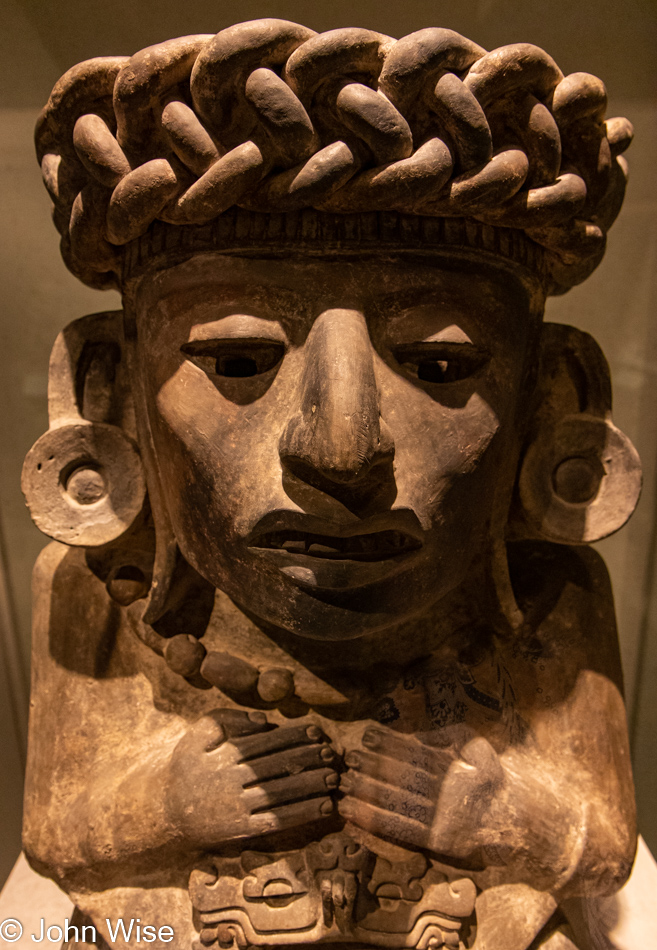
Let me introduce you to the Goddess 13 Serpent. The position of her hands, the braided crown, and the ears adorned with jade discs identify this statue as a deity.
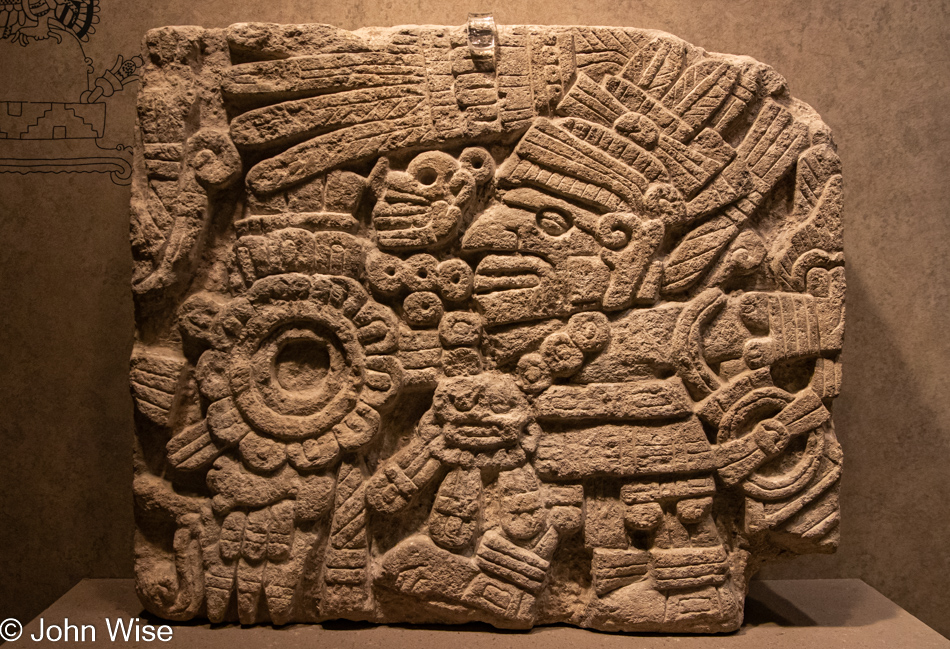
There was a placard on this sculpture that seemed uncertain in its description that reads something like, “A tombstone that bears a great resemblance to the warrior, deity, or perhaps priest, named 5 Death, Oon Diyi. In his right arm, he carries a shield with three arrows, and in his left, he carries a bag for offerings and a spear gun.” While I can’t quite make all of that out, I’ll go with it.
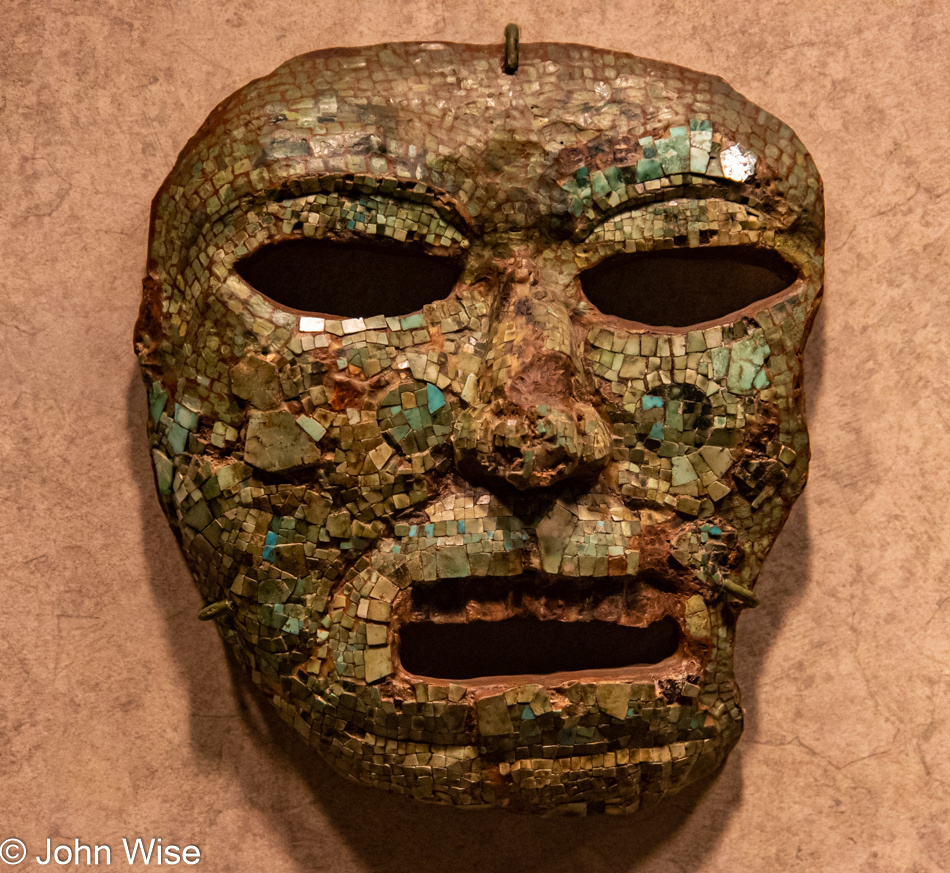
I think I’m a bit obsessive with the faces.

Big or small, it makes no matter to me; I like faces.
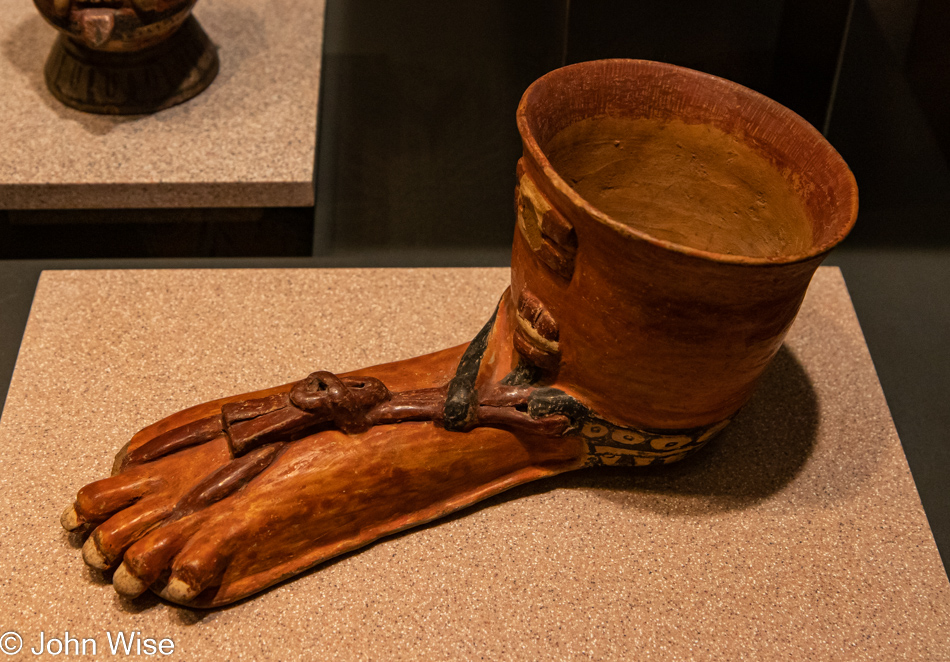
While maybe offering some insight into the Aztec style of sandals, I’m guessing there was more to this cup than being an example of footwear.
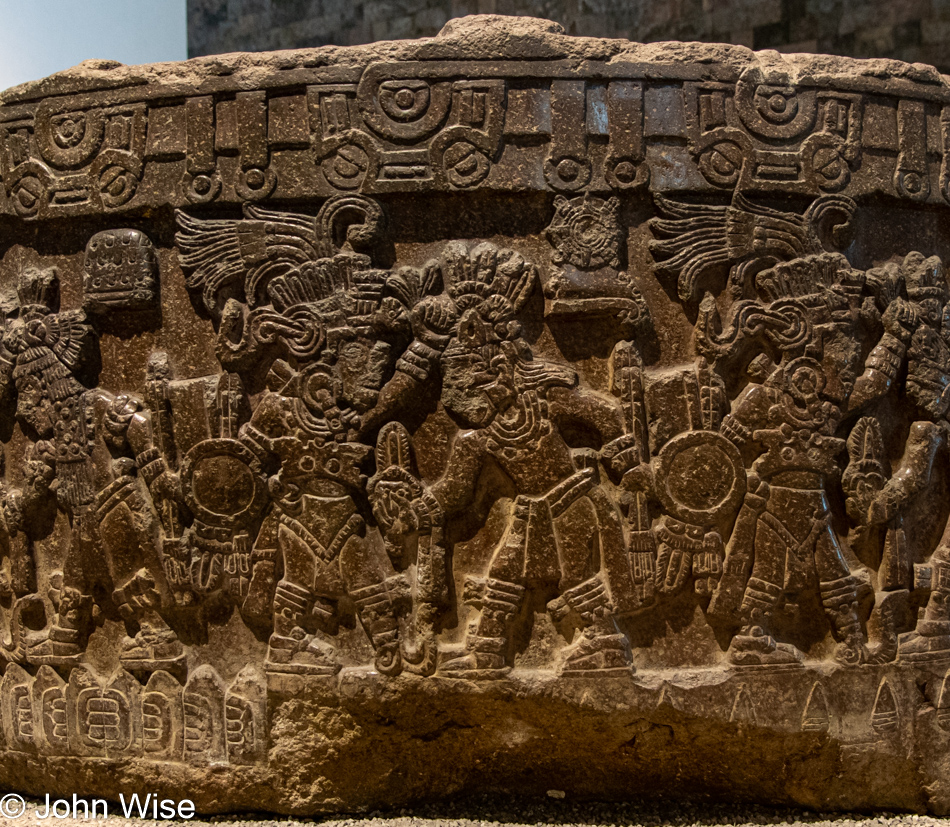
I’m looking above at the glyph featuring 5 Death Oon Diyi, and now I’m starting to see the shield and arrows.
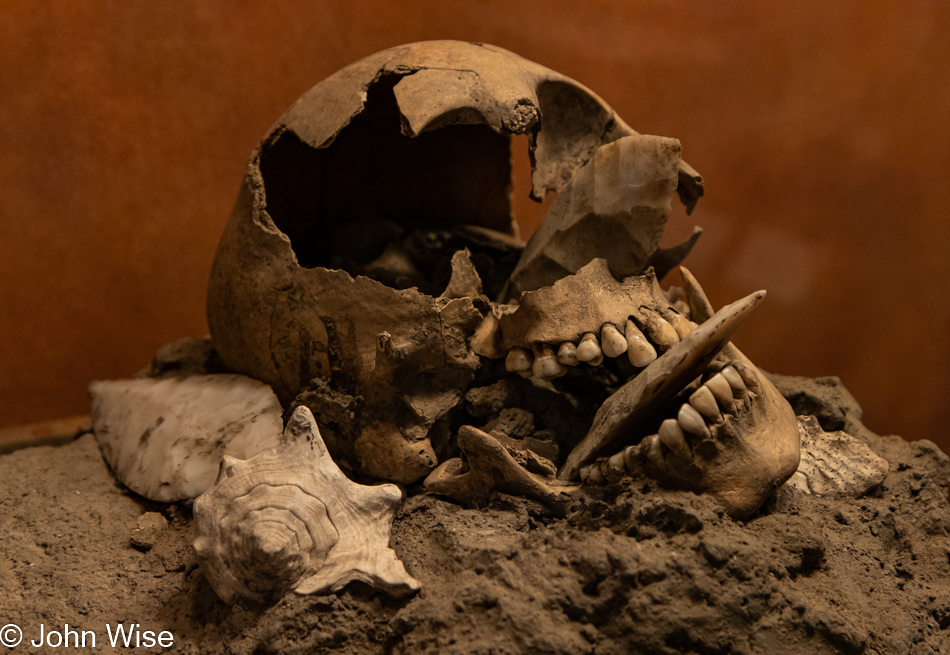
From the placard associated with this display, “Ritual Burial. In the archaeological excavations here at Temple Mayor, human skulls have been discovered with small sacrificial knives inside the mouth or in the hole of the nose. These recreate the metaphor of the breath and the words of death, which speaks using flint.”
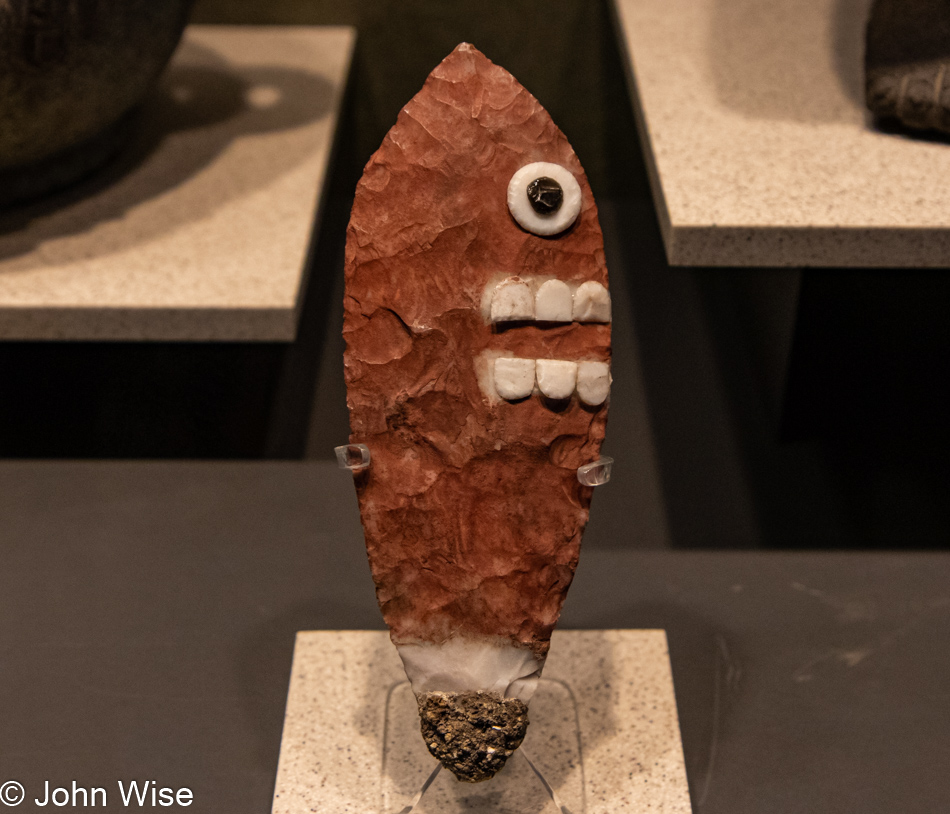
So, is the face of death speaking? The sign identifies this as Cuchillos con Rostros or Knives with Faces and explains, “The knives carved in flint with fantastic faces stand out; they symbolize the sacrificial instrument that has life, is sharp, and cuts like the jaws of the earth.”
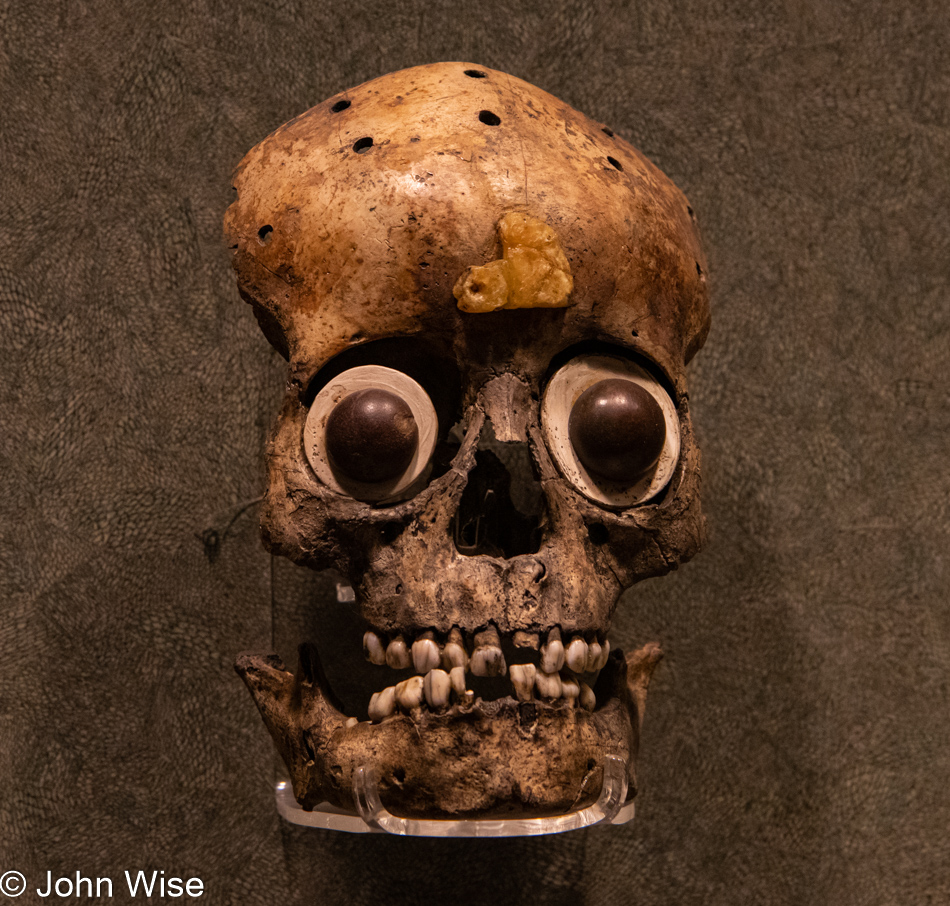
Someone else on the internet says this is a child’s skull; it’s probably fake, huh?
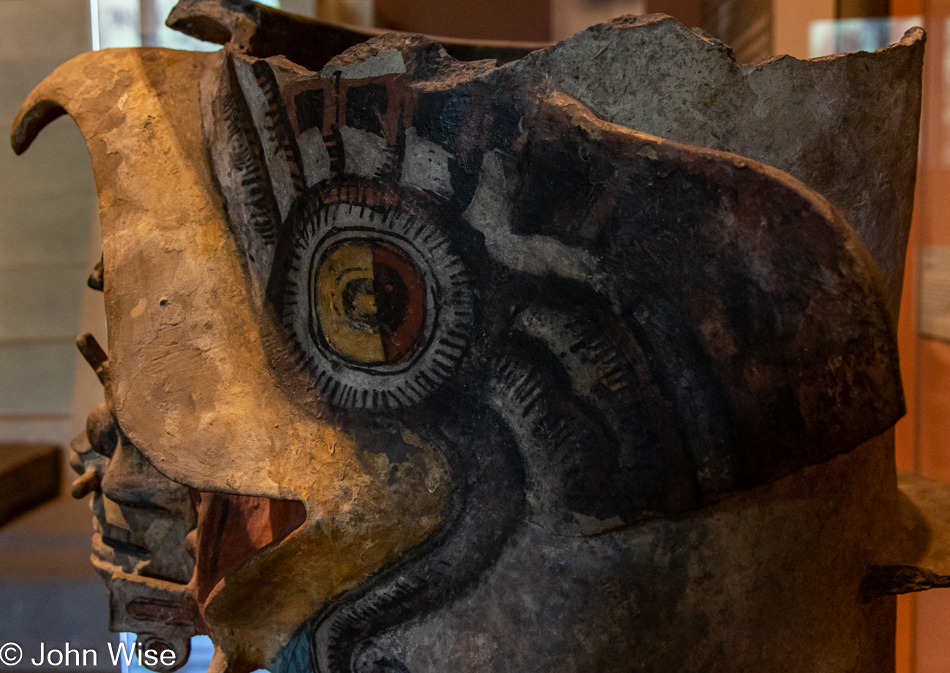
This image and the two that follow are all from the same item on display. The nearby caption calls this a Brasero del Guerrero or Warrior’s Brazier, and I suppose I can see that if I look at the broken top and imagine a bunch of coals sitting up in there on fire, providing light, heat, or both.
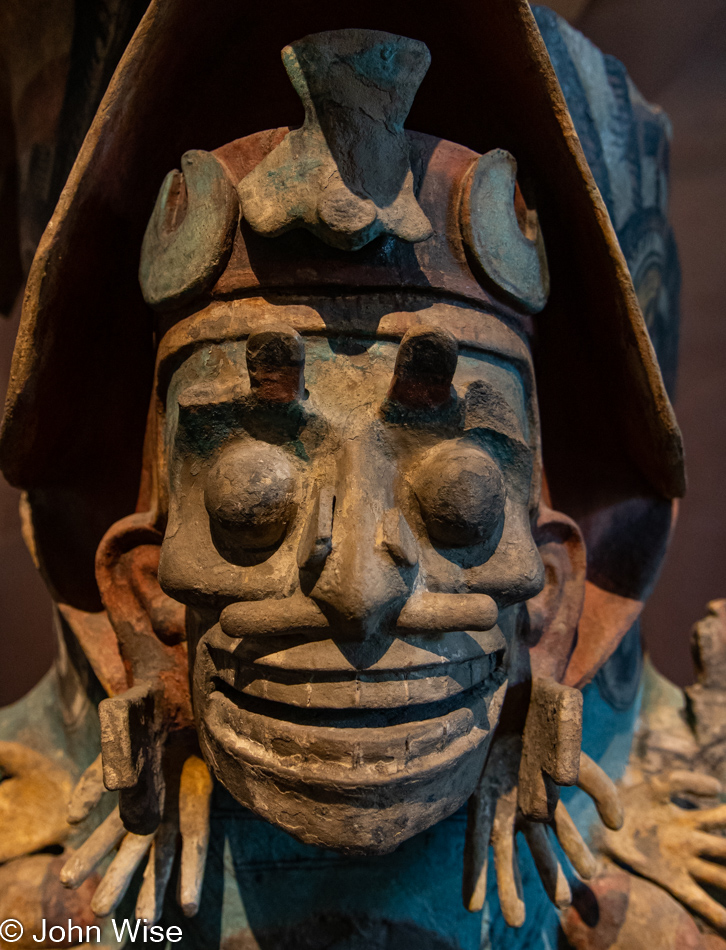
From the text next to this display, “The image modeled on this splendid brazier is that of a dead eagle warrior, as shown by the emaciated face and the adornments he wears, such as earrings in the shape of hands and the necklace of severed hands and hearts like those used by the deities of death.”
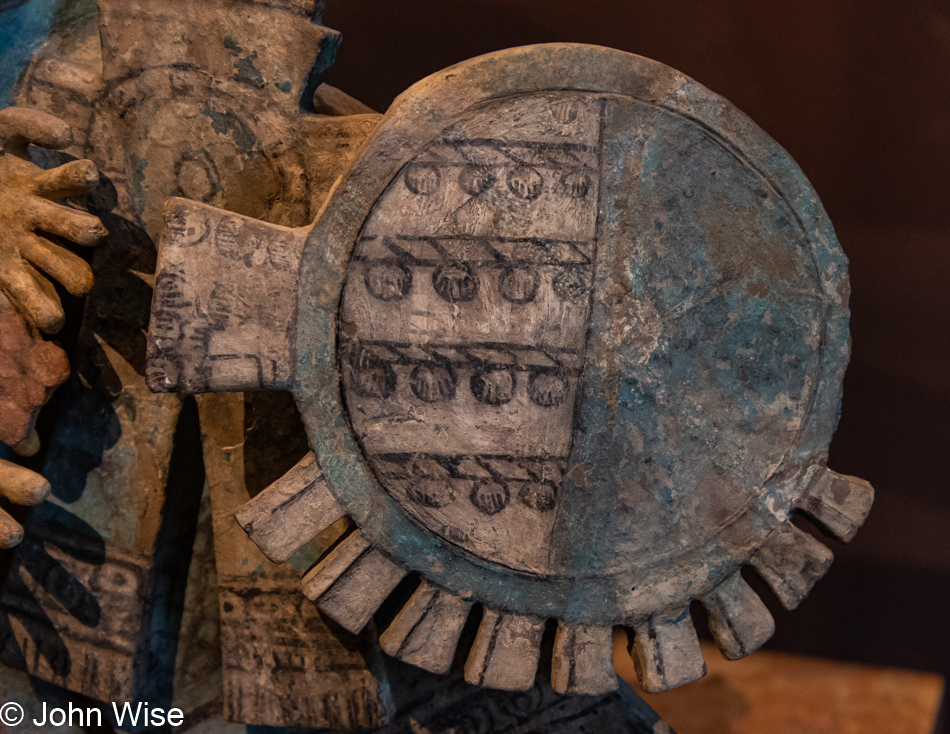
The text continued with, “The warriors who were sacrificed to the sun were called Cuâuhtêcatl or inhabitant of the country of the eagle.”
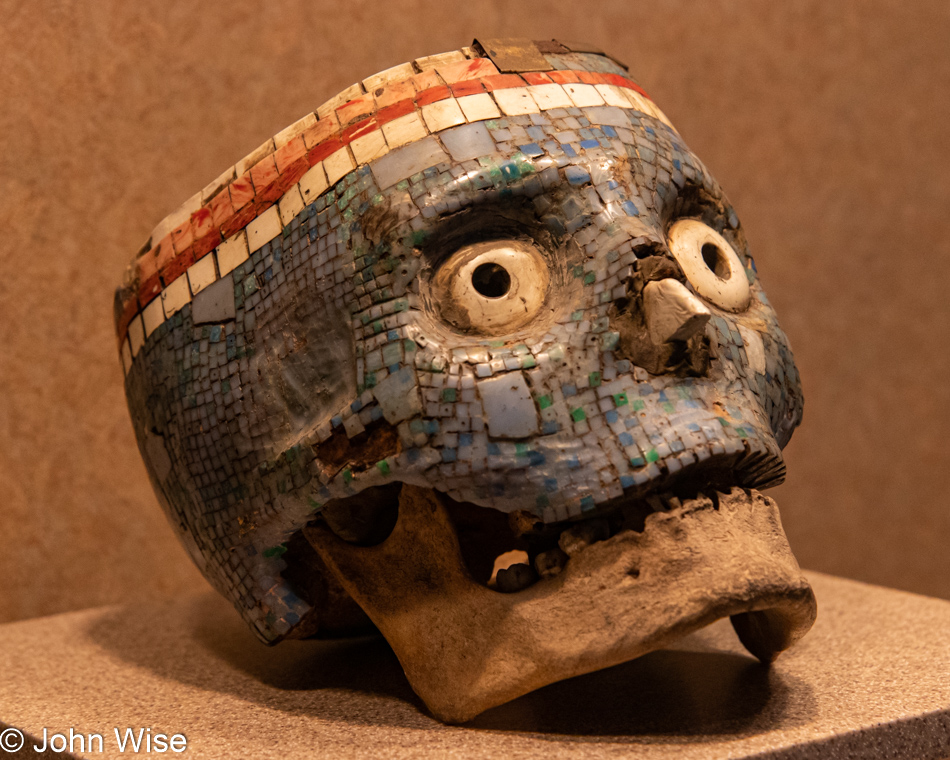
I’m starting to reconsider my idea of cremation as I realize that Caroline could combine the various fiber arts to weave, knit, embroider, and crochet me a face mask that would be able to be with her until the day she passes too.
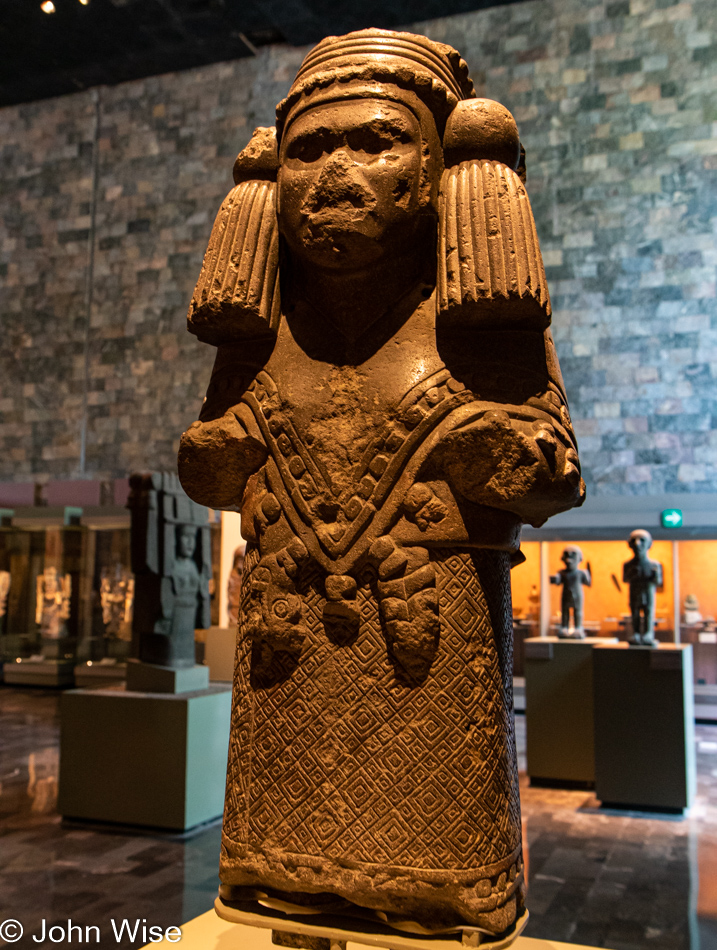
I wanted to associate this woman wearing a snake belt with an interpretation of Coatlicue (more about her below), but the differences are too great, so I’ll have to go with that I have no idea at all about anything regarding this sculpture, but the engraved patterns on her dress sure look a lot like some of the Mayan weaving motifs we’d see in the days following.
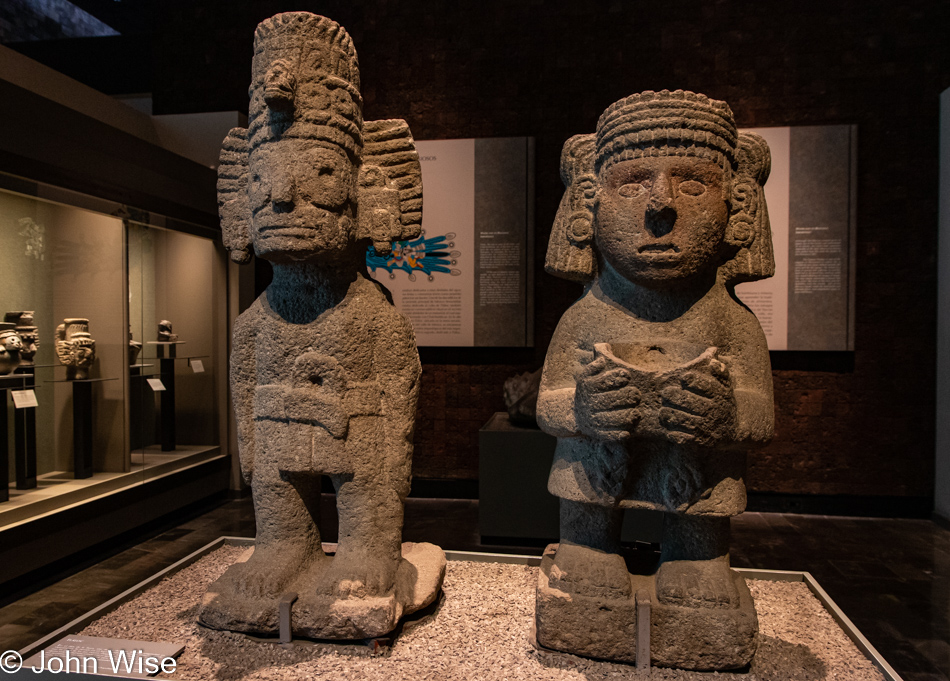
Yep, Tlāloc and his goddess wife Chalchiuhtlicue (Jade Skirt), who holds dominion over the streams, seas, rivers, lakes, and springs.
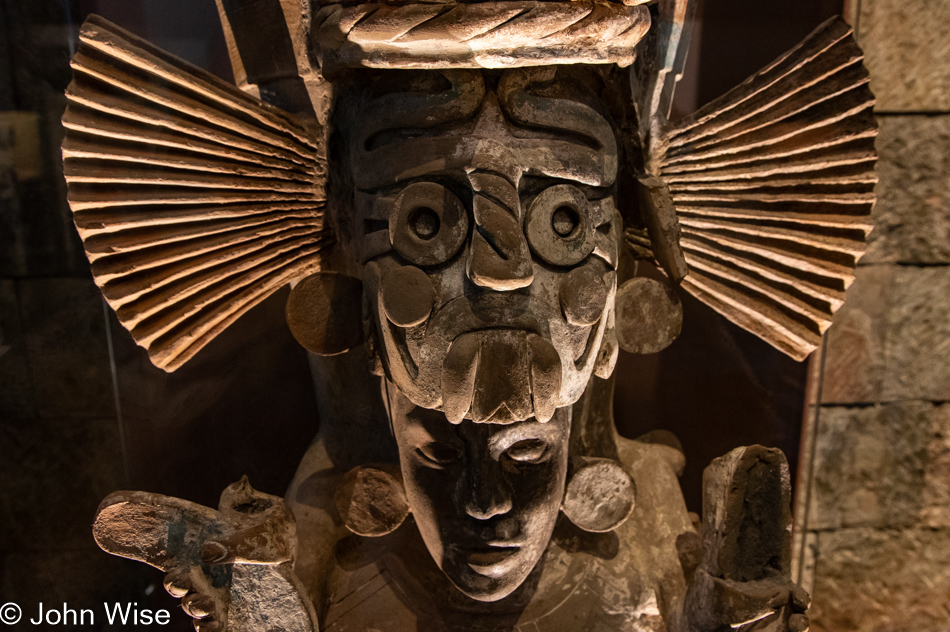
Is this a mask of Tlāloc sitting atop someone else’s head?
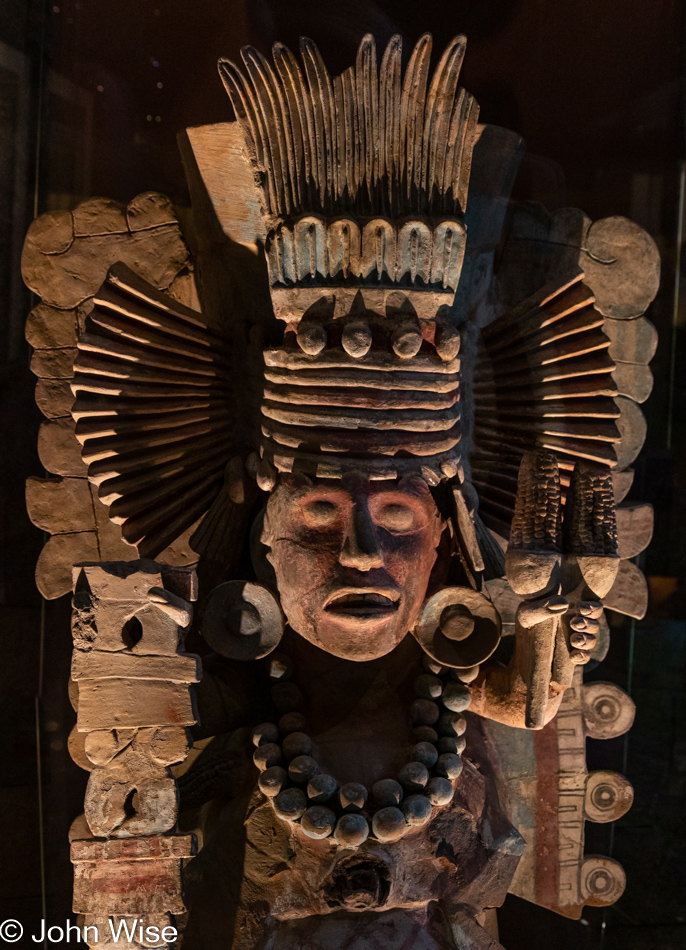
In an excavation southeast of Mexico City in Tlahuac, a number of giant painted ceramic braziers were found. They are decorated with representations of various deities of rain and plant fertility.
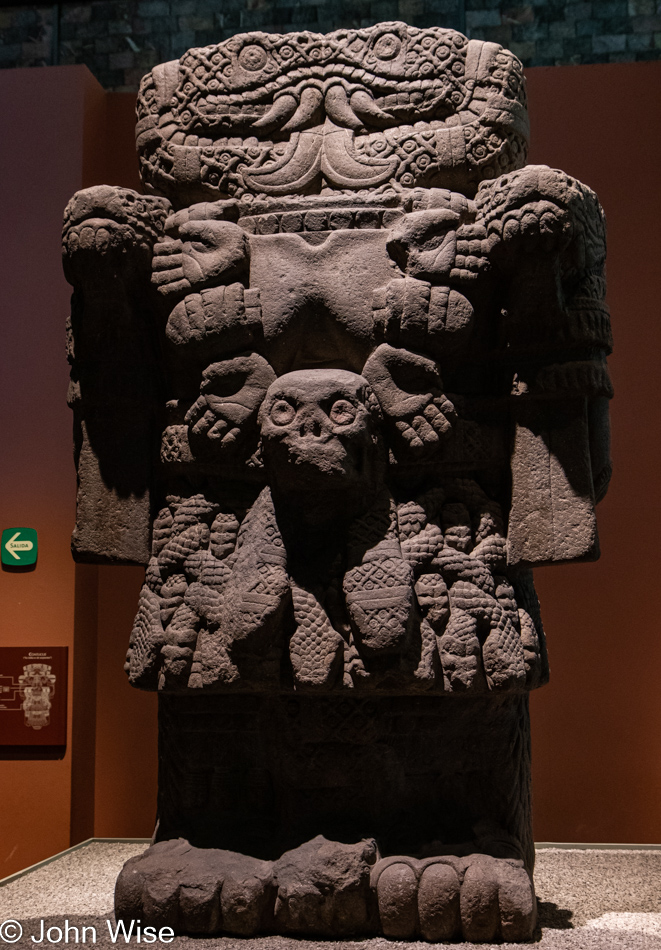
Coatlicue was known as the “Mother of the Gods.” Her name means “Skirt of Snakes.”
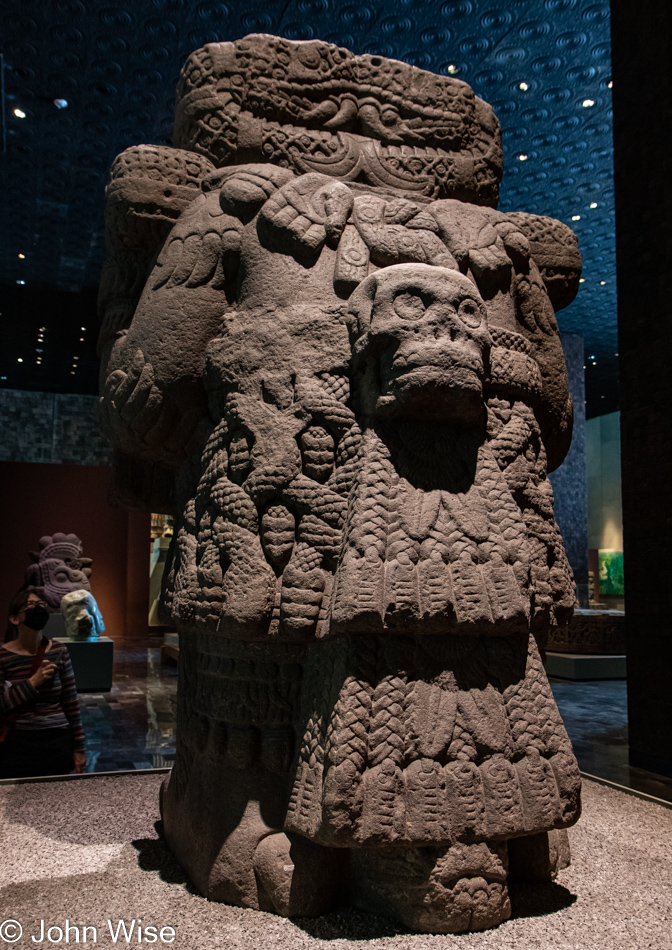
The backside of Coatlicue. From Encyclopedia Brittanica, I found the following:
Coatlicue (Nahuatl: “Serpent Skirt”) Aztec earth goddess, symbol of the earth as both creator and destroyer, mother of the gods and mortals. The dualism that she embodies is powerfully concretized in her image: her face is of two fanged serpents, and her skirt is of interwoven snakes (snakes symbolize fertility); her breasts are flabby (she nourished many); her necklace is of hands, hearts, and a skull (she feeds on corpses, as the earth consumes all that dies); and her fingers and toes are claws. Called also Teteoinnan (“Mother of the Gods”) and Toci (“Our Grandmother”), she is a single manifestation of the earth goddess, a multifaceted being who also appears as the fearsome goddess of childbirth, Cihuacóatl (“Snake Woman”; like Coatlicue, called Tonantzin [“Our Mother”]), and as Tlazoltéotl, the goddess of sexual impurity and wrongful behavior.
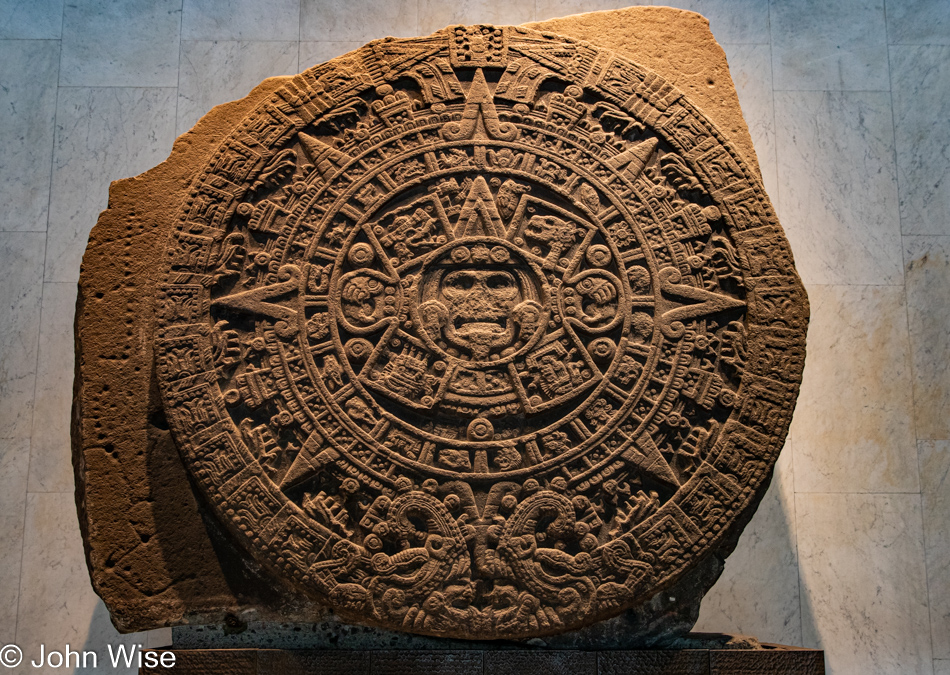
This Aztec Sun Stone was originally carved into a piece of rock and dragged a maximum of approximately 22 kilometers (roughly 14 miles) by thousands of people. In its current form, it weighs more than 54,000 pounds (over 24.5 metric tons). Contrary to some people thinking it is a Mayan calendar, it is an Aztec monument described on Wikipedia: “The monument is not a functioning calendar, but instead uses the calendrical glyphs to reference the cyclical concepts of time and its relationship to the cosmic conflicts within the Aztec ideology.” This is probably the most recognizable of all pre-Columbian art from the region.
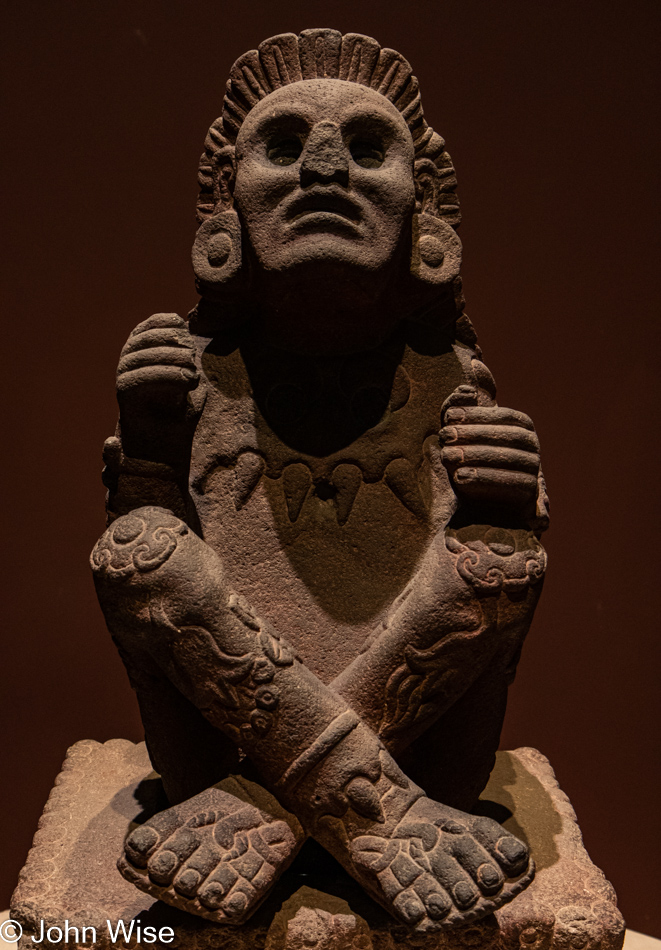
Xōchipilli, the Aztec god of art, games, beauty, dance, flowers, song, and the second most famous piece of history from Mexico. His name translates to Flower Prince. When I photographed this statue, I didn’t realize in the dark (and being in a hurry) that he sits upon a base that features magic mushrooms.
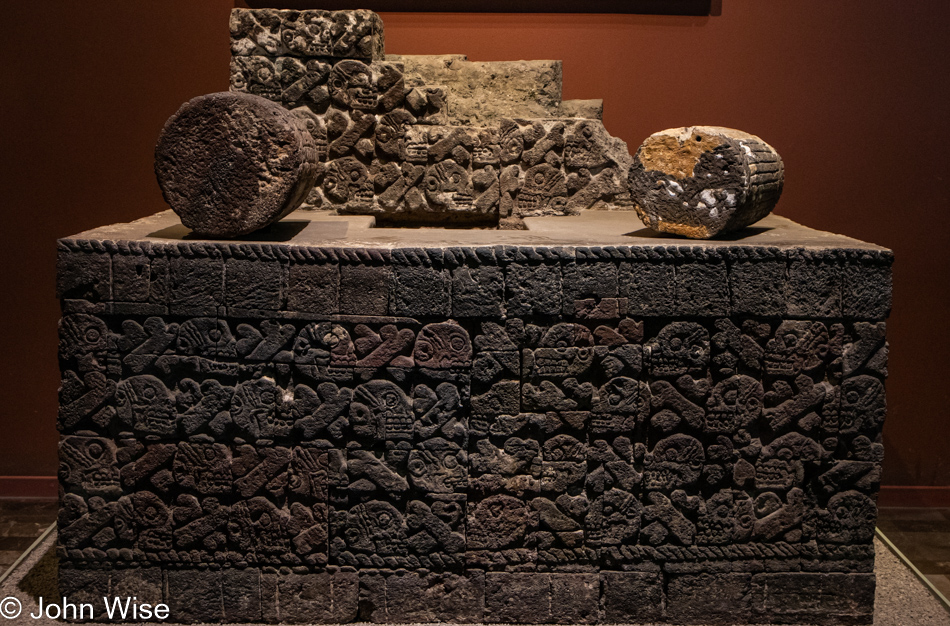
The caption above this is part of an illustration noting the Ceremony of New Fire. With a festival called Xiuhmolpillia signifying the end of a 52-year cycle, bundles of 52 sticks are burned, followed by all hearths being extinguished until a sacrifice is made. With fires reignited, orders went out calling for stone carvings to be made that resemble the sacred bundles (seen above left and right), and then those would be buried in a tomb such as this one that’s been decorated with skulls and crossed bones.
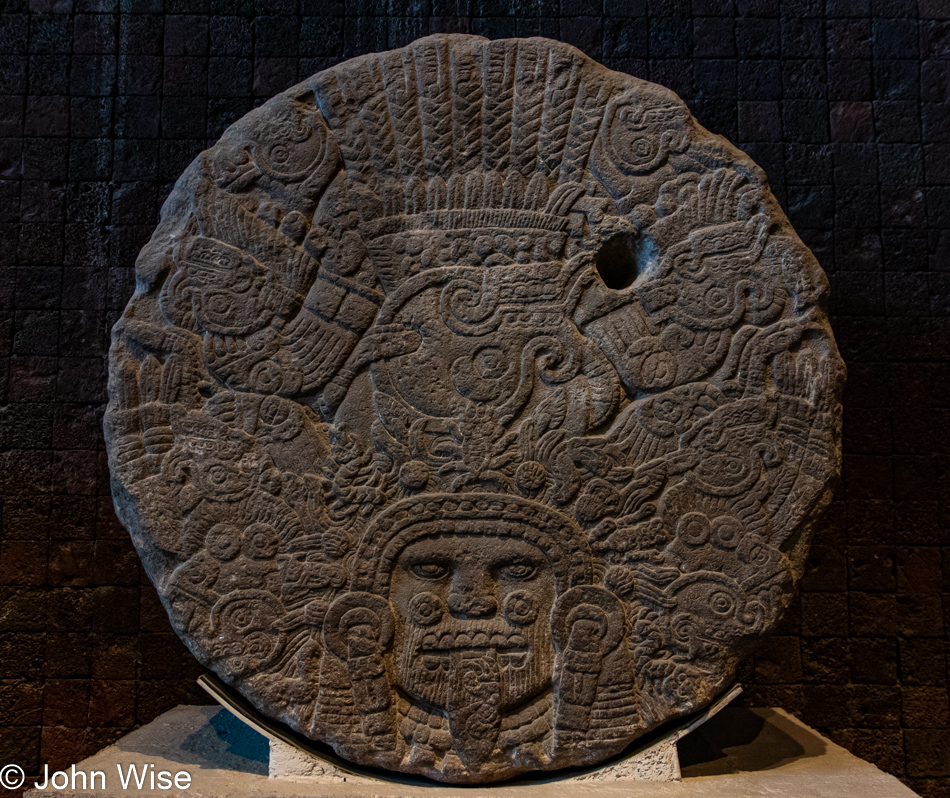
Two days ago at Templo Mayor, I photographed Tlaltecuhtli and referred to the carving as being of a goddess, but it turns out that the words in the Nahuatl language were genderless. So, there’s some ambiguity if Tlaltecuhtli, pictured here, is male or female or if that even matters in the realm of deities.
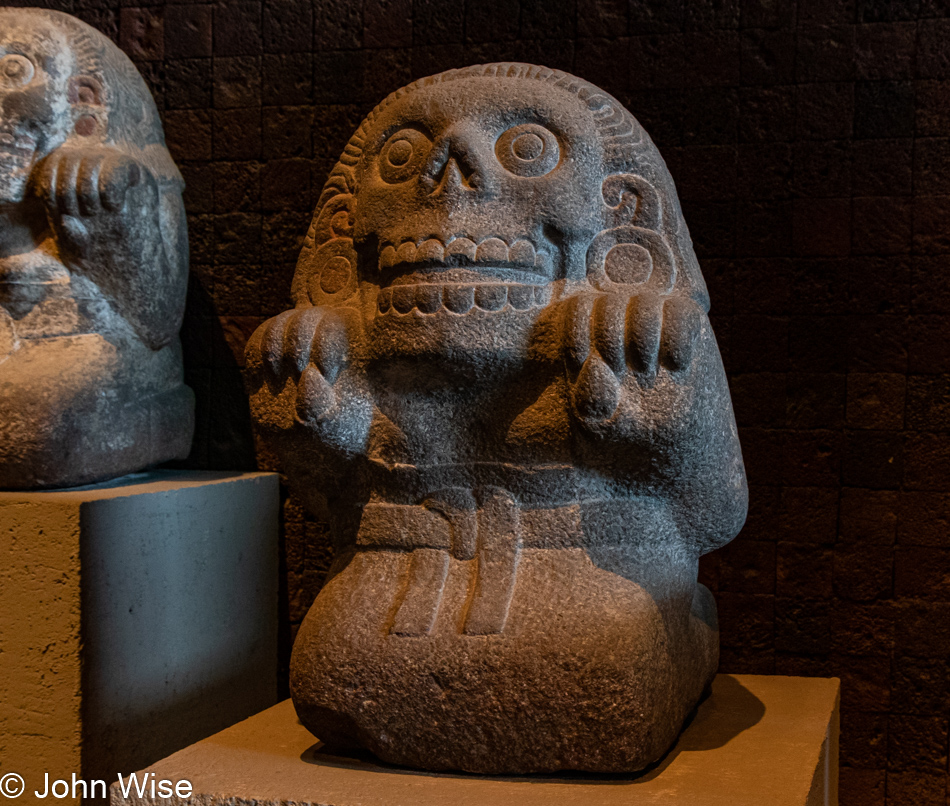
Goddess Cihuateotl is the demon figure taken on in the afterlife of a woman who died during childbirth.
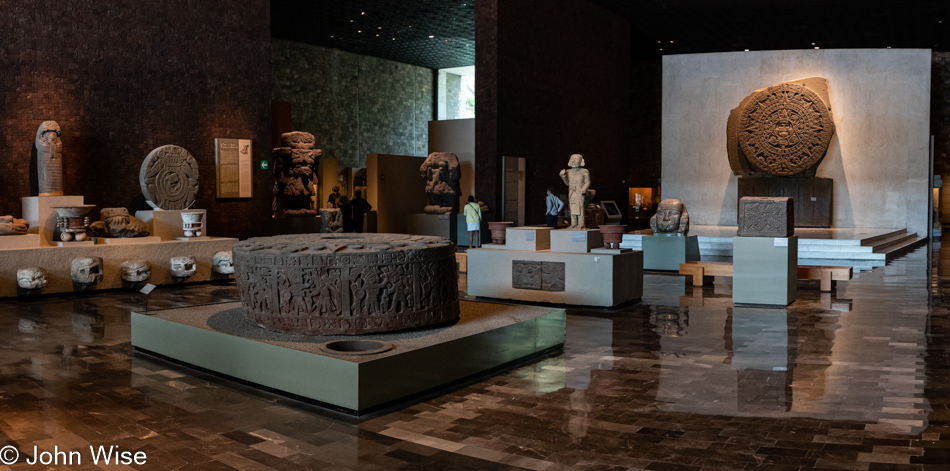
The room of a million impressions. That’s not its formal name just my observation.
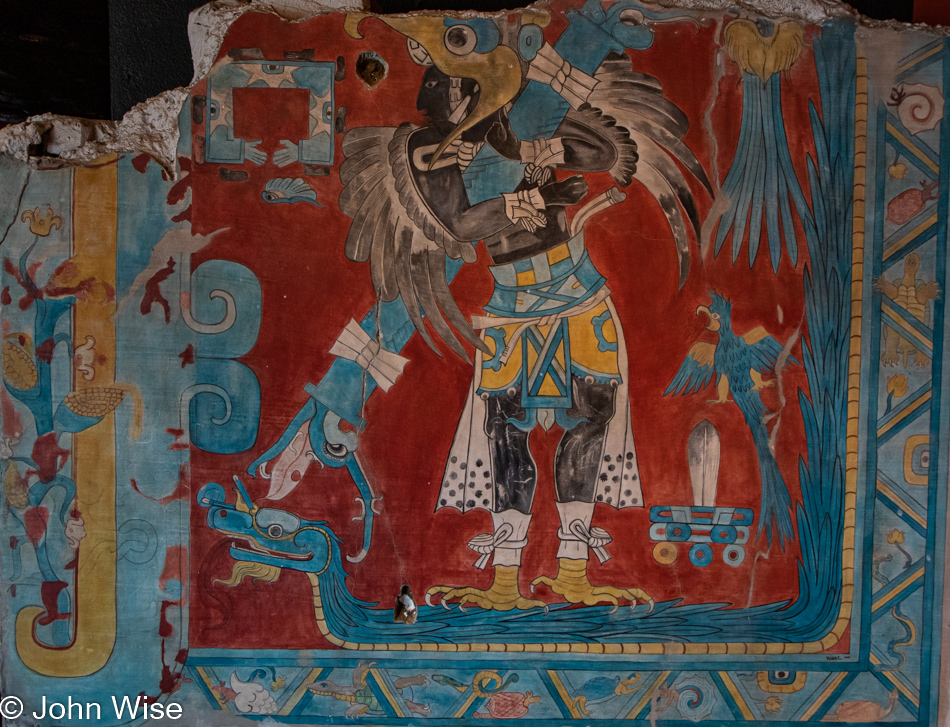
A recreation of a wall painting from Cacaxtla. This is the Bird Man related to Quetzalcoatl, the feathered serpent deity responsible for teaching the arts and agriculture.
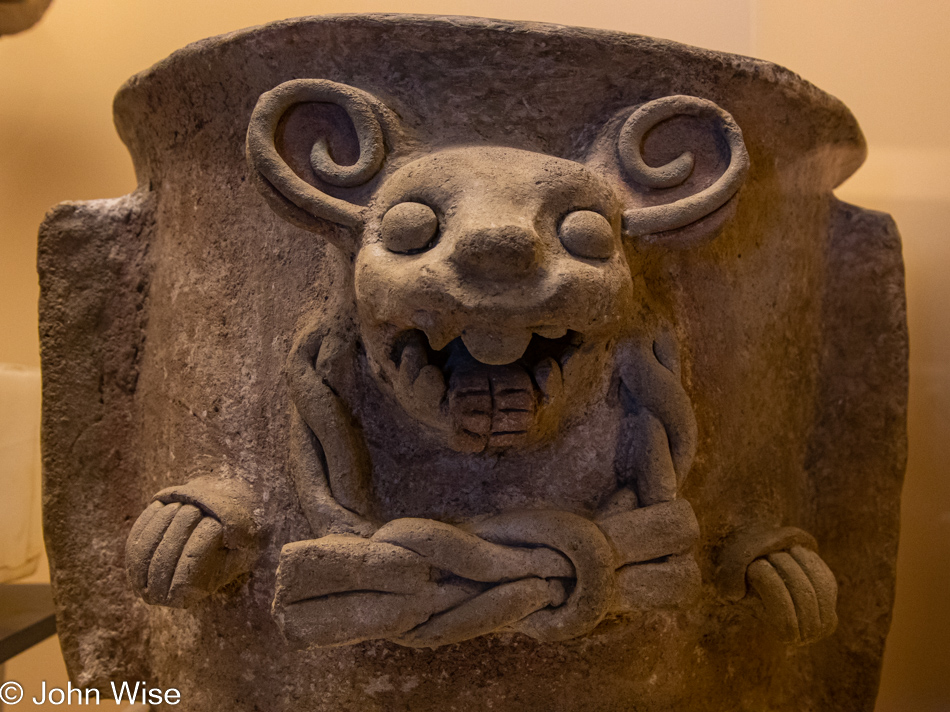
I thought I had the full story on this bat vessel when I photographed the sign near it, wrong. The sign, in Spanish only, spoke of objects made of alabaster.
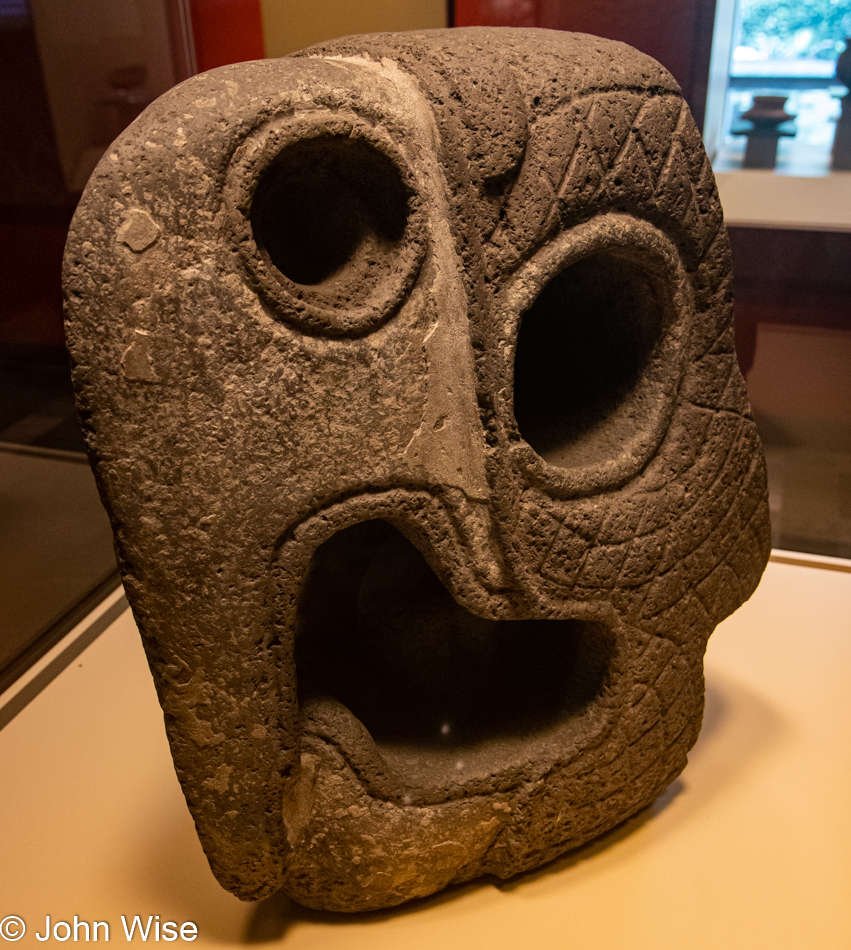
Does this look like a macaw to you? Does it look like it’s 1,500 years old? For me, this could be the Buste de femme assise sur une chaise by Pablo Picasso that he created in 1939. Funny how Picasso was so celebrated as a modern artist while when I went to school throughout the 1970s, we were still being taught about the primitive barbarism of cultures outside our dominant caucasian advanced civilization that turned the people of the earth in the right direction. From what I’m seeing on this trip to Mexico, the pre-Columbian societies of Mesoamerica were creating works no less impressive than those created by celebrated Europeans 1,500 years after Mayans and Aztecs had made the scene, and they did without wheels, iron tools, and large beasts of burden.
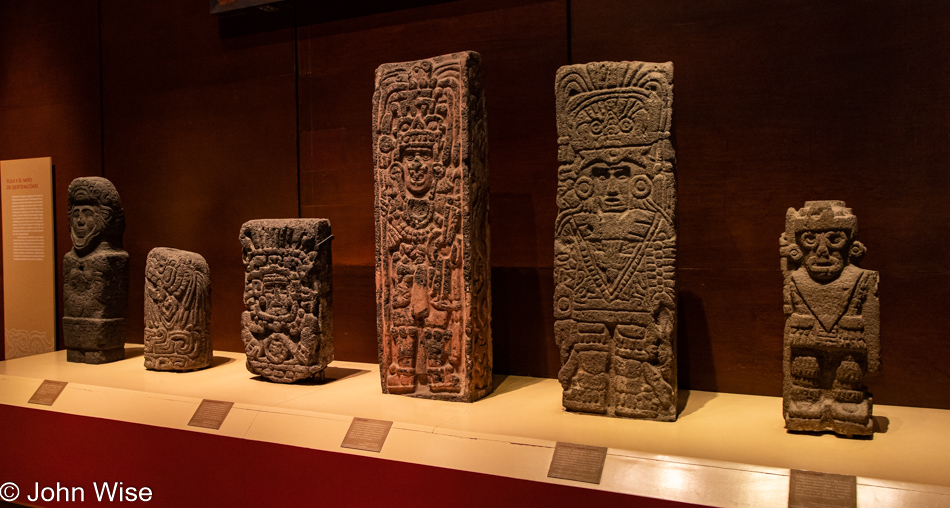
I have about as much connection to a statue of Caesar or Michelangelo’s David as I do to Quetzalcoatl or the 2,500-year-old Seated Buddha in Yungang, China, and so to hold these European works in renown as being any more important to my culture than I would of works outside of Europe seems to me like a travesty. What all these things have in common and thus make them equally important to my sense of place on earth, is that they were all made from people out of history. Humans from around the world have been toiling to express themselves and leave impressions on others for an untold number of years and as I’m a human, I want to feel related to all of our creations. This is not cultural appropriation; it is gratitude for the diversity of expression and creativity that is able to influence all of us from today and well into the future.
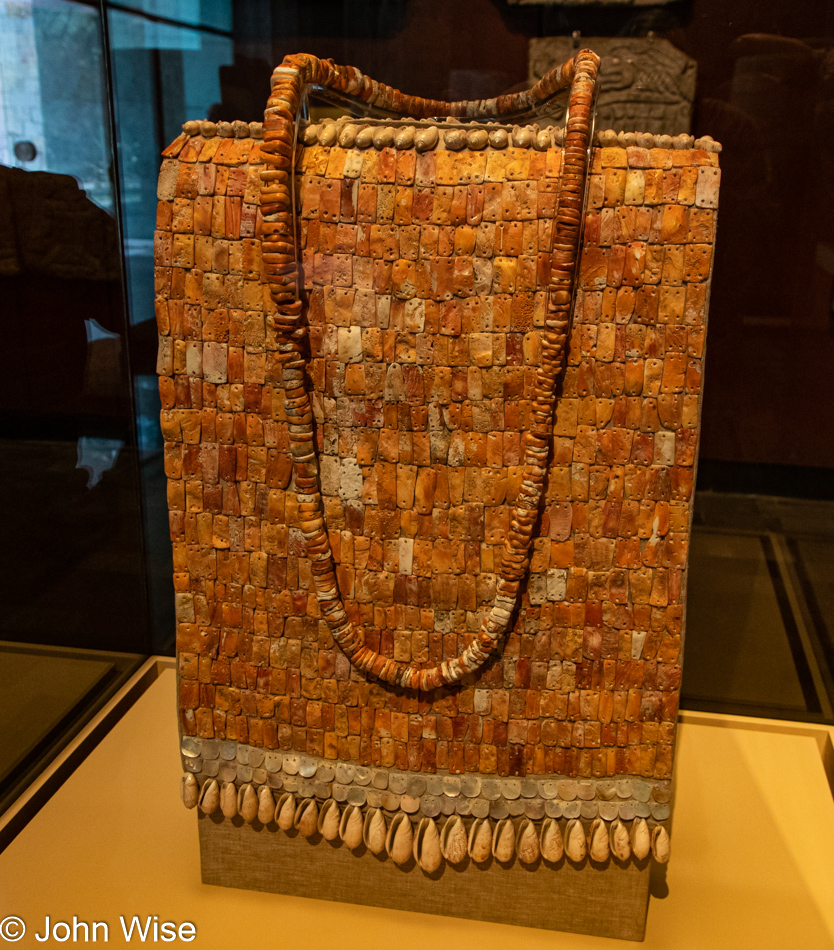
The Breastplate of Tula is a shell piece of armor found in the burned palace of Tula, Hidalgo, Mexico. It was protected inside an adobe box.
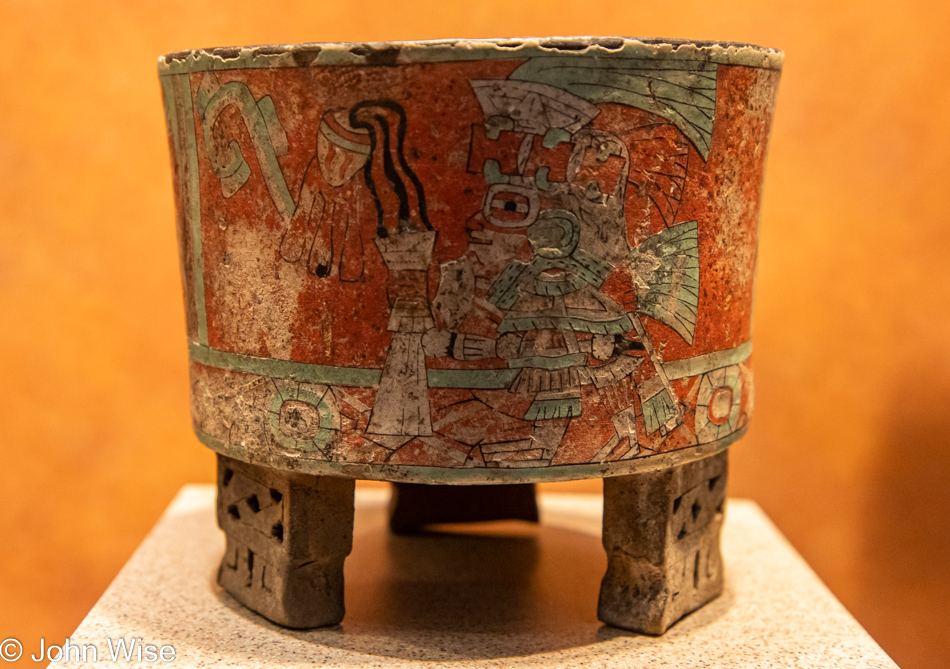
Wow, we saw this exact vessel three years ago in Phoenix, Arizona, as part of a special exhibit titled Teotihuacan: City of Water, City of Fire.
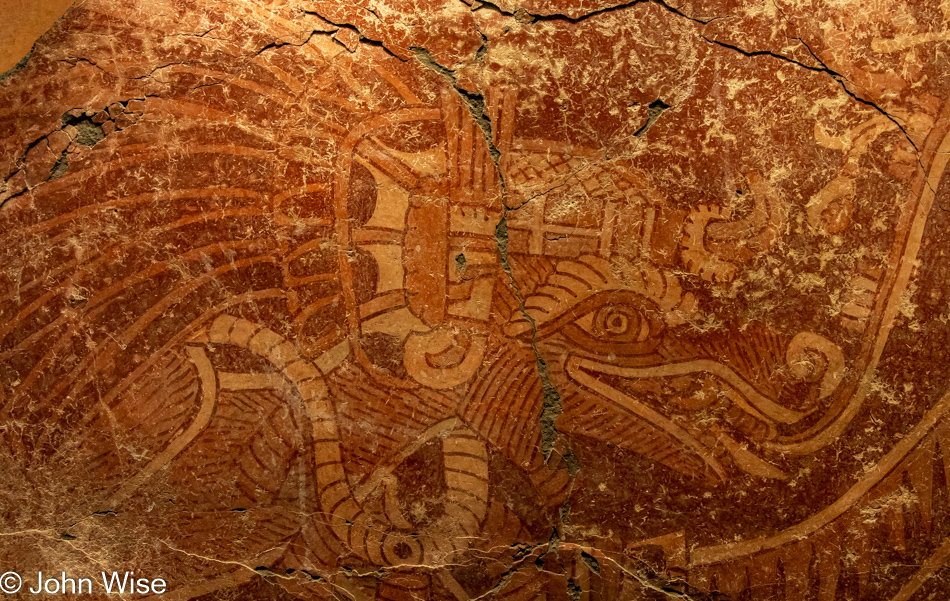
If I slow down and think about why this kind of imagery and history is downplayed in the U.S., I’d have to assume that it is due to fear of self-awareness. Psychedelic experience, which I believe we are looking into with this image and many others seen in Mayan and Aztec art, has been too difficult a bitter pill for people to swallow. Ignorance creates dependencies that those who would deny it, don’t realize that it applies to them, are in need of the nanny state they express such disdain for. But at the end of the day, they want everyone around them to conform to their norm of gun ownership, worship of a Christian god, access to cheap alcohol and gasoline, a strong military, and a president who empowers them to do anything they want while protecting meaningless jobs and supporting those with negligible skills as long they look exactly like the person they envision as being part of the American way. Personally, I’m more interested in flying serpents with loaves of bread in their heads and tongues lolling out of their forehead/third eye.
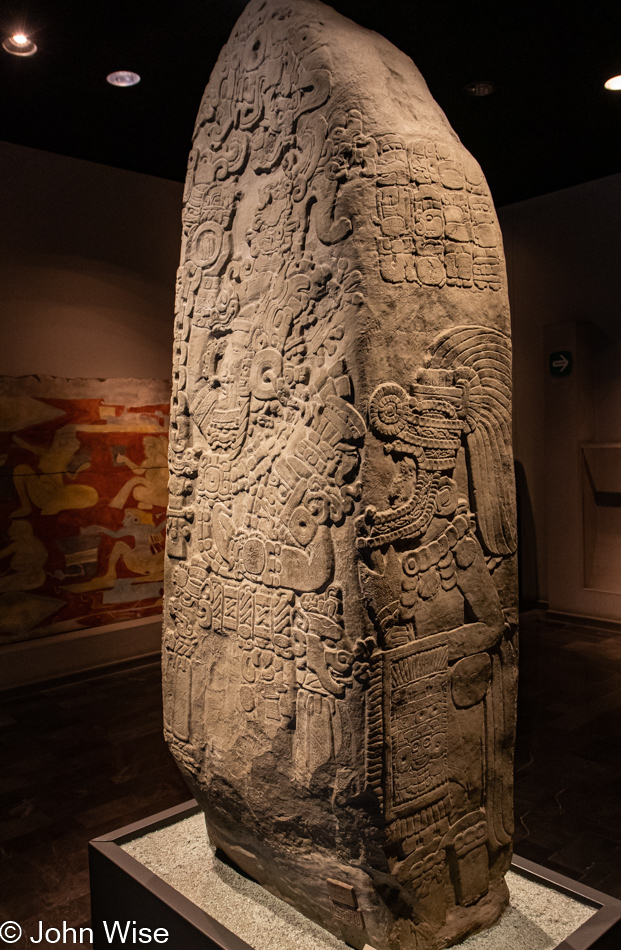
Stela 31 from Tikal in Guatemala tells the story of the “Lord of the West,” also known as Siyah K’ak’. We thought the guy on the side was an astronaut, hence the angle of my framing.
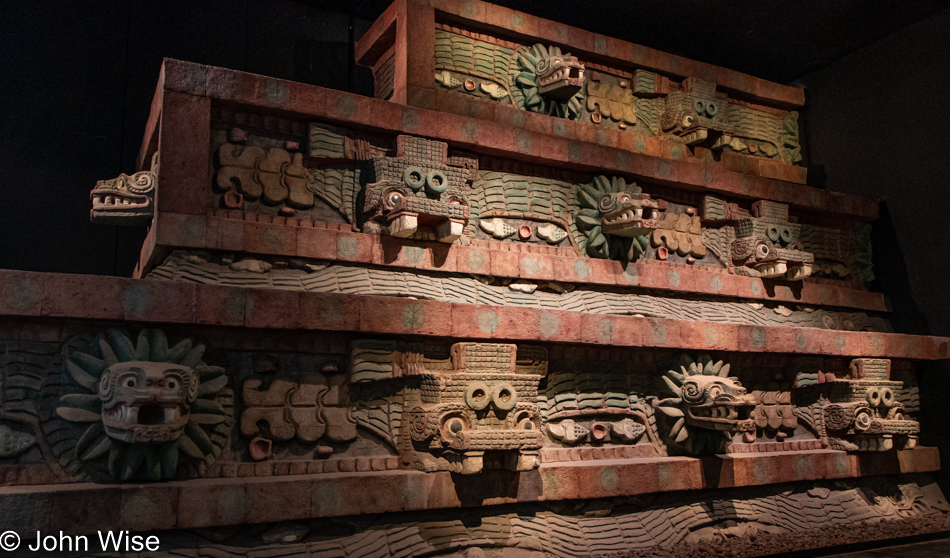
A recreation of the temple deities we just saw yesterday at Teotihuacán’s Temple of the Feathered Serpent on the south end of the Avenue of the Dead.
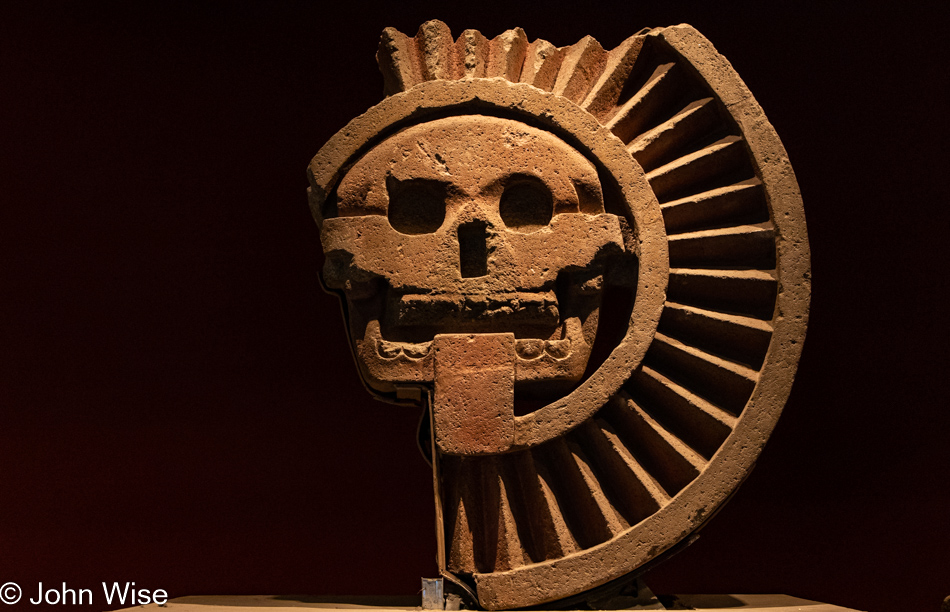
This sculpture is known as the Disc of the Death from Teotihuacan and is said to be related to Mitlantecuhtli – The God of Death, seen at Templo Mayor a couple of days ago; he’s the guy with his guts hanging out.
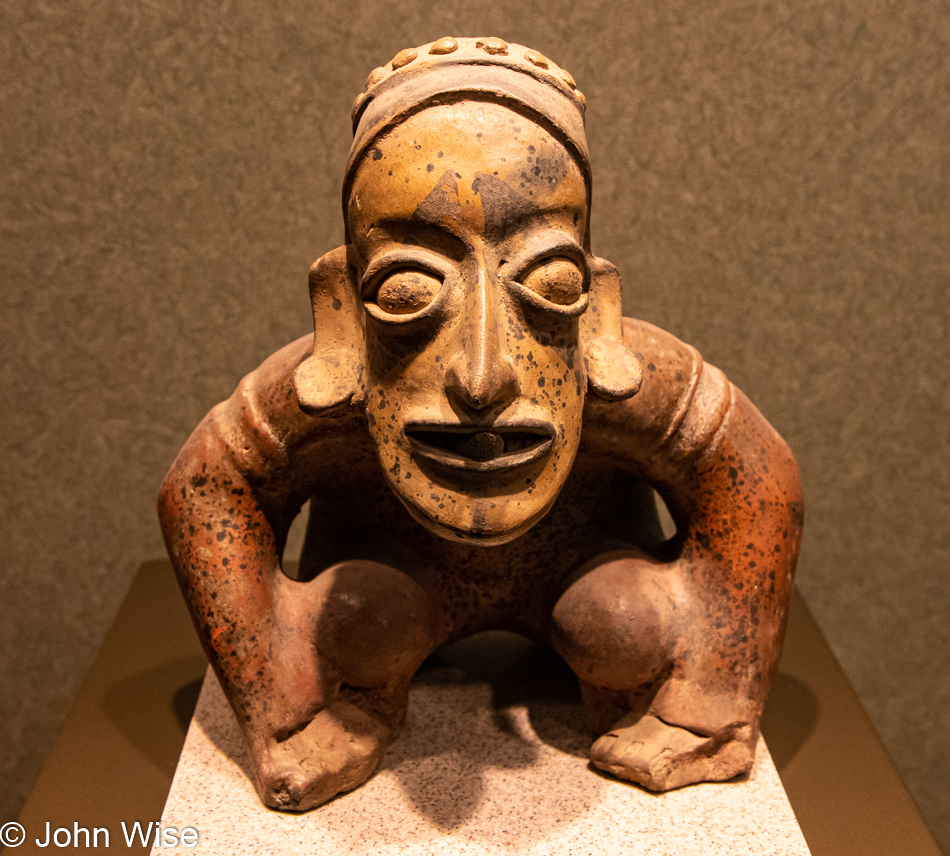
It appears that only Janice and George Mucalov of Sand In My Suitcase fame and I obviously, have ever photographed this statue; sadly, they offered nothing about the provenance of this little guy. So, I’m just going to swing out on a branch and hope my description doesn’t show any disrespect because I mean none. Even deities need to move their bowels, and this guy shows the preferred stance for eliminating waste; if only he had some hornlike object coming out of his head to place a roll of toilet paper, I’d have one of these at home. Hey, should anyone take offense at my feeble attempt at humor, you should try writing about nearly 70 images you thought were a good idea to share.
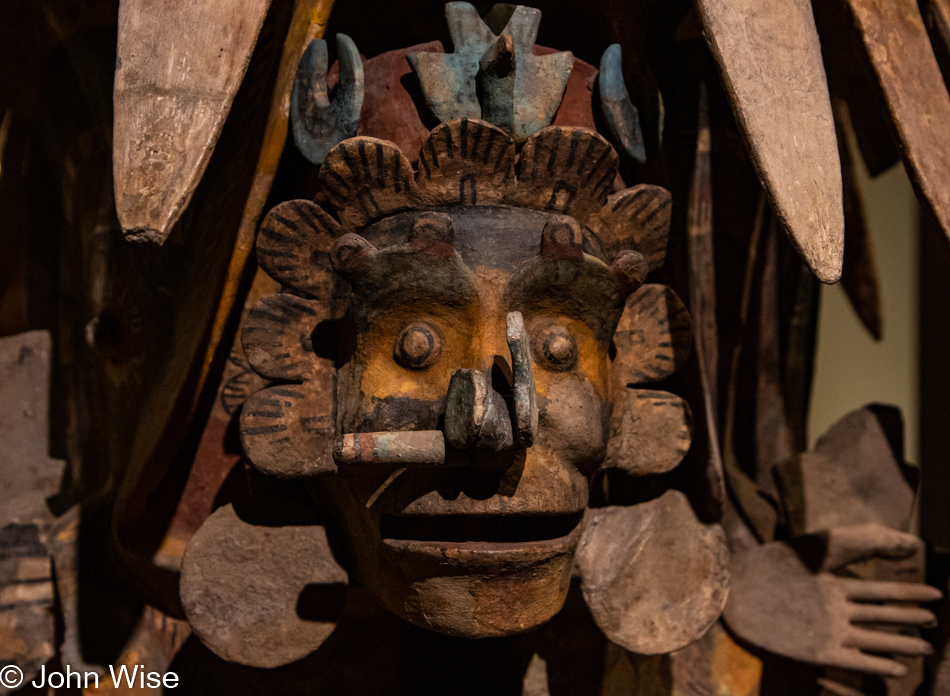
You must be thinking by now, how many braziers can you share in one post? Okay, this is the last one, but it’s of the God Tezcatlipoca, so I’m sure you now understand. As the supreme god, creator of heaven and earth, omnipresent and omnipotent, god of the night sky and memory, the one who gave goods and then took them away, he was in opposition to kindly Quetzalcoatl.
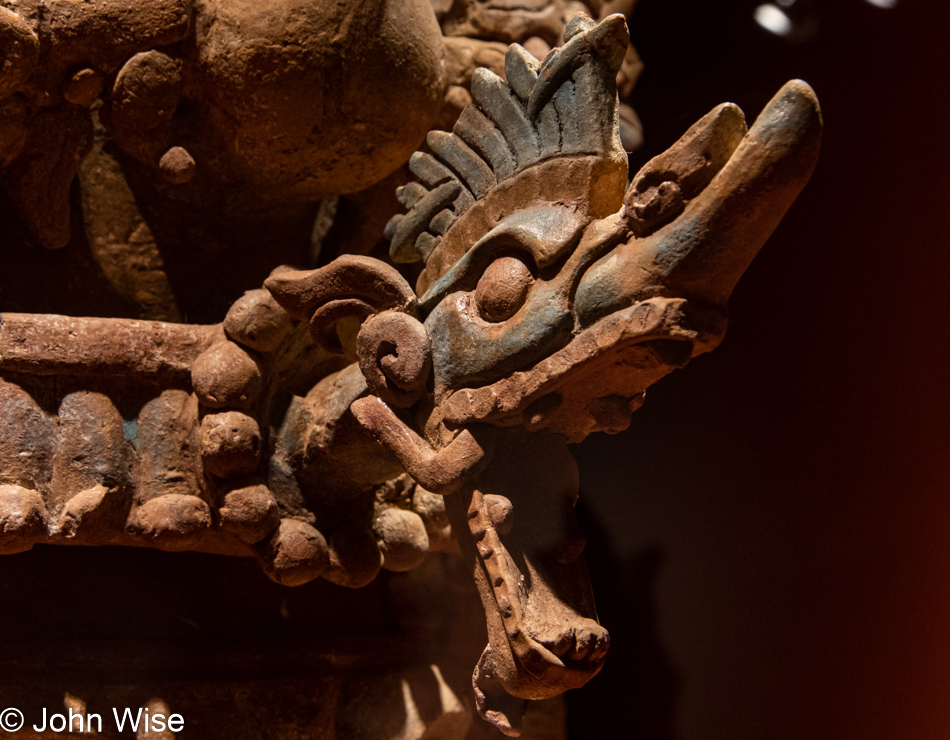
I’ve got nothing about this; not gonna even try. I think I was in a frenzy by this time, just taking random photos of anything that made me giggle or think it could be important.
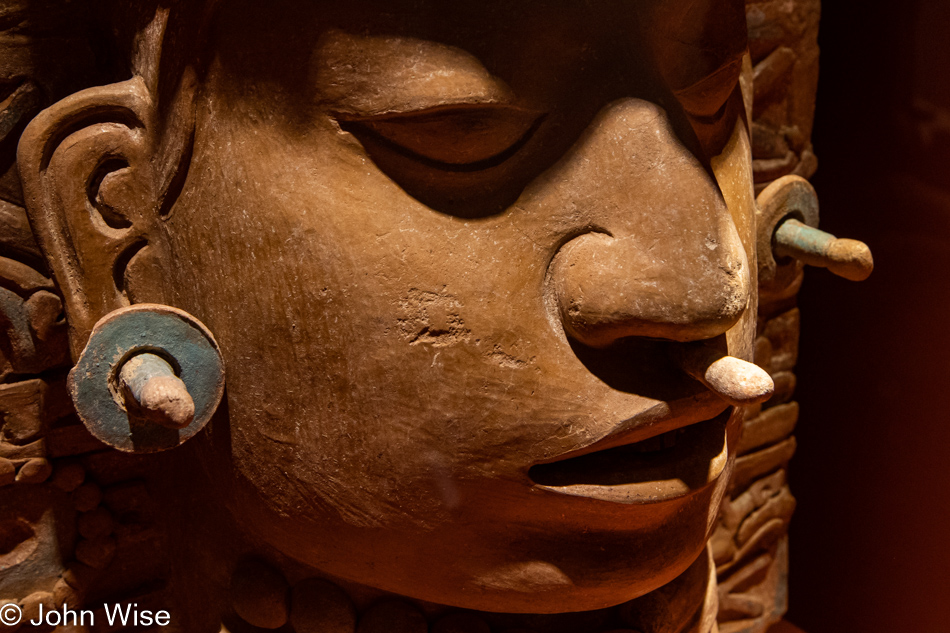
Our time in Mexico City is coming to an abrupt end, with us needing to make haste for the airport. In about 4 hours, Ciudad de México could move to gridlock as it is International Women’s Day, and there will be a mass demonstration that could be very unpredictable, so we would rather ensure we catch our flight this afternoon and leave the museum, grabbing our bags from the hotel, and getting into a taxi for the 9-mile ride that can take an hour to cover.
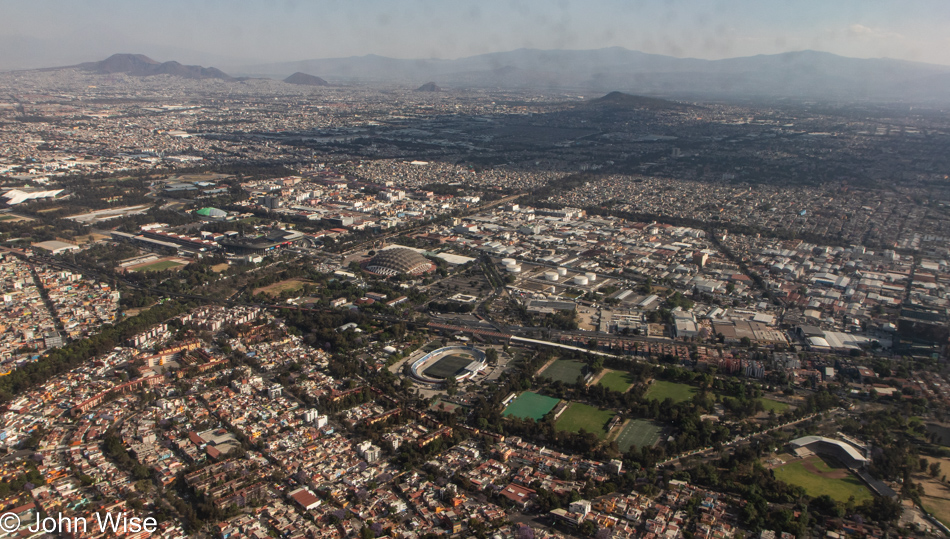
Everything went smoothly, and before we knew it, we were in the air scouring the landscape with the hope we might fly over Teotihuacán for one more look at the pyramids, but there was no sign of them.
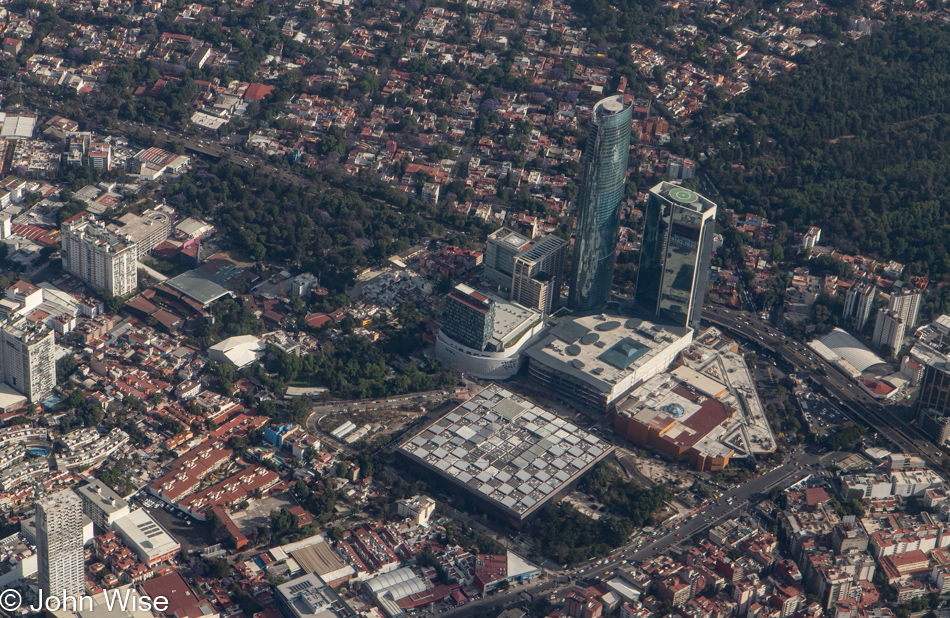
When we are down there doing the things we do, whatever they might be, we are in our personal universe that extends to the edges of our perception, but up on the hilltop, in a highrise, or aloft in the air, we are offered the view of how much more to our limited purview there is to reality. No wonder when people enter space and look back at the Earth, they are brought to tears as they gather hints of the magnitude of potential spread around a globe that’s impossible to comprehend when their own sight and senses are so myopic.
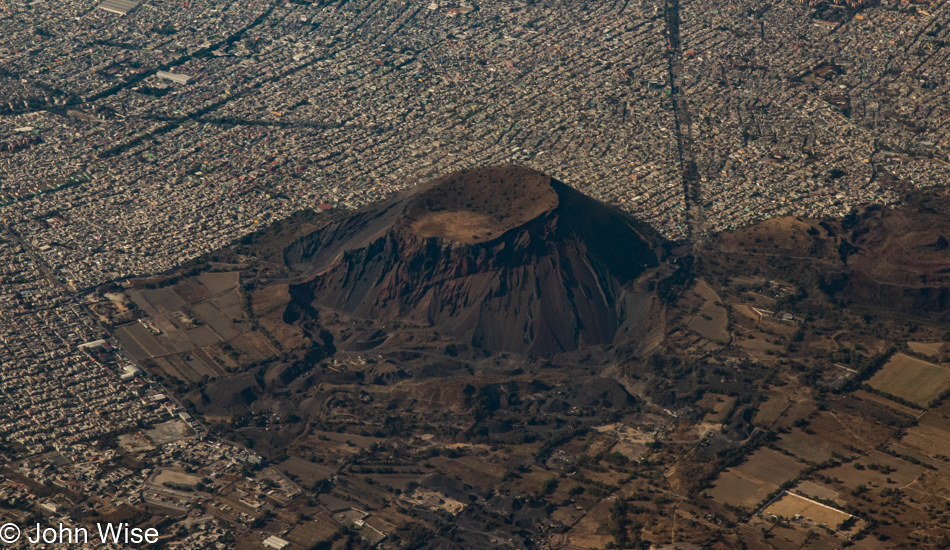
At the edge of Mexico City, we flew south with about 500 miles of land to cover before our next destination.
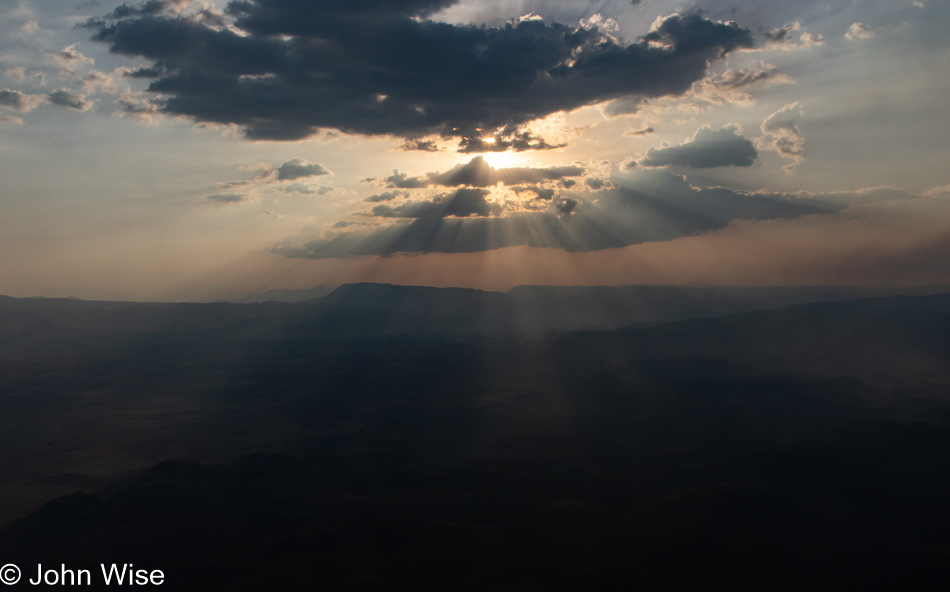
Approaching Tuxtla, Mexico, before catching a taxi to San Cristóbal de las Casas.
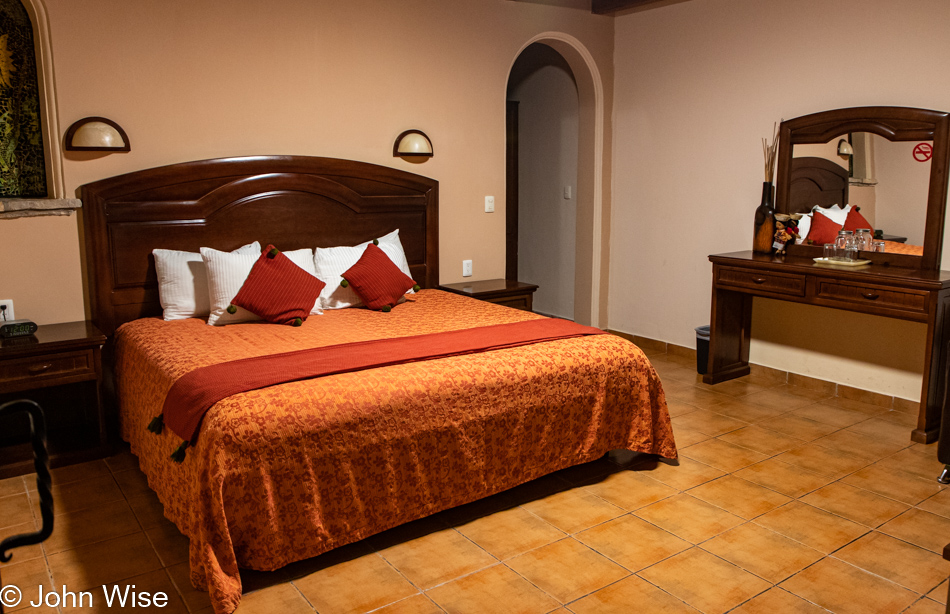
This is our beautiful room at Hotel Parador Margarita on Calle Dr. José Felipe Flores and a welcome sanctuary of safety after the daredevil mountain driving we just survived for over an hour. We’ve not been here but a few minutes but I’m already dreading that we’ll have to retrace our steps with some maniacal taxi driver back the other way at the end of this trip.
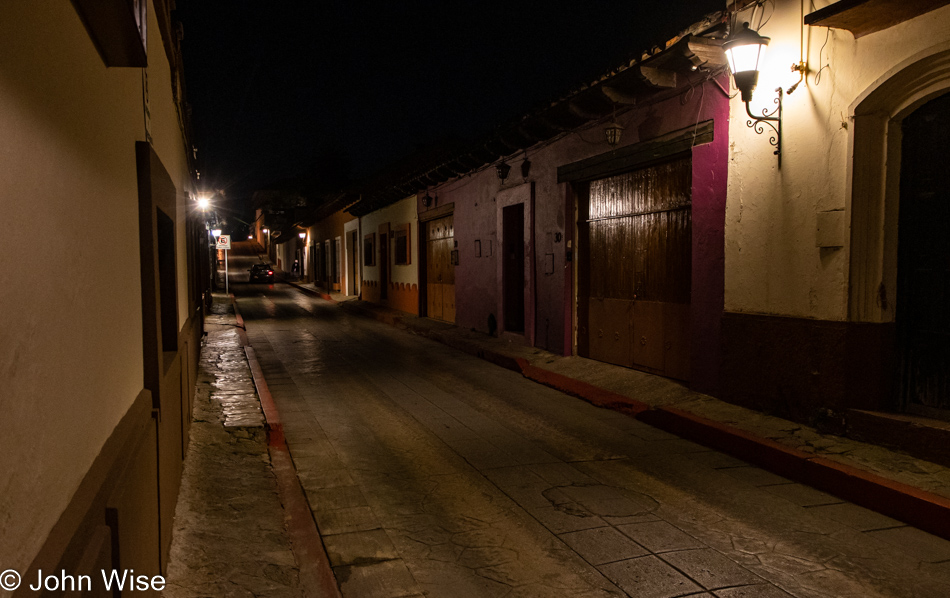
John’s hungry, which means we’ll walk by a couple of dozen restaurants that will all be dismissed as not being good enough or that something better might be just around the corner. This could go on for a solid hour if it weren’t for Caroline encouraging me to “Just pick something; I don’t care what we eat.” Should I have done some research prior to arriving? Maybe, but I wanted our visit to this unknown to us city to be an absolute surprise, and that is certainly happening. After circling a small part of the historic city center while trying to leave some mental breadcrumbs of where we were going and how to get back, we stopped at El Tacoleto, which, in fact, was on our way back to our hotel. We’d passed this corner restaurant before, but I wanted the real taste of Chiapas and tacos didn’t fit that bill until they did.
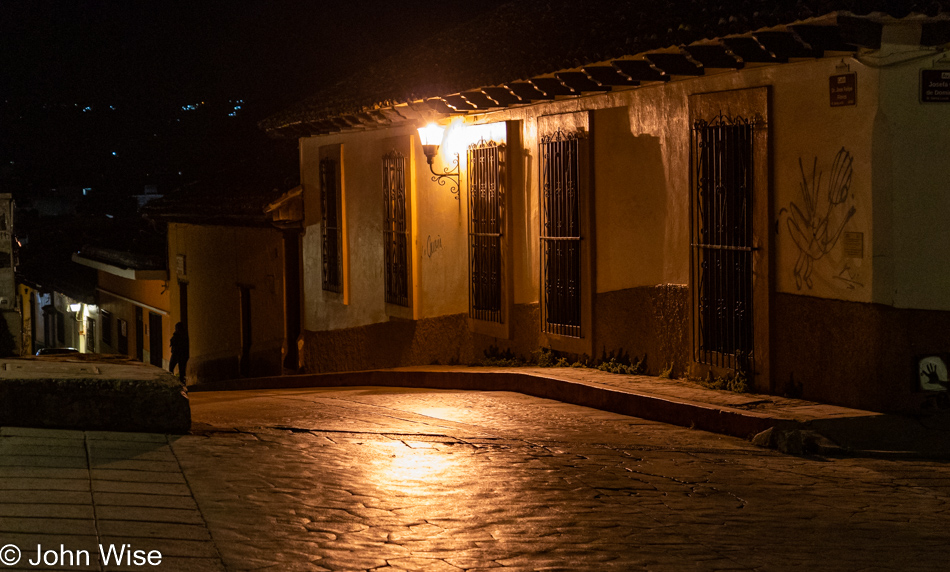
With dinner out of the way, it was time to admire the narrow sidewalks and the well-worn, shiny stone streets and continue trying to absorb enough to begin gaining some familiarity with where we are here in southern Mexico.
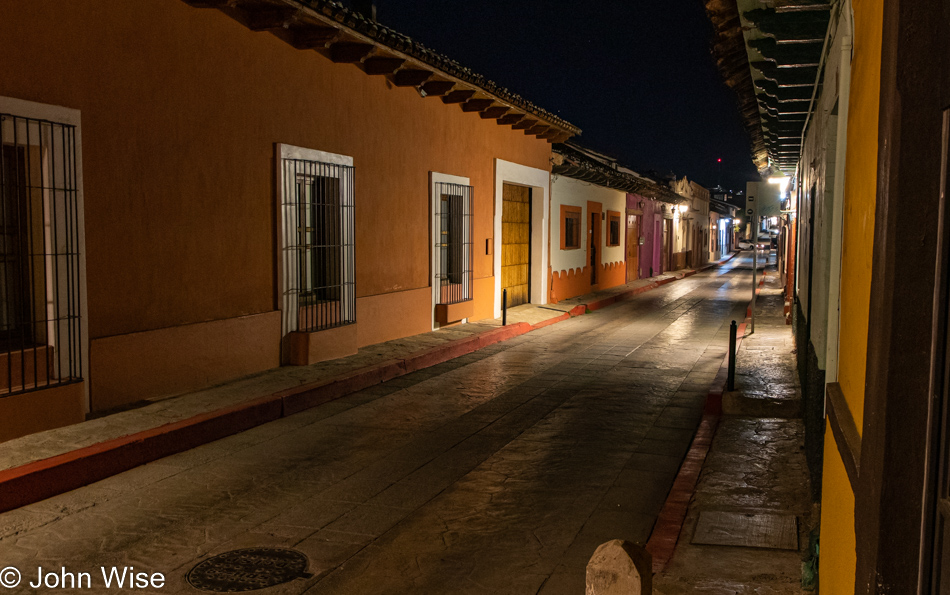
Contrary to the appearance of things, the streets of San Cristobal are not empty; I simply waited until they appeared that way. All three of these street shots were taken along Calle Dr. José Felipe Flores, where we are staying, and while we wandered over Real de Guadalupe, which appears to be the main tourist street open only for foot traffic, its frantic nature wasn’t operating within my senses of a desired tranquility. Tomorrow, I’ll explain just what it is we are doing all the way down here, close to Guatemala.
